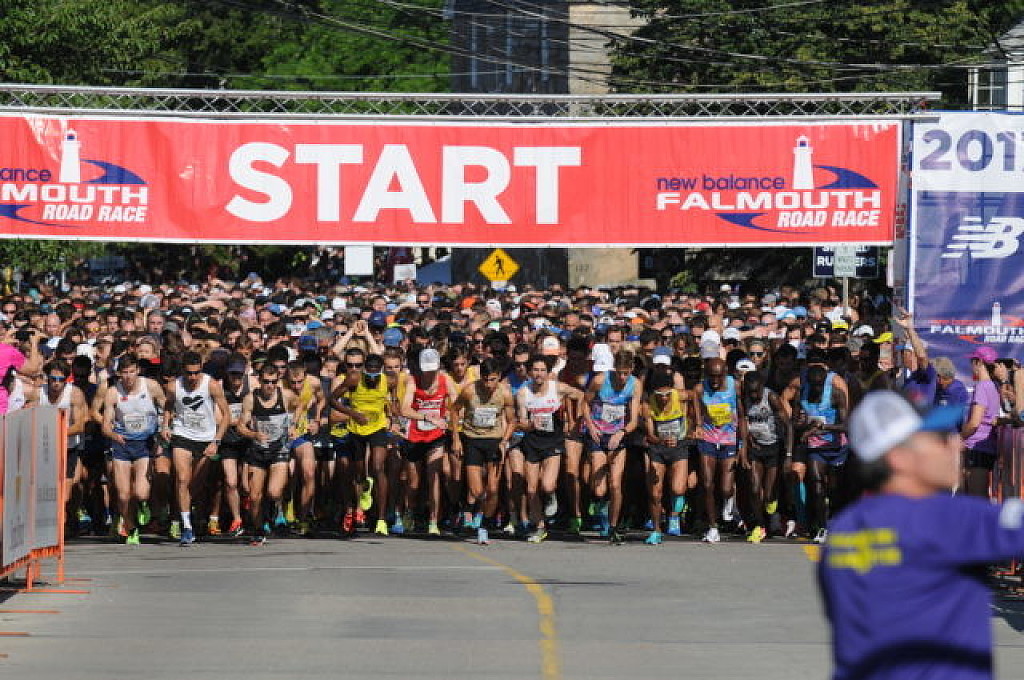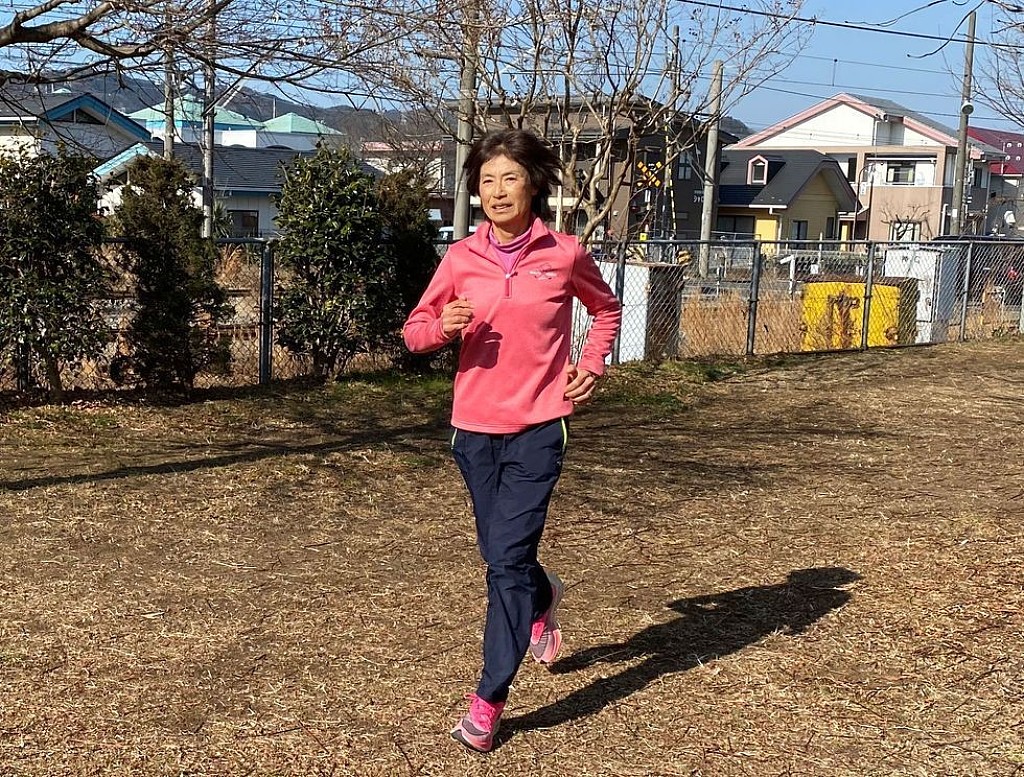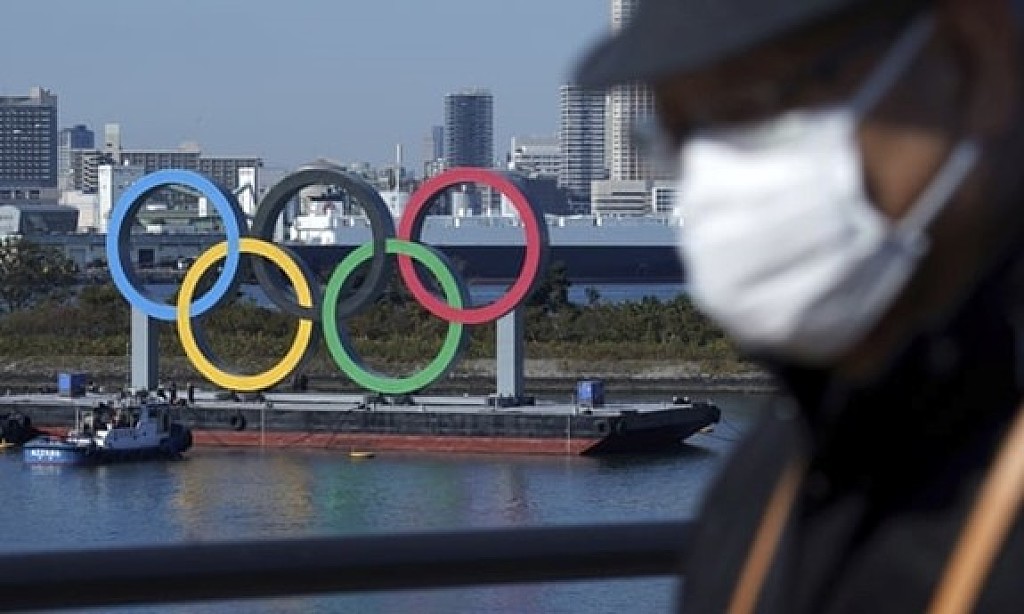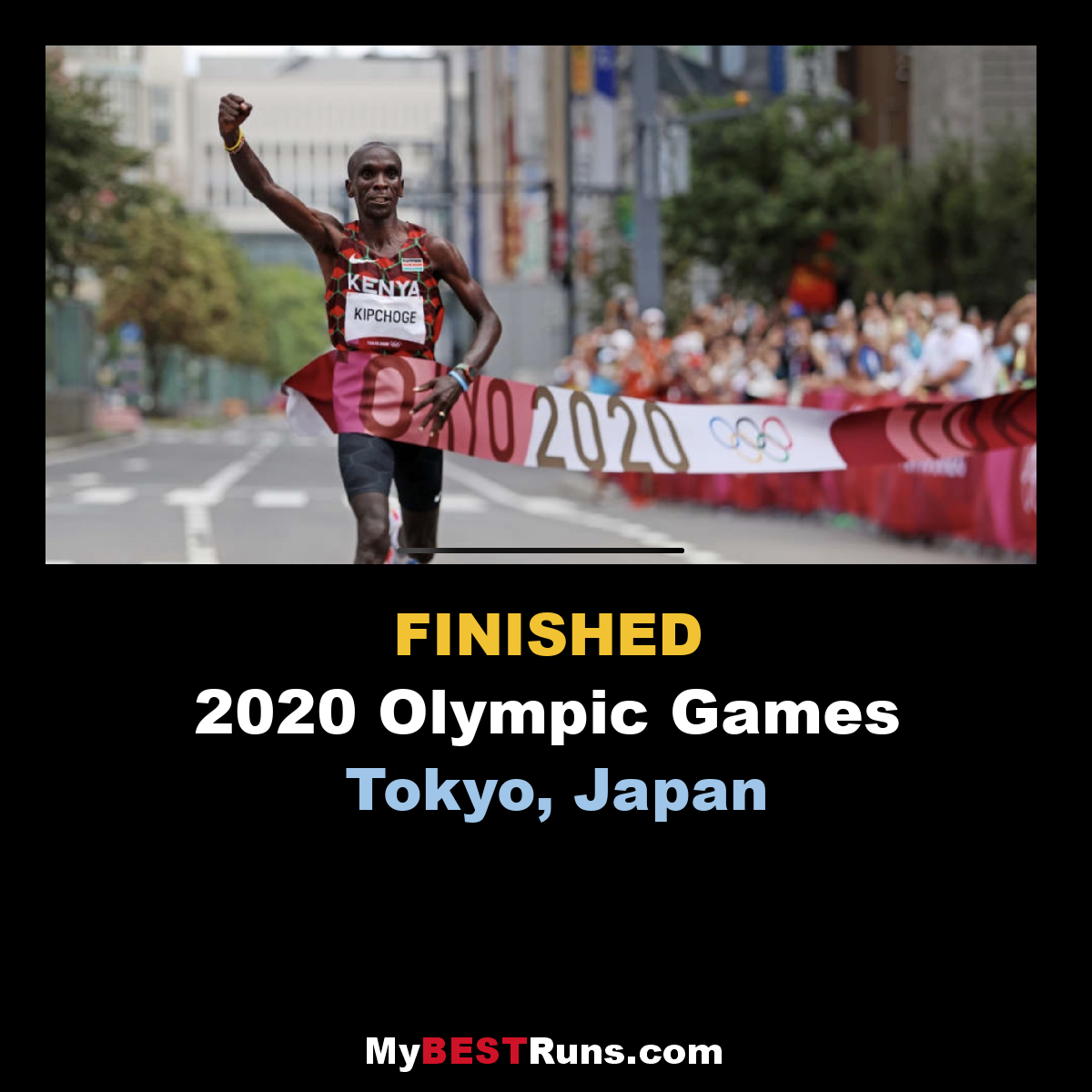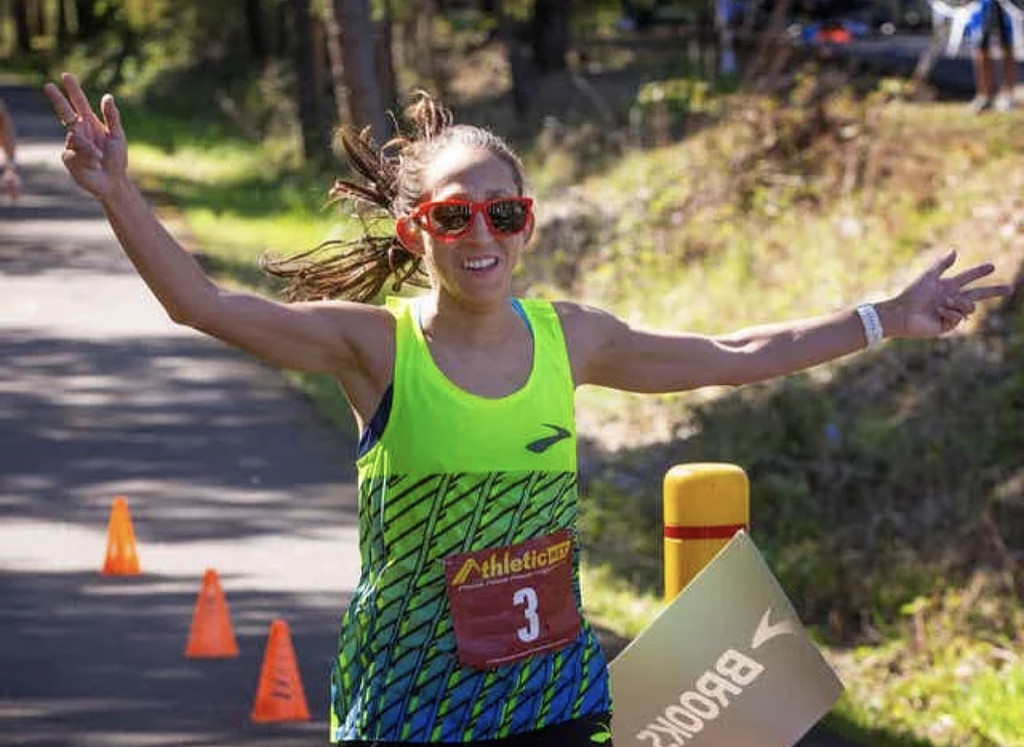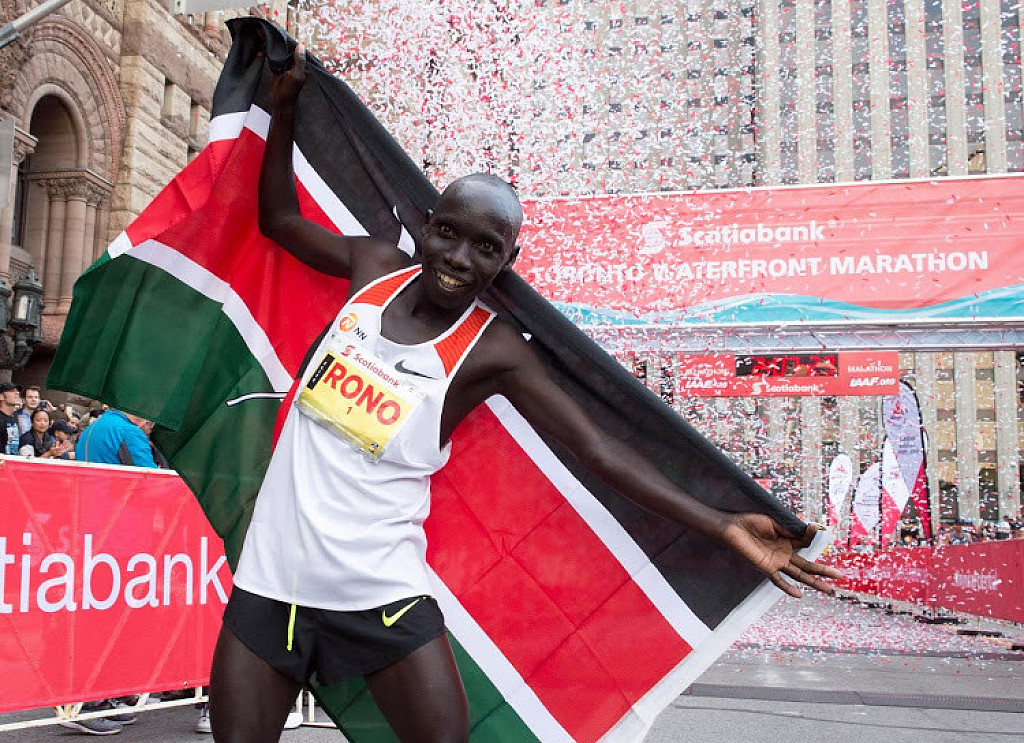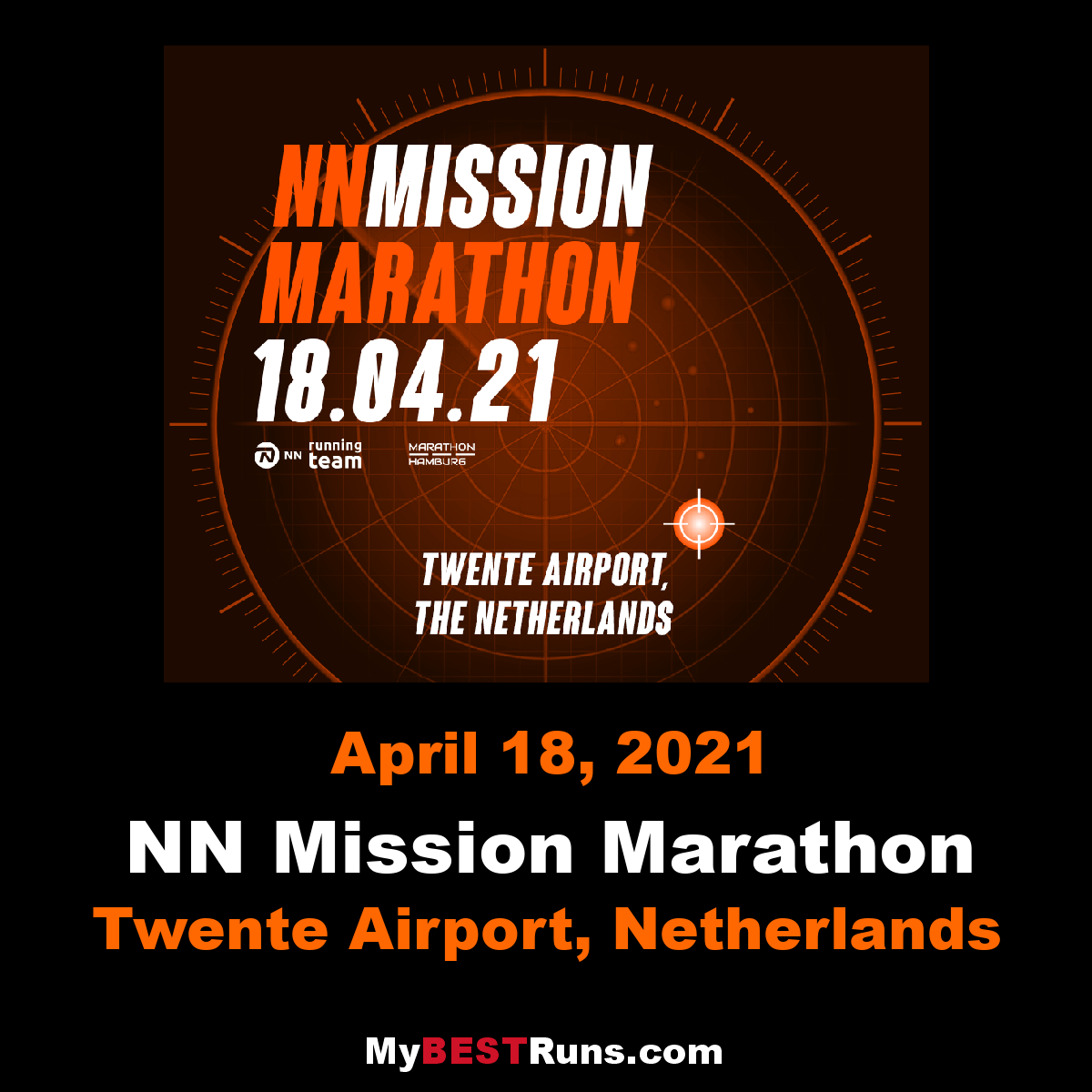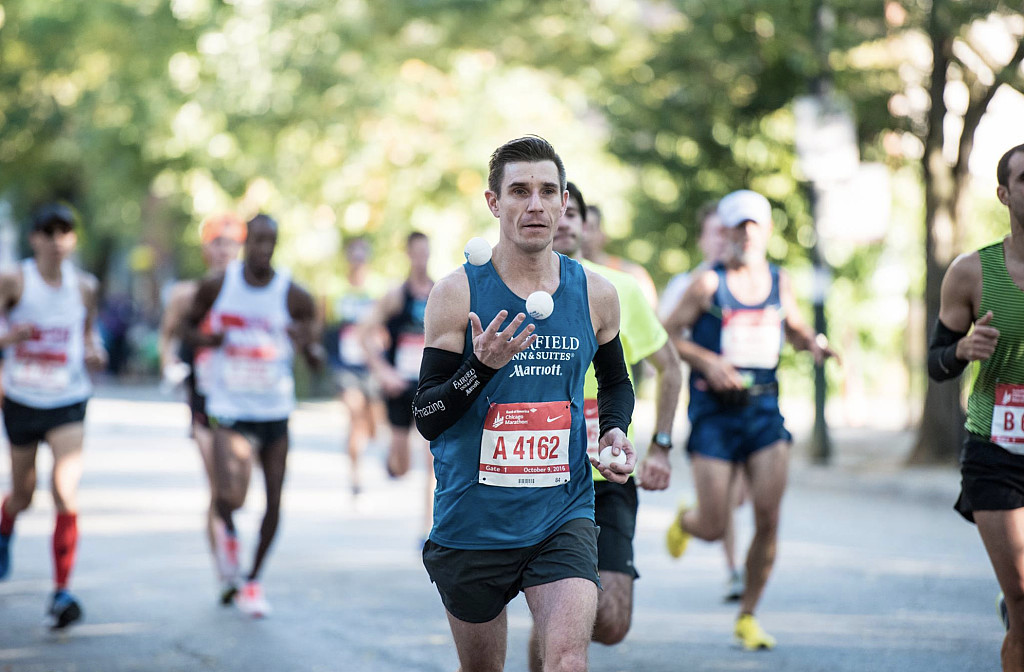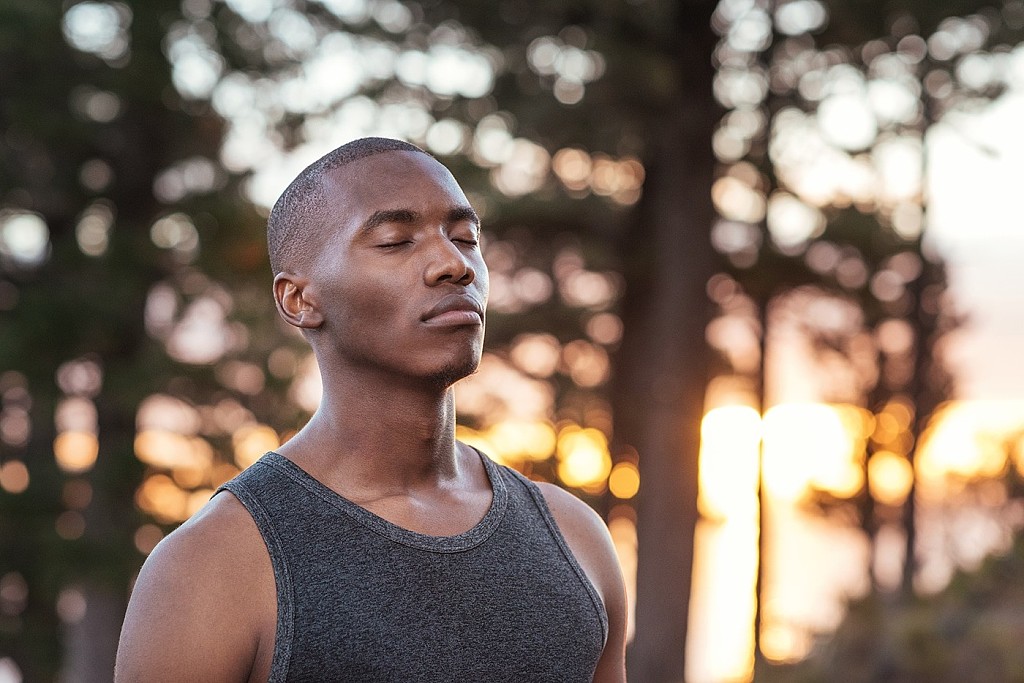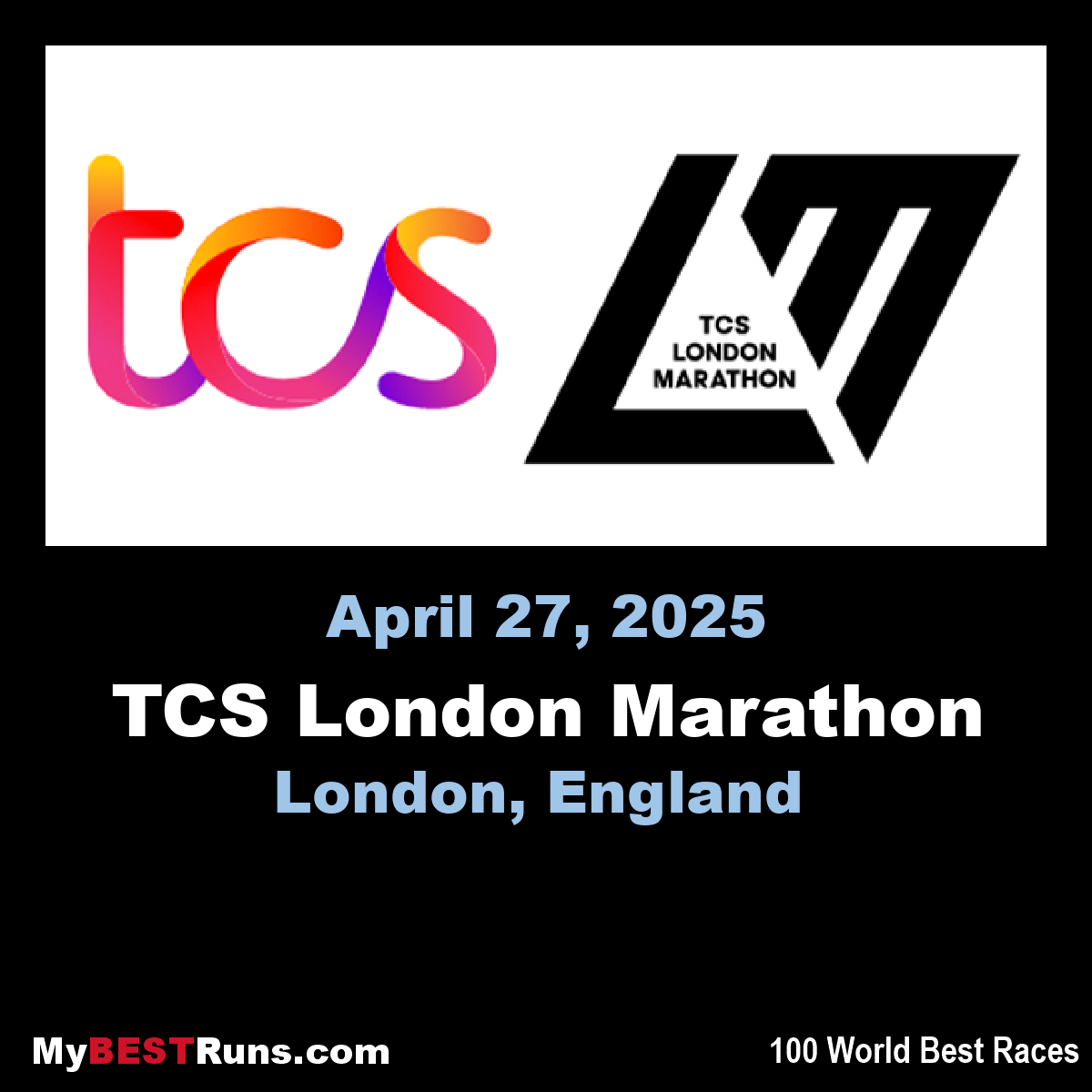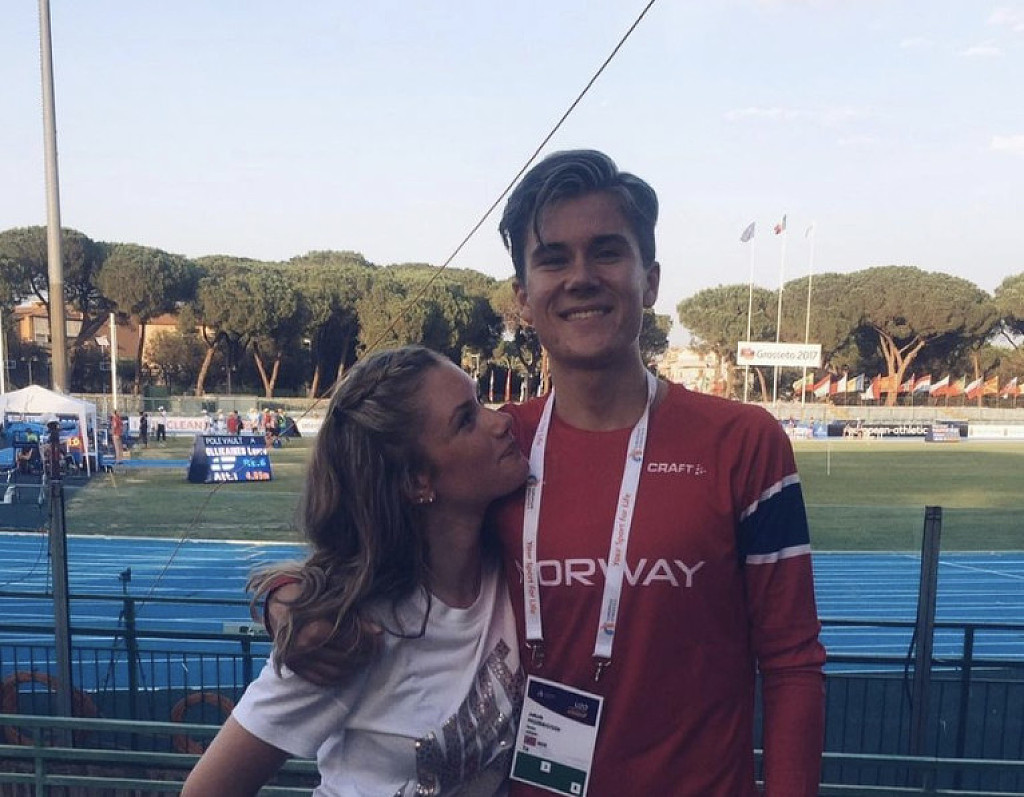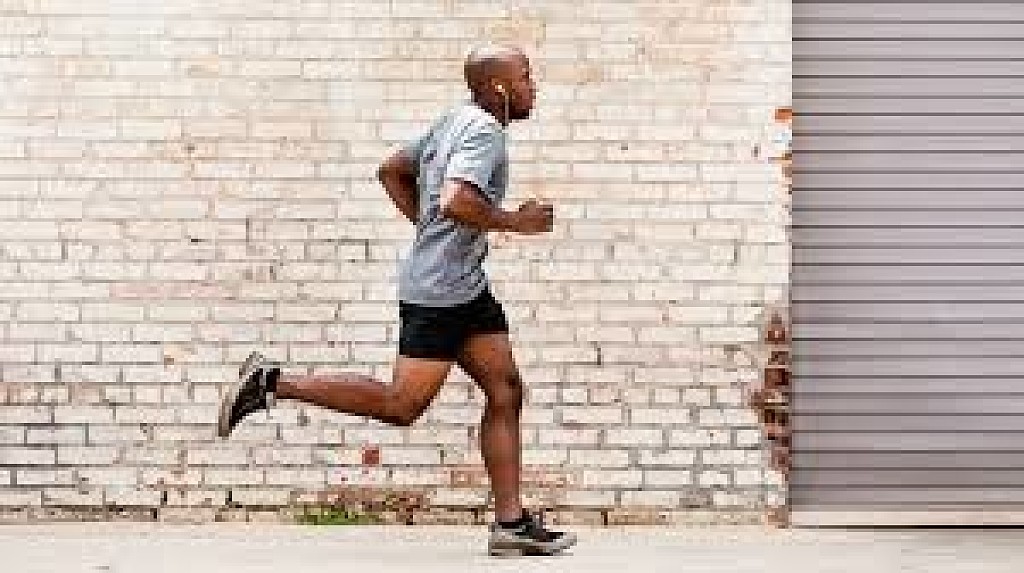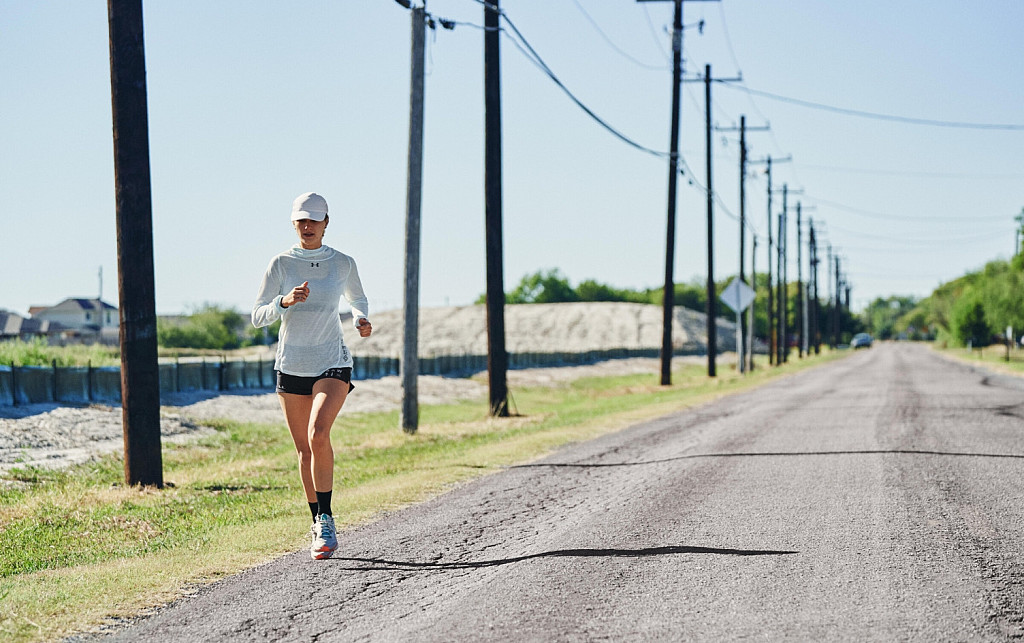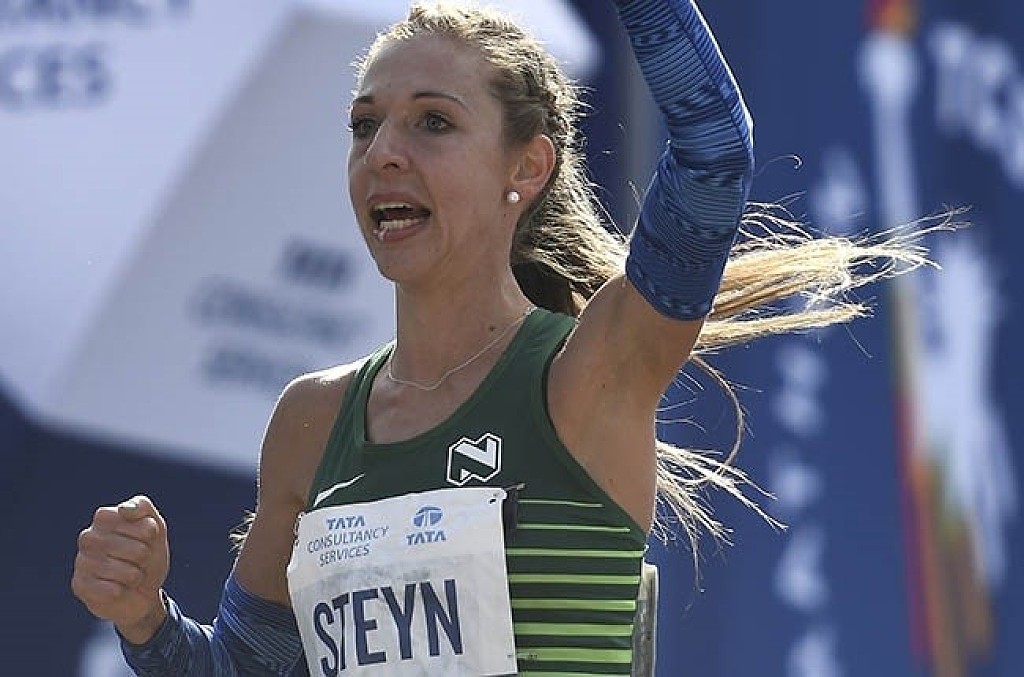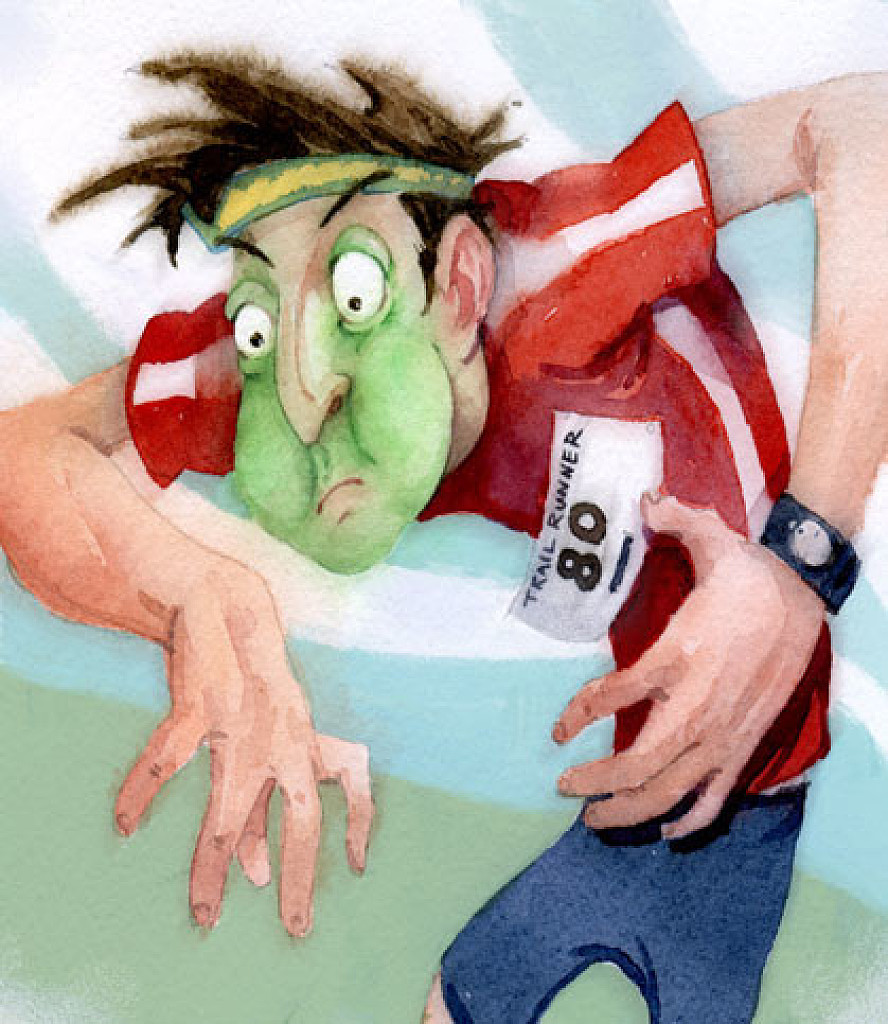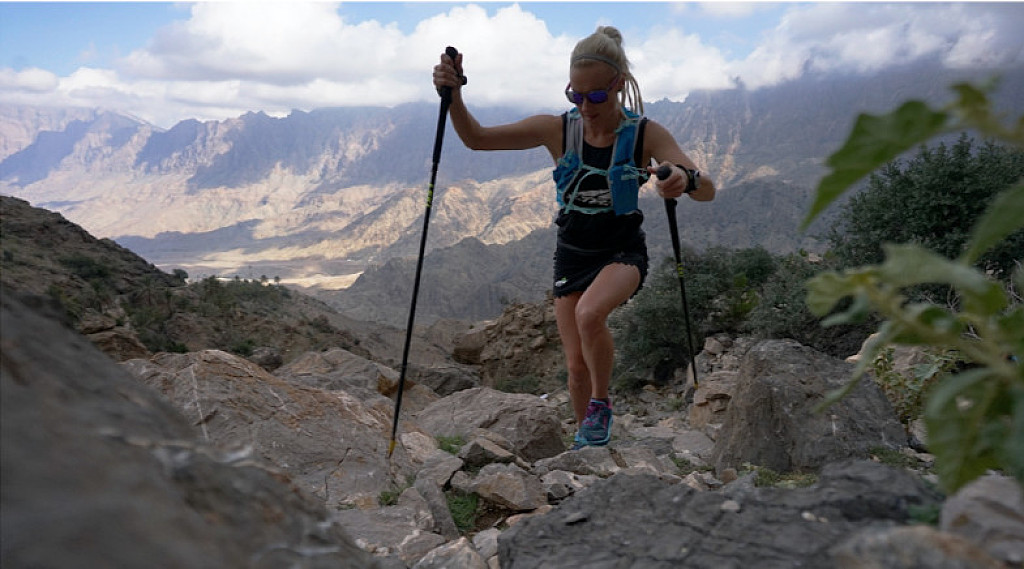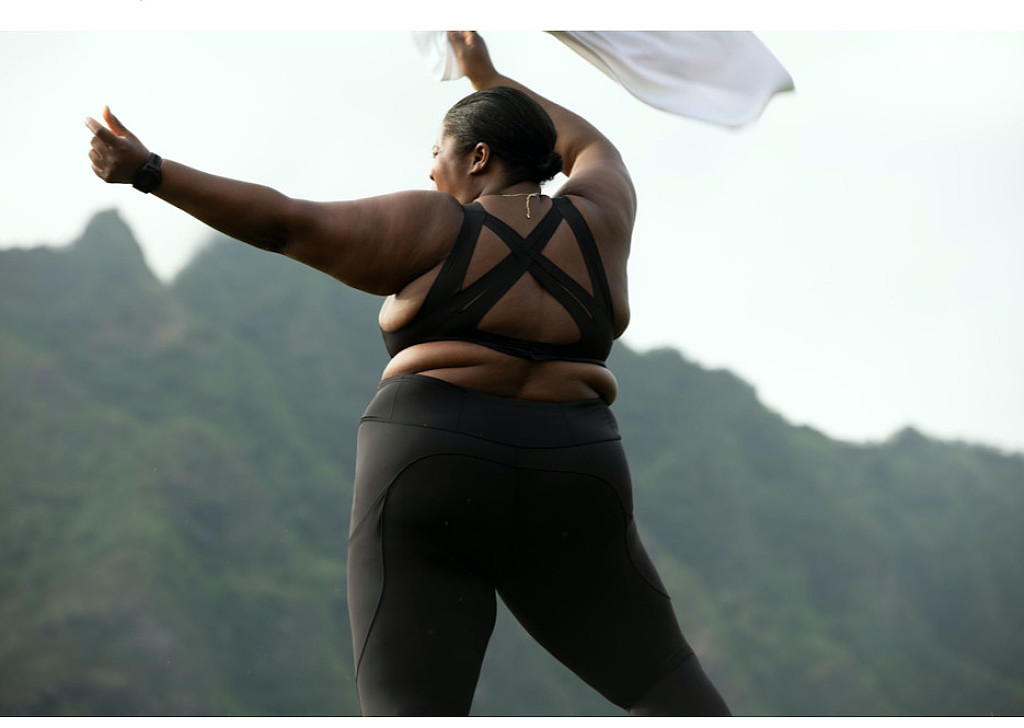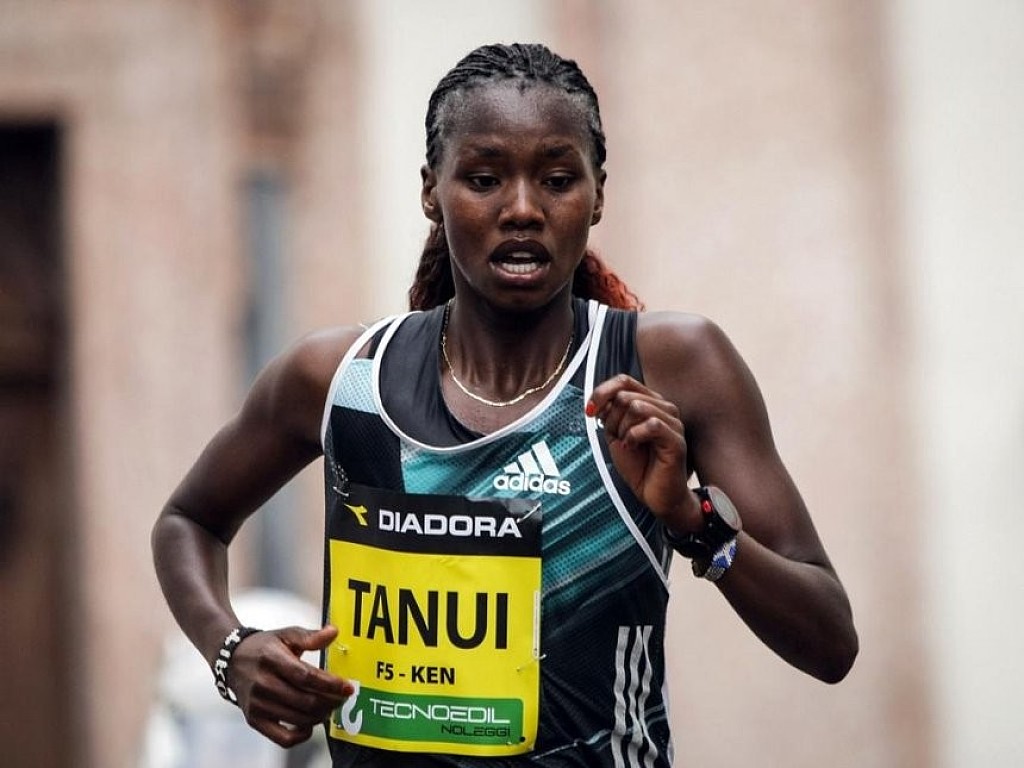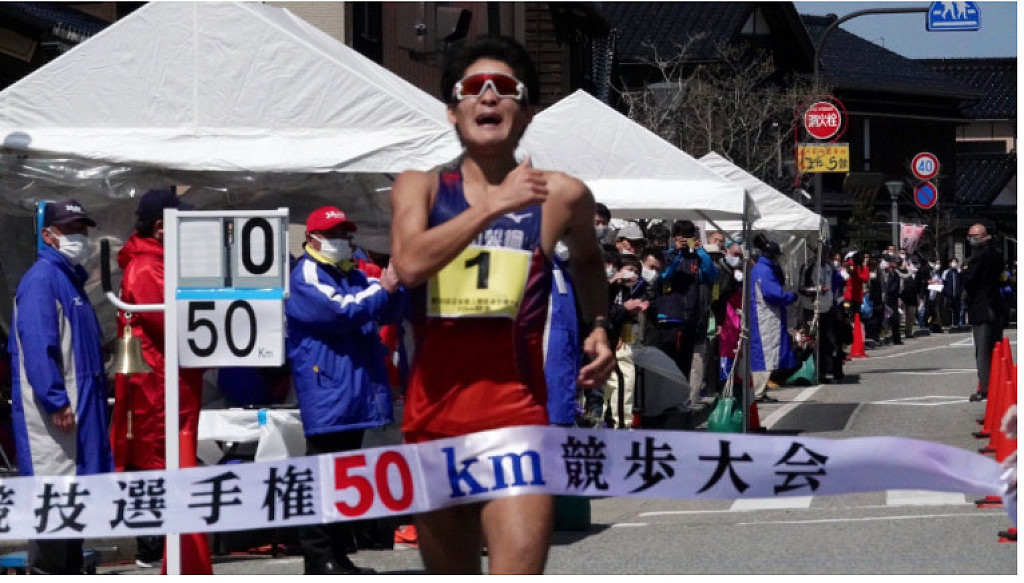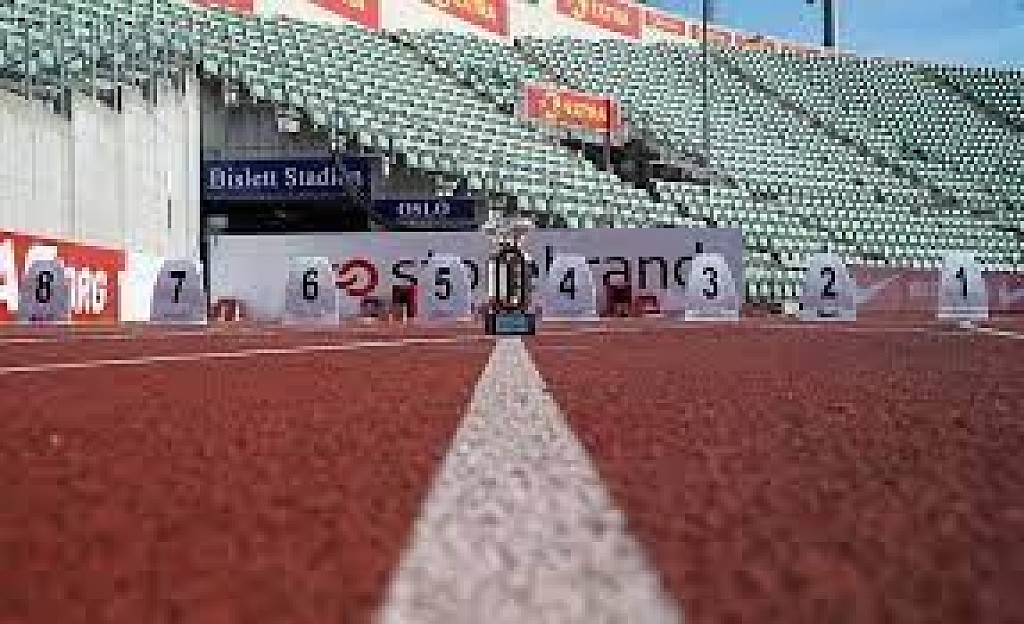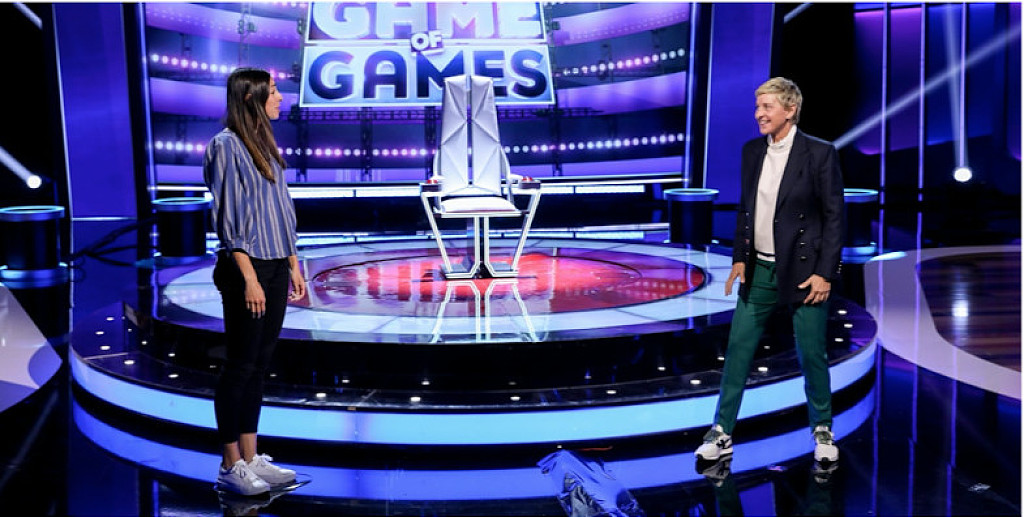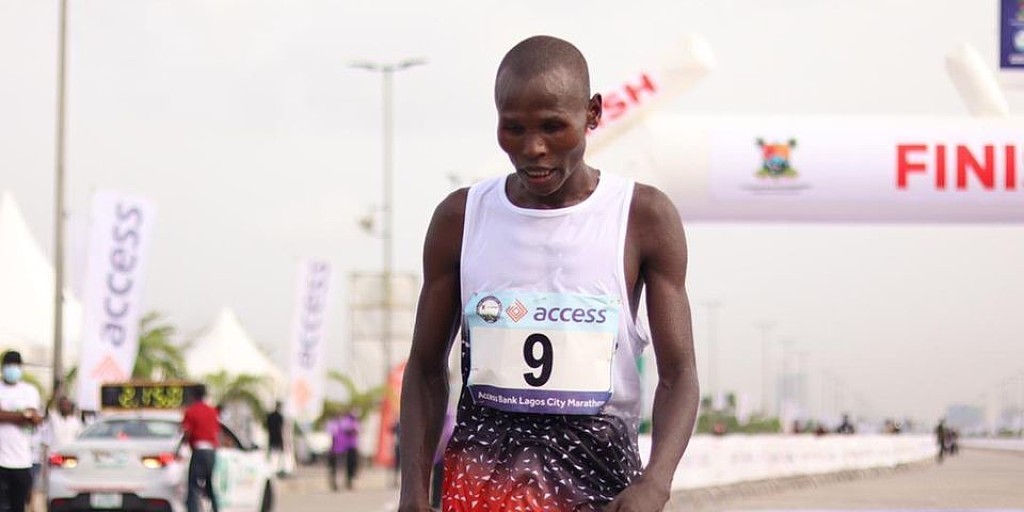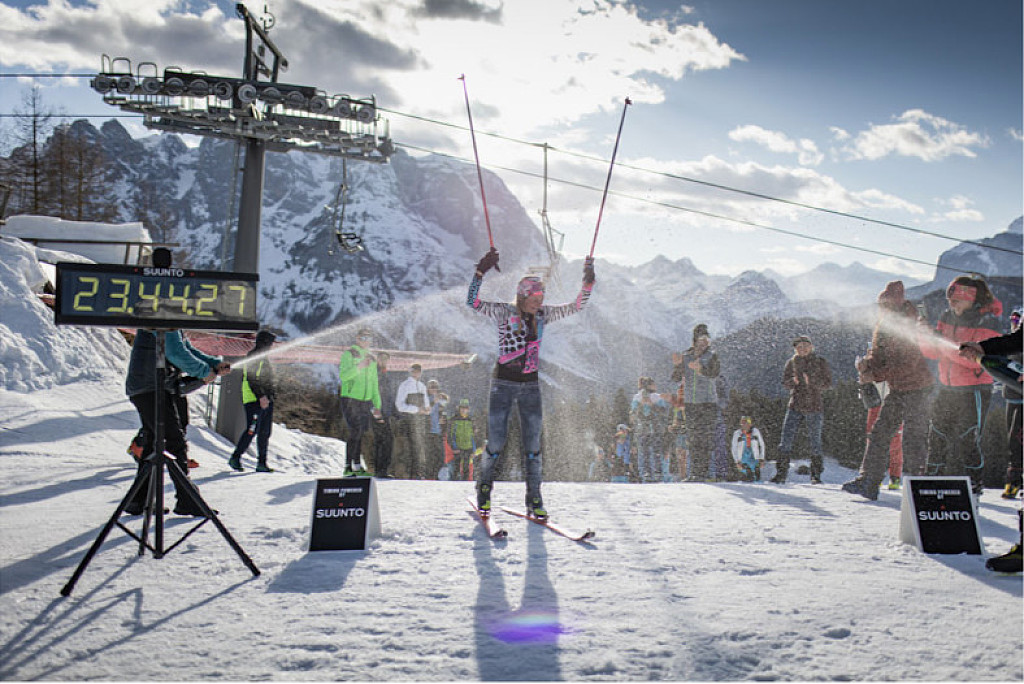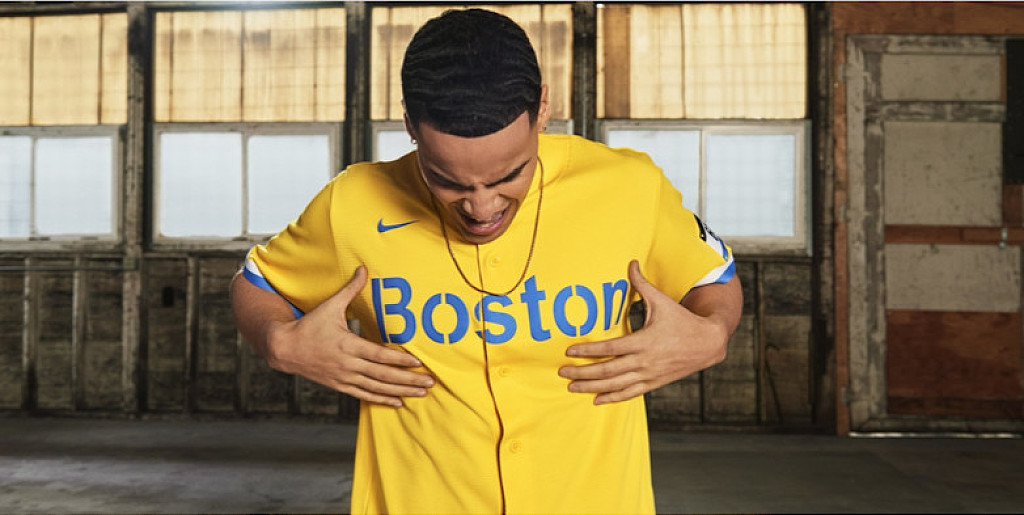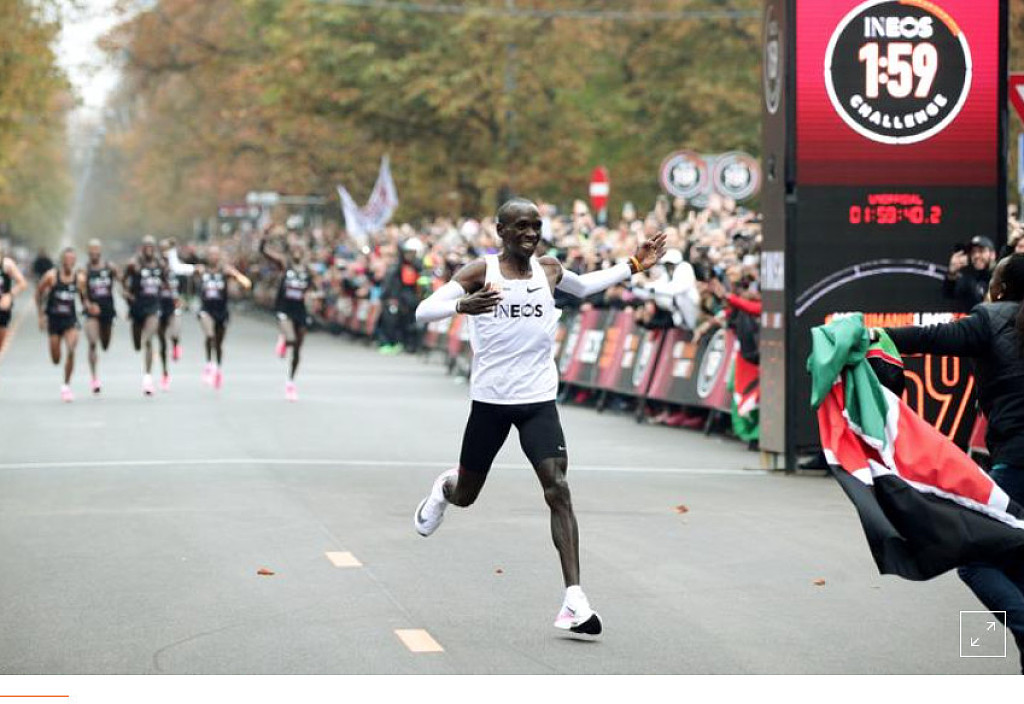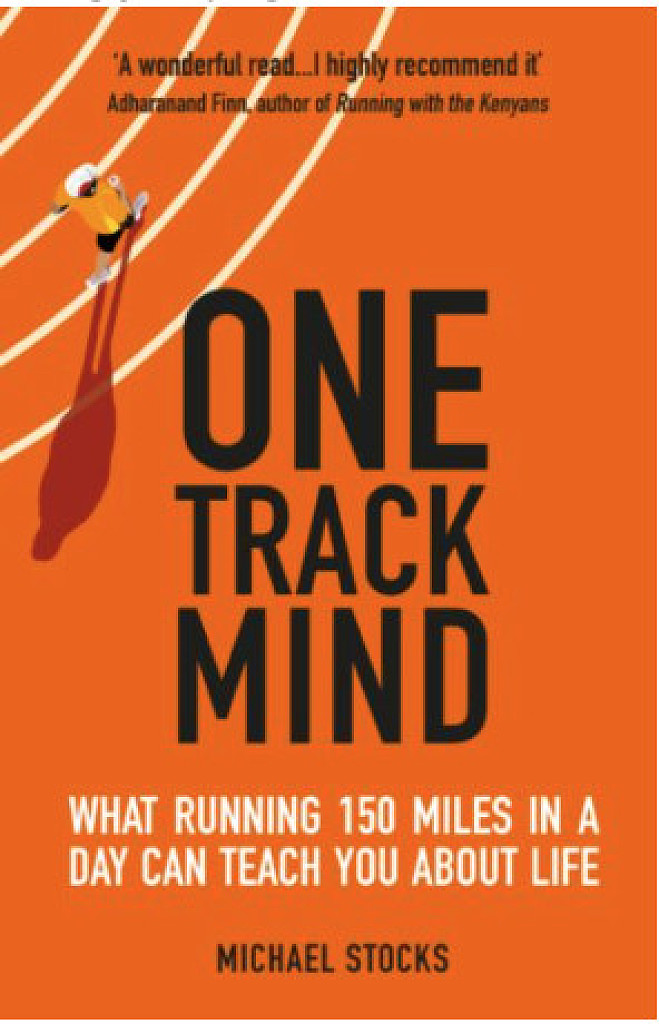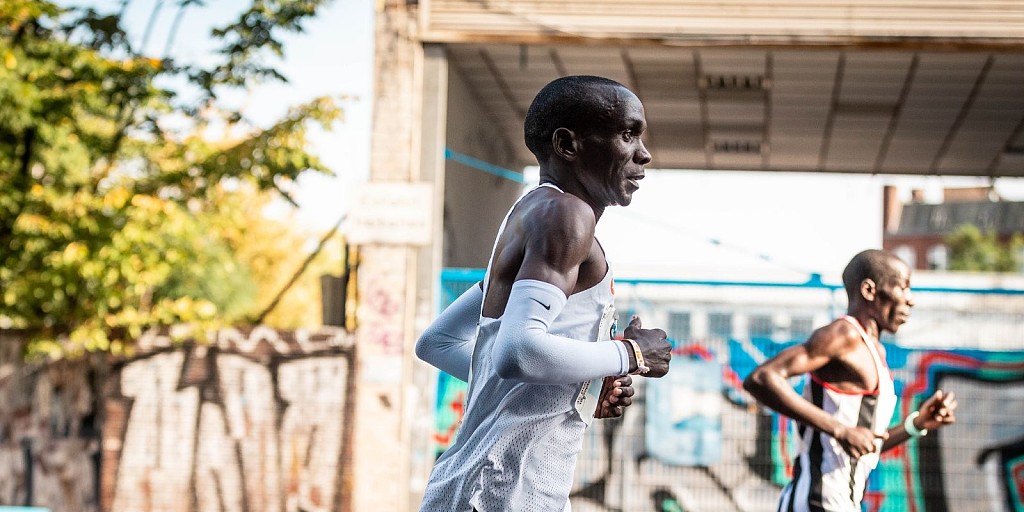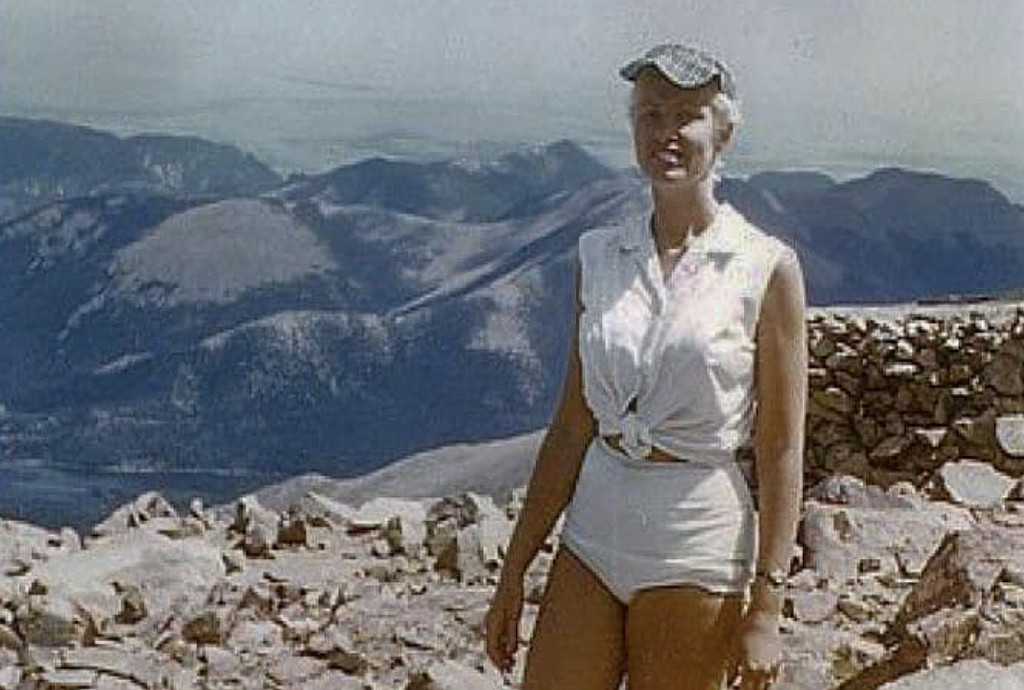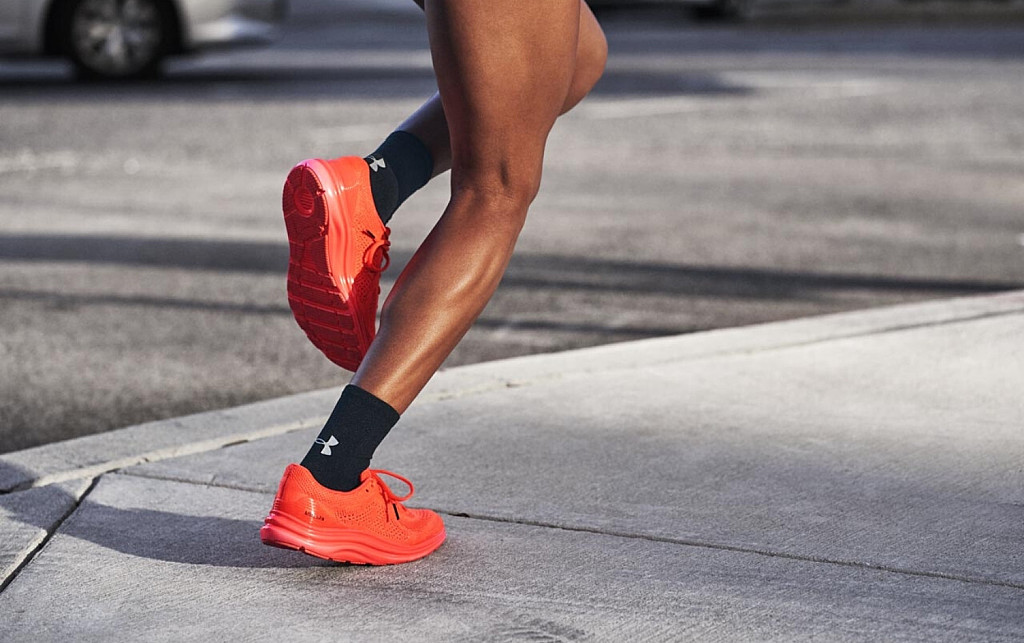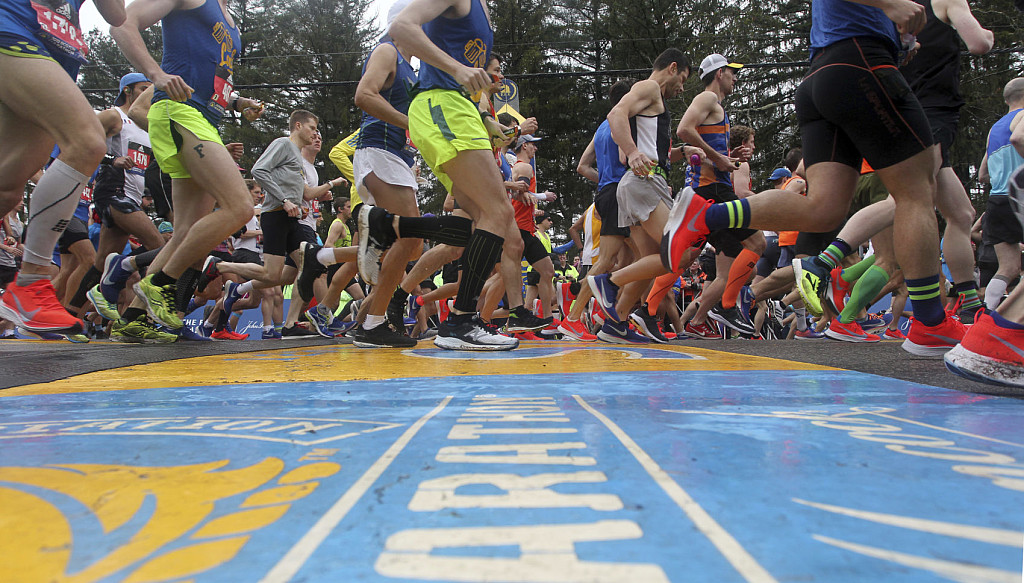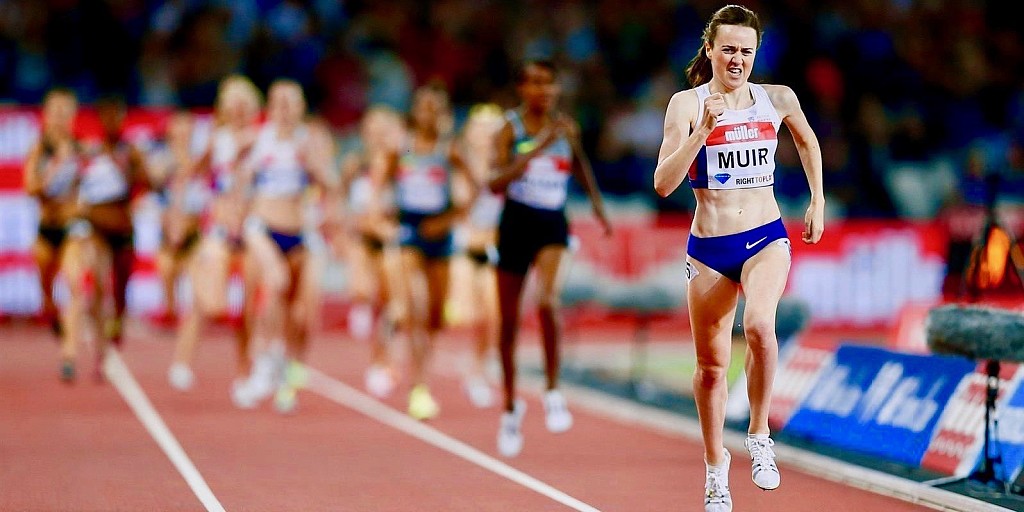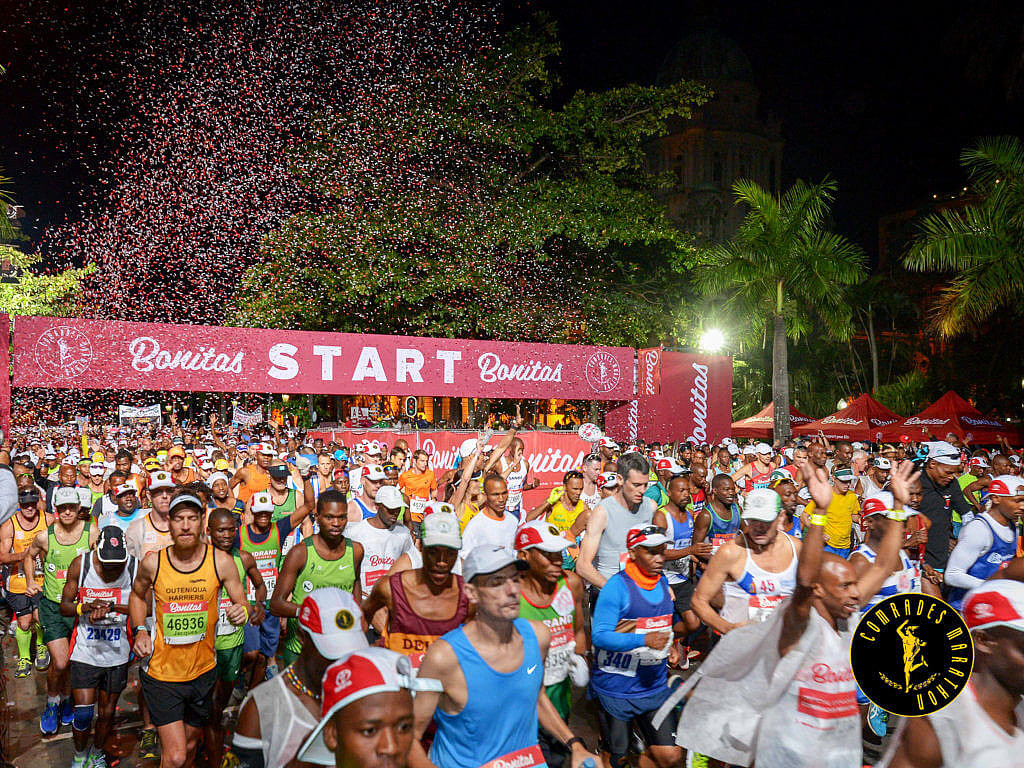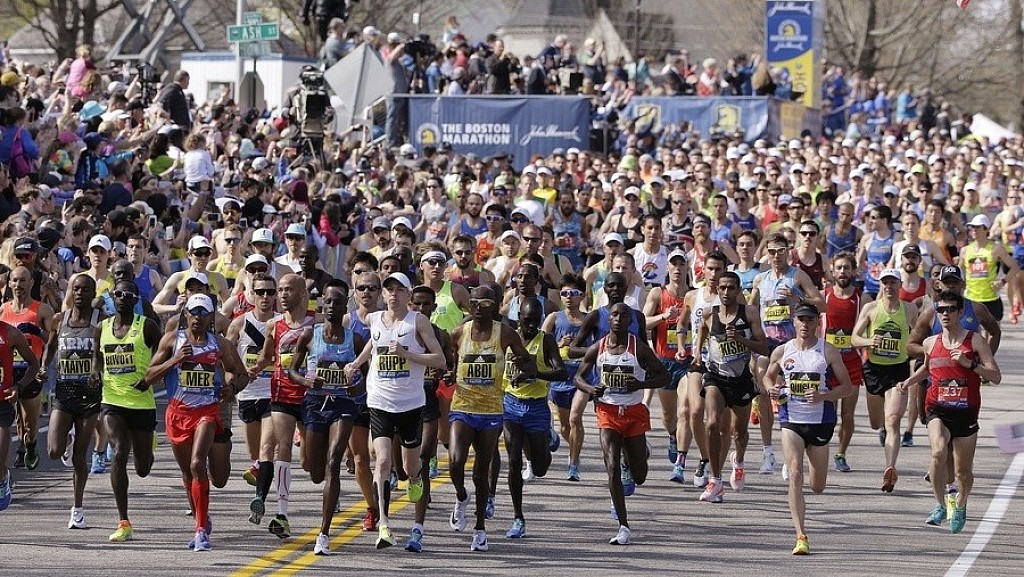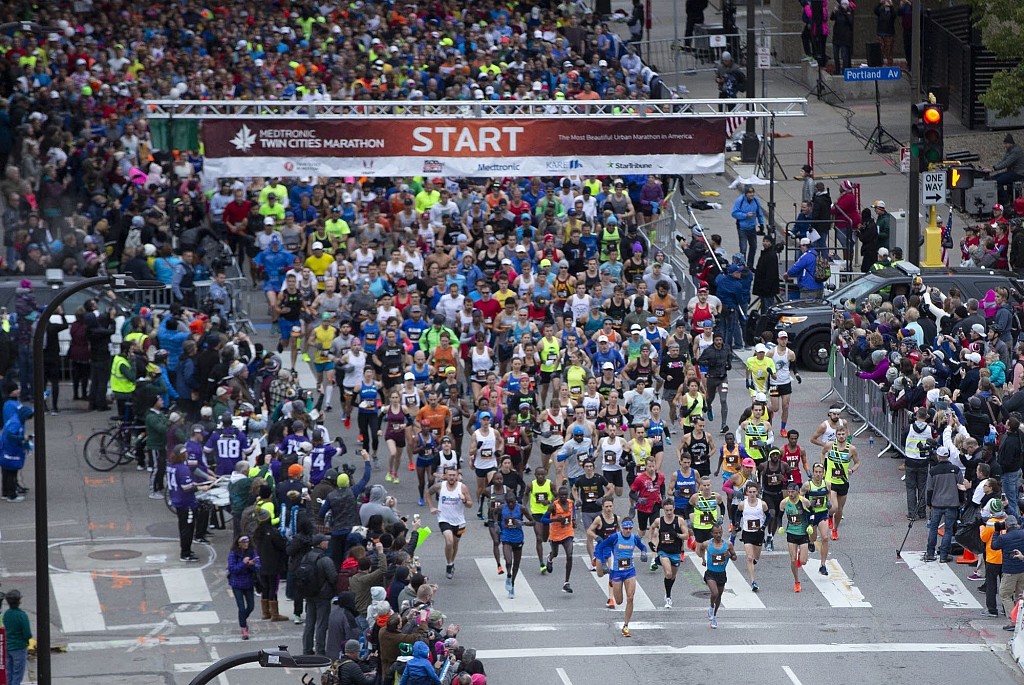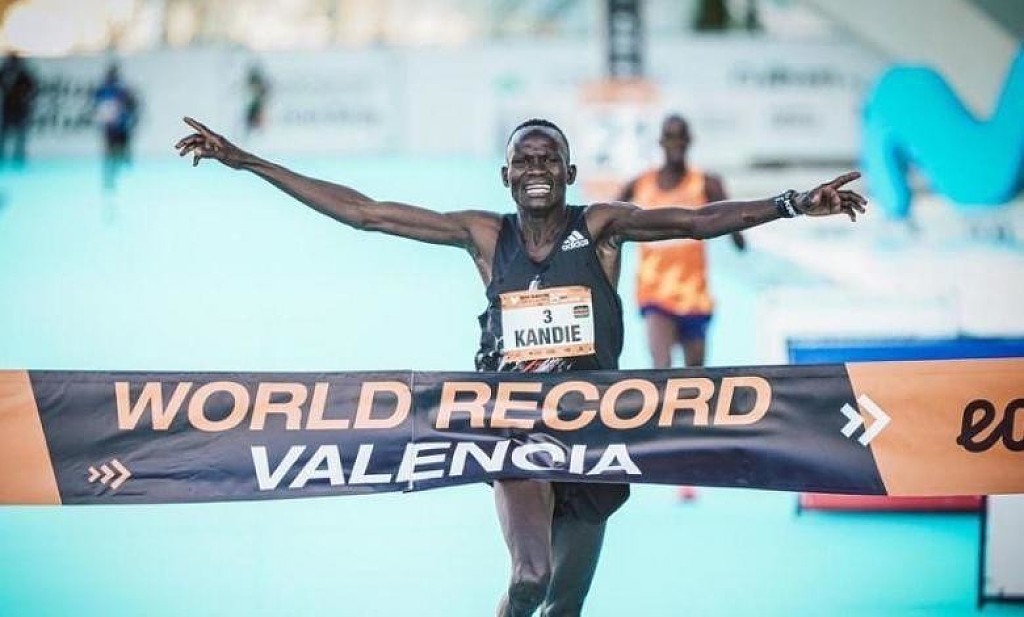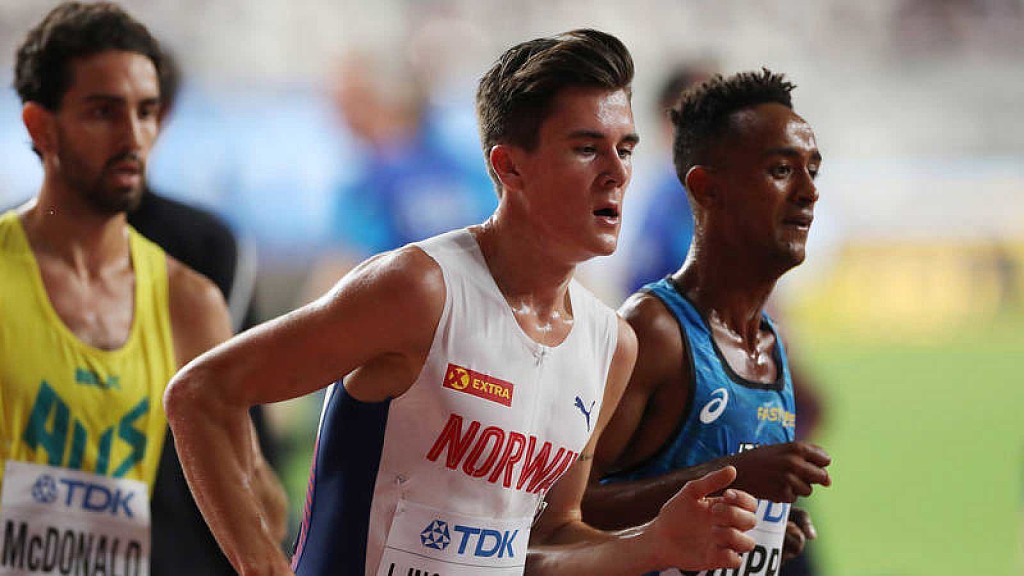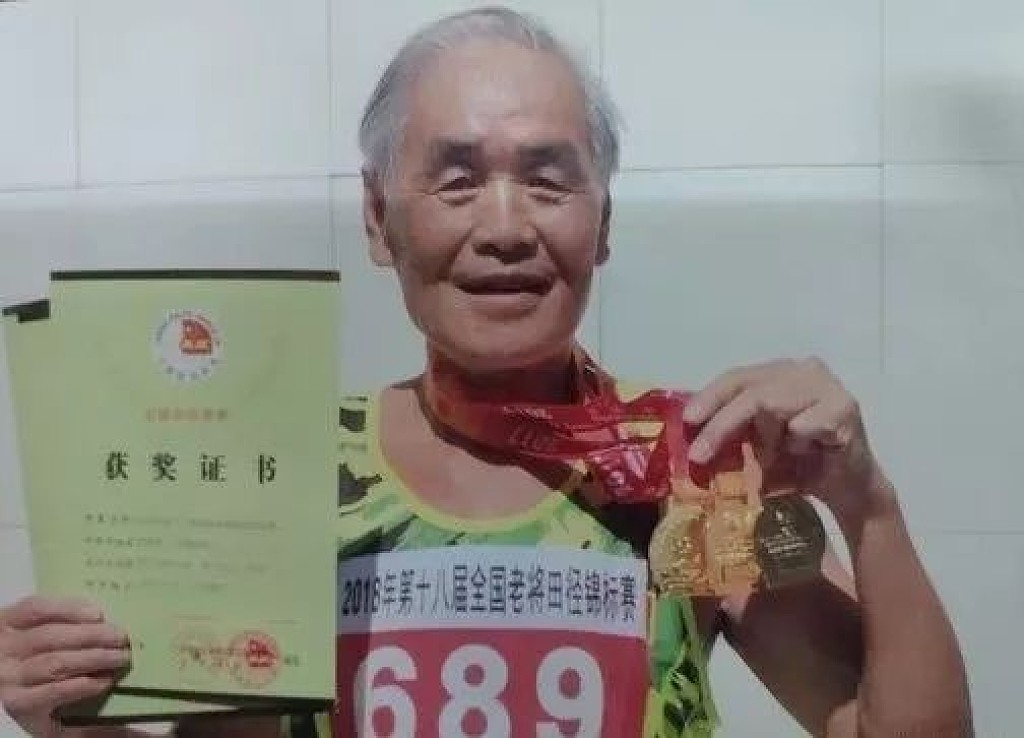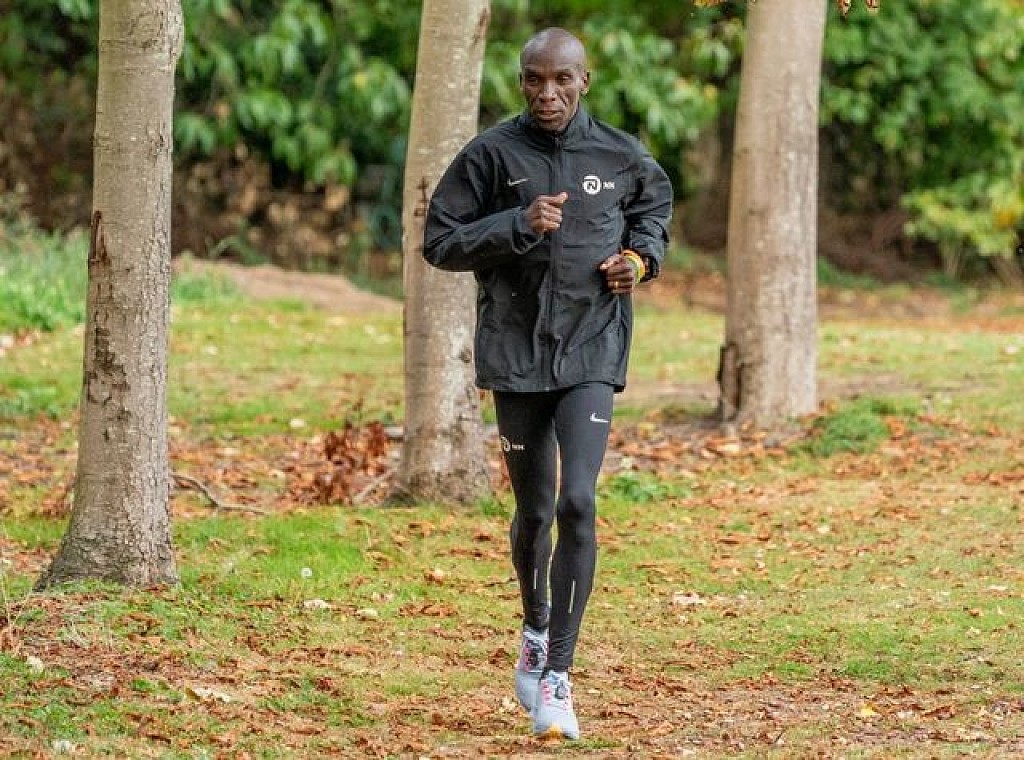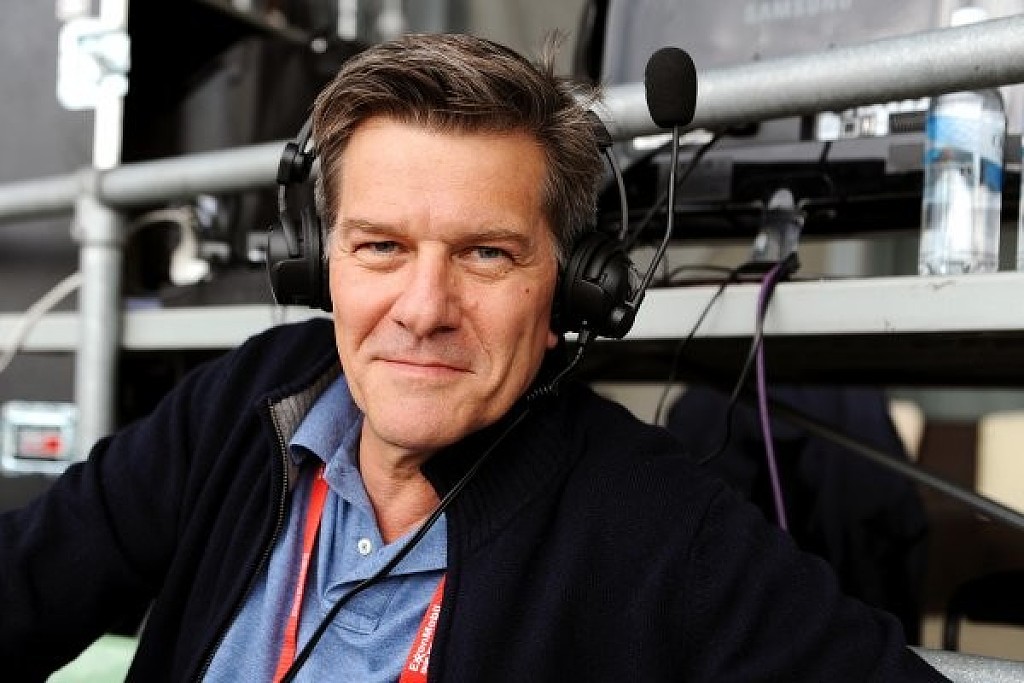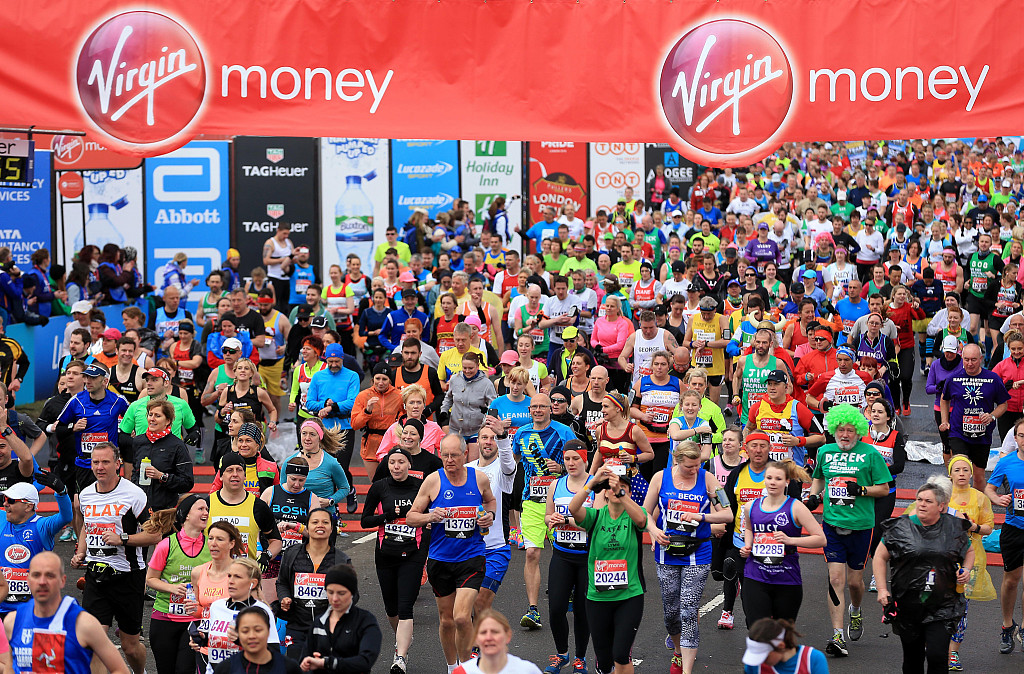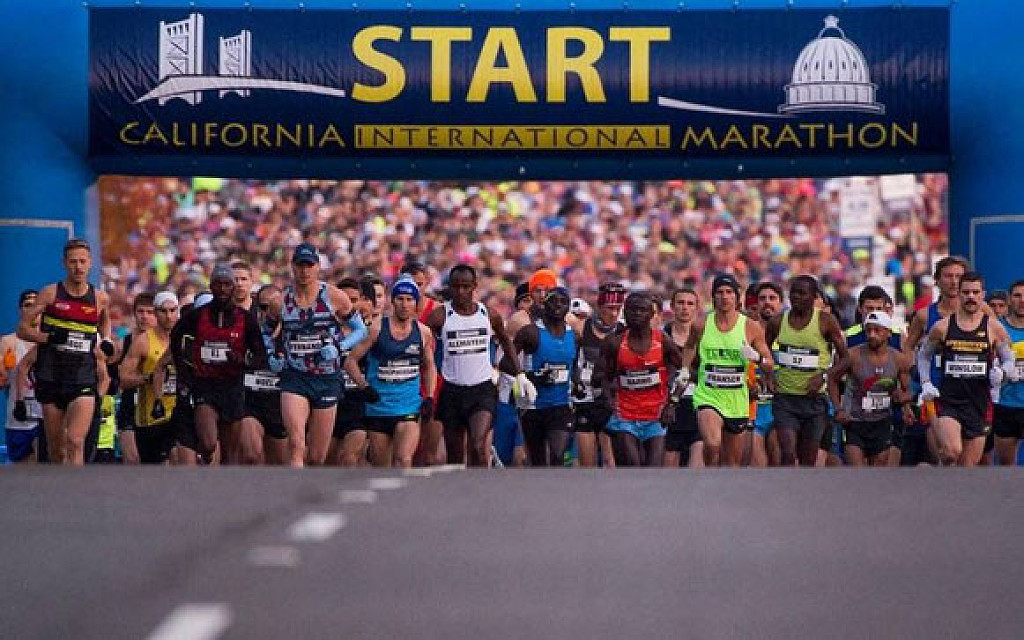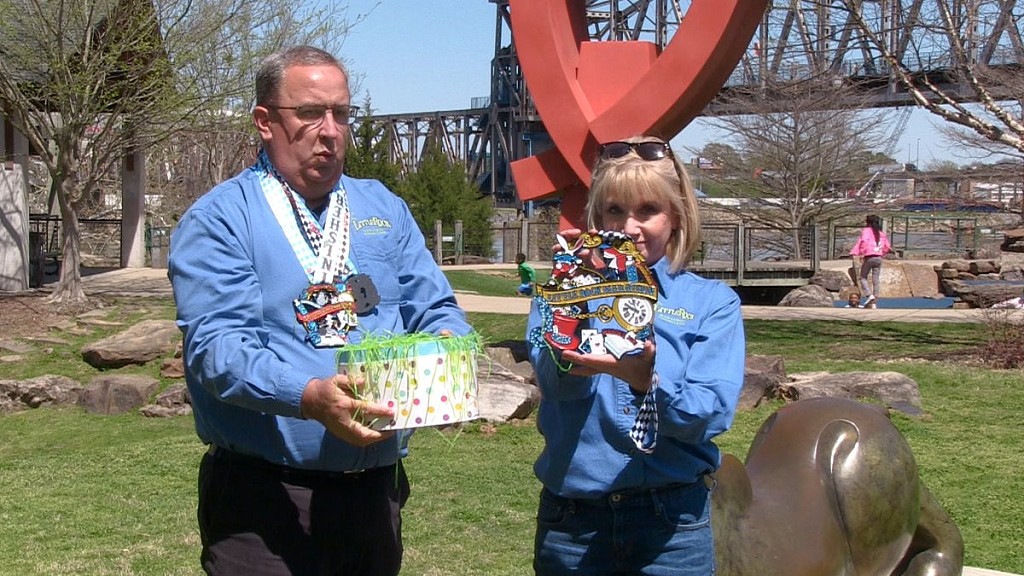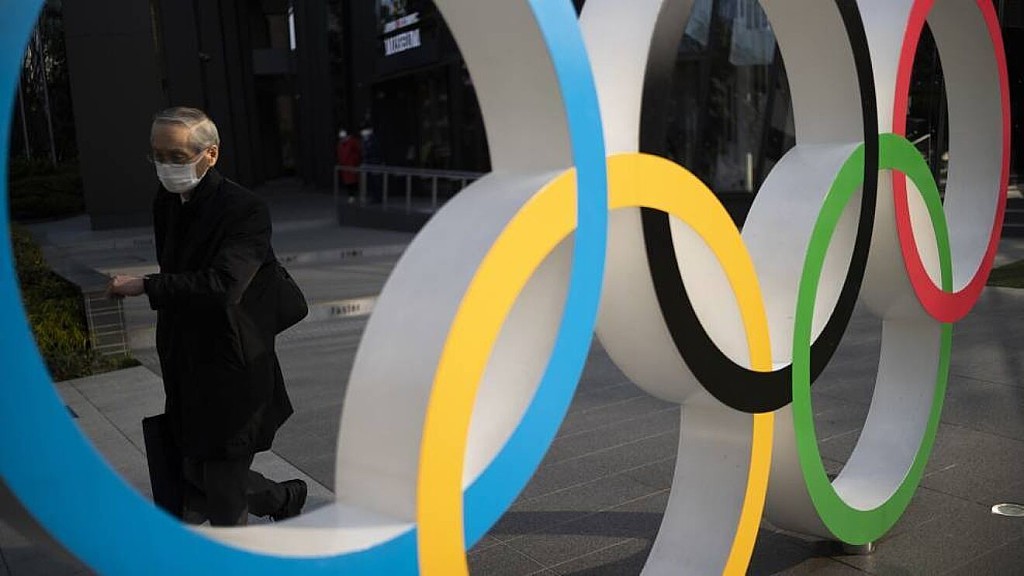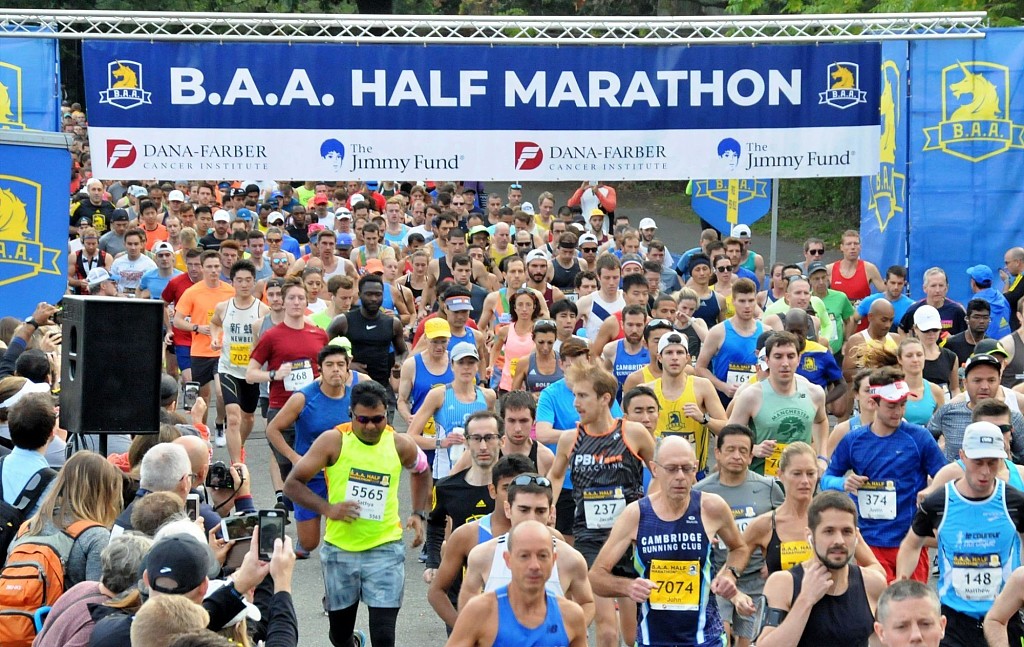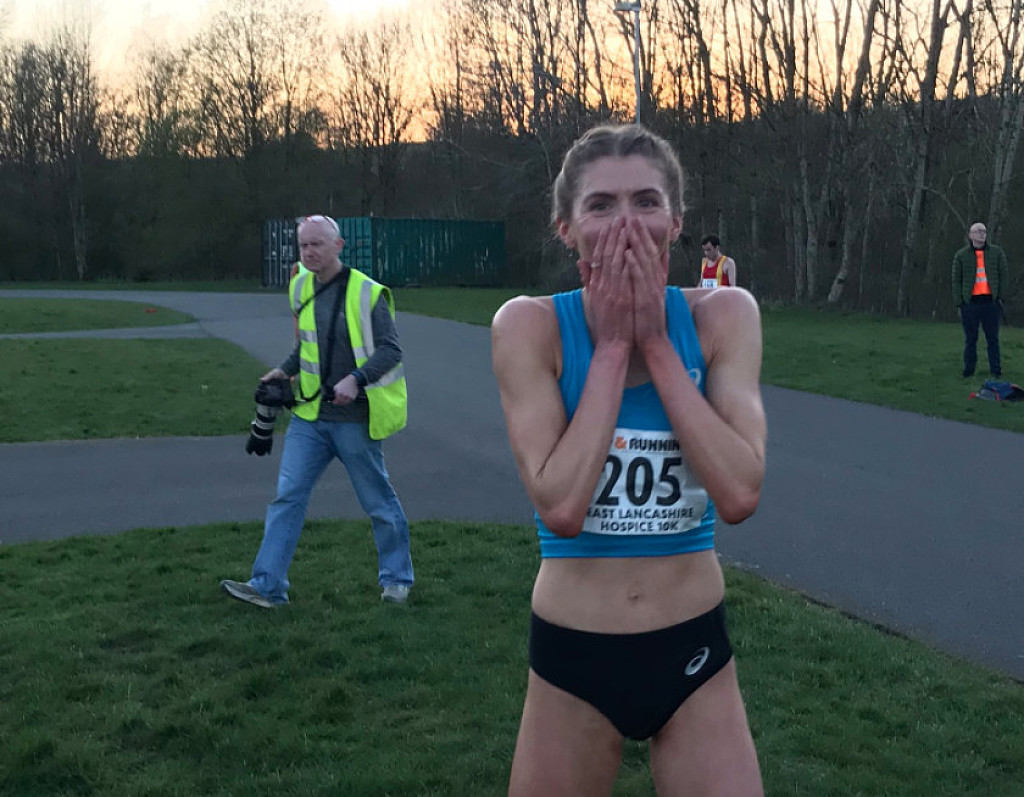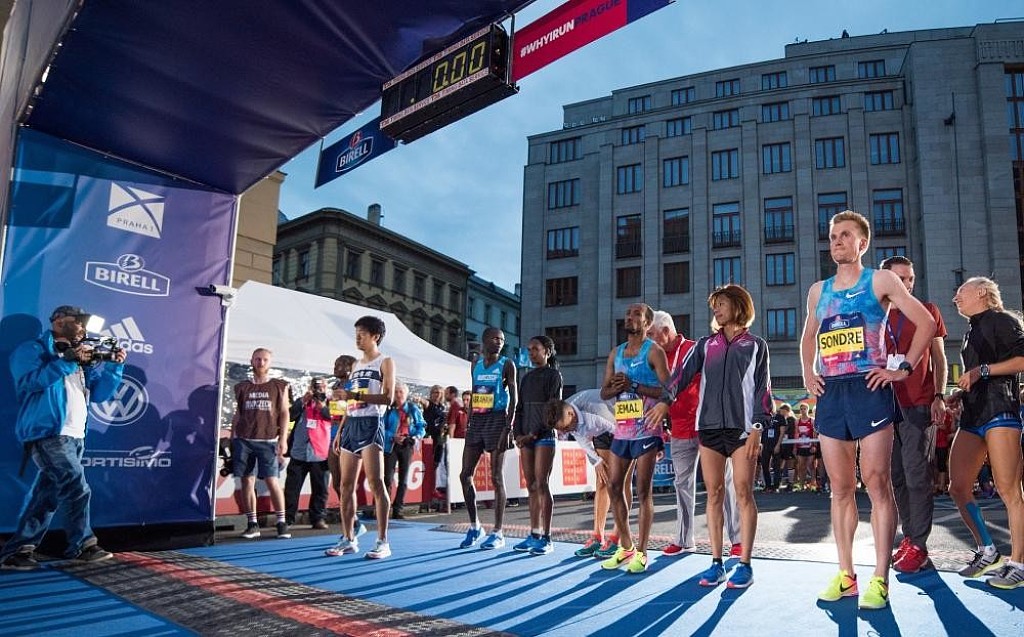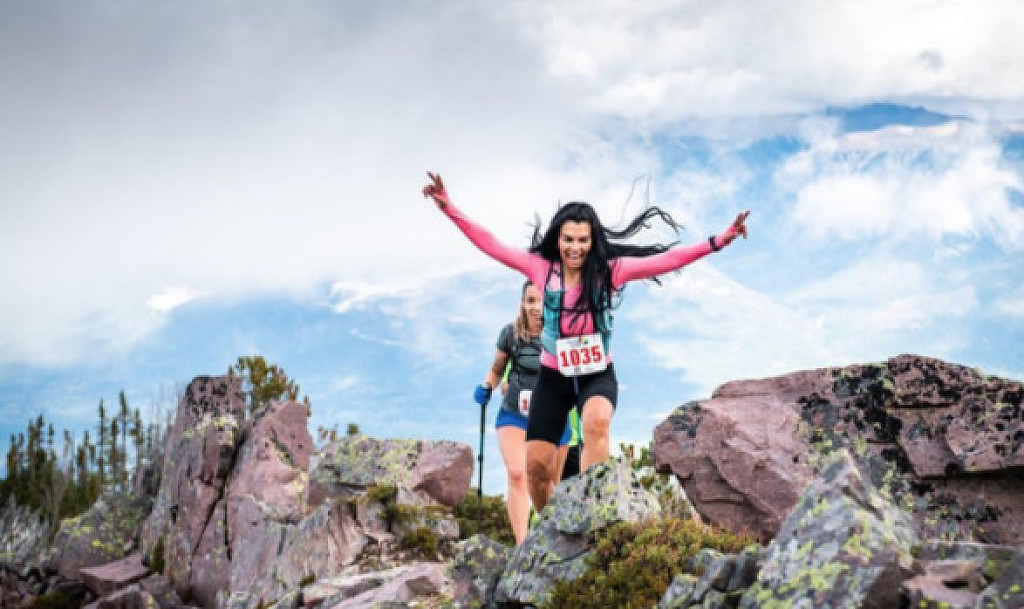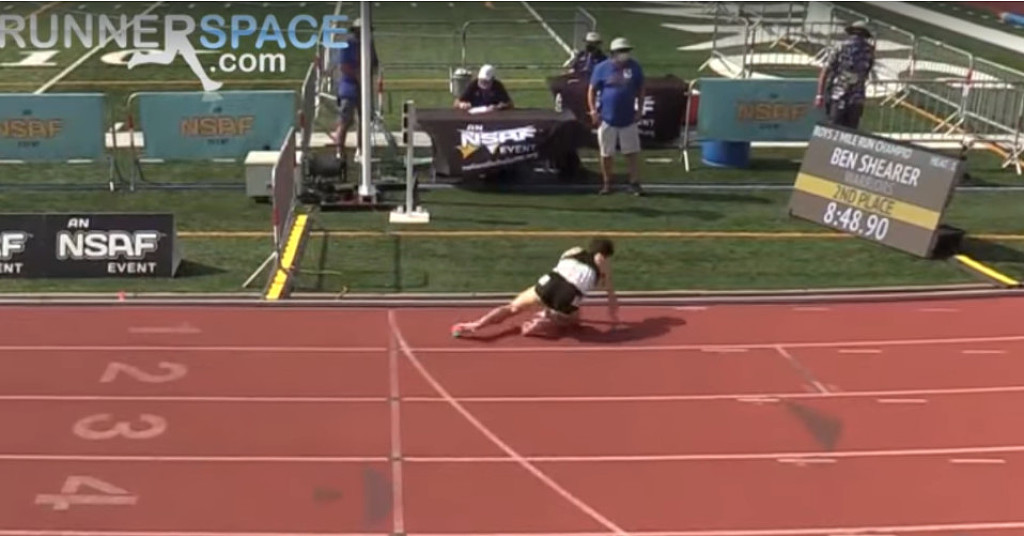Running News Daily
Running News Daily is edited by Bob Anderson in Mountain View, California USA and team in Thika Kenya, La Piedad Mexico, Bend Oregon, Chandler Arizona and Monforte da Beira Portugal. Send your news items to bob@mybestruns.com Advertising opportunities available. Over one million readers and growing. Train the Kenyan Way at KATA Running Retreat Kenya. (Kenyan Athletics Training Academy) in Thika Kenya. Opening in june 2024 KATA Running retreat Portugal. Learn more about Bob Anderson, MBR publisher and KATA director/owner, take a look at A Long Run the movie covering Bob's 50 race challenge.
Index to Daily Posts · Sign Up For Updates · Run The World Feed
Falmouth Road Race and At-Home Edition registration opens May 1
While the ASICS Falmouth Road Race awaits COVID-19 guidance from the Commonwealth of Massachusetts and the Town of Falmouth on hosting an in-person event in 2021, registration will open Saturday, May 1 for the At-Home Edition – with the possibility of running the in-person race, if held, on August 15.
During the At-Home Edition registration process, an option will be offered to run the in-person event. Choosing that option will place At-Home registrants in a random-selection drawing to run the in-person ASICS Falmouth Road Race on August 15.
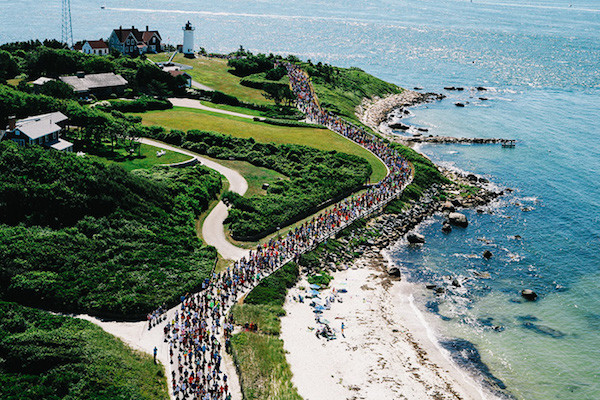
This will be the only opportunity to be considered for the in-person race. Those not selected, based on the total field size allowed, will still be registered for the At-Home Edition, to be run any time from August 7 to August 14.

Registration will remain open until 10,000 sign up for the At-Home Edition, regardless of the number who chose the in-person option.
“Our virtual At-Home Edition was a big success last year and was really a summer-long event with giveaways, contests, and an ever-changing virtual gift bag,” said Jennifer Edwards, executive director of Falmouth Road Race, Inc. “If we’re allowed to have an in-person race of some kind, those not chosen in the random-selection process to run the live event on August 15 will still get all the perks of the At-Home version.”
On the registration form, Falmouth residents and taxpayers – who typically are guaranteed entry to the in-person event – will be able to declare that status. Depending on the field size allowed, the race may or may not be able to guarantee resident/taxpayer entry to the in-person race in 2021.
Last year, the first 5,000 entrants to the 2020 At-Home Edition were given guaranteed status for 2021. Because there is no certainty of an in-person race, those 5,000 have been given the option to defer their guaranteed status to the 50th running instead of this year. The organization will honor the choice they made, pending town approval of an in-person event in 2021. If there is no in-person race, their entry will automatically be deferred to 2022.
Registration for the SBLI Kids At-Home Challenge will also open May 1. Due to COVID-19 uncertainties, the Kids At-Home Challenge will again be held in lieu of the in-person Family Fun Run.
(04/14/2021) ⚡AMPFalmouth Road Race
The Falmouth Road Race was established in 1973 and has become one of the premier running events of the summer season. Each year the race draws an international field of Olympians, elite runners and recreational runners out to enjoy the scenic 7-mile seaside course. The non-profit Falmouth Road Race organization is dedicated to promoting health and fitness for all in...
more...Japanese Mariko Yugeta betters her own 60+ world record
Women's 60+ marathon world record holder Mariko Yugeta, 62, bettered her 2:52:13 record Saturday at Tokyo's Itabashi Trial Marathon. Part of the Trial Marathon Series, a nationwide series of professionally-operated uncertified micro-races that has popped up during the coronavirus pandemic, the Itabashi Trial Marathon covered almost 17 laps of a flat 2.5 km course along the Arakawa River on Tokyo's northern border.
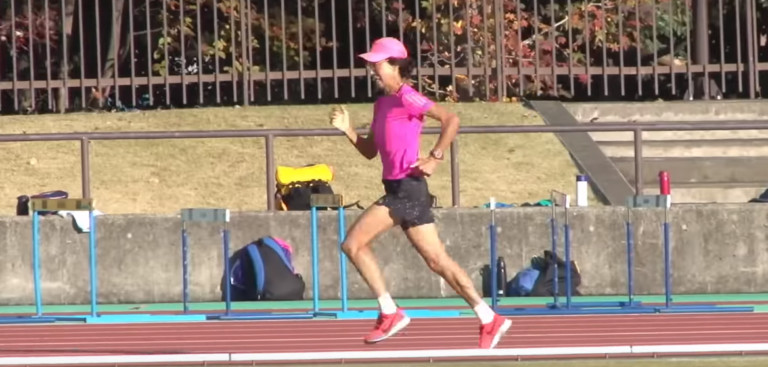
Yugeta went out at just under 4:00/km, going through halfway in 1:24:04 and making it to 30 km in 2:00:08 before her pace started to slip. Ultimately she ran 2:52:01, 1st among the 21 female finishers and 14th overall. "That's it for marathons for this season," she told JRN post-race. "I didn't make it to sub-2:50, but I'll be training hard to go for it at the Tokyo Marathon this fall."
(04/14/2021) ⚡AMPby Brett Larner
Just 100 days to go for the Tokyo Olympic Games
With every major milestone comes that extra surge of excitement and anticipation for the rescheduled Olympic Games, for which there are now just 100 days to go.
On 23 July the spotlight will be on Tokyo's Olympic Stadium as it hosts the opening ceremony and one week later the world’s best track and field athletes will descend on the rebuilt venue of the 1964 Games as athletics action gets under way.

More than half a century ago, when Tokyo last hosted the Olympics, the stadium was the place where New Zealand’s Peter Snell tore up the track to achieve his 800m and 1500m double, Tamara Press of the Soviet Union took two titles in the shot put and discus, Britain’s Ann Packer sprang a surprise to win 800m gold in a world record and Bob Hayes equalled the world record to win the 100m.
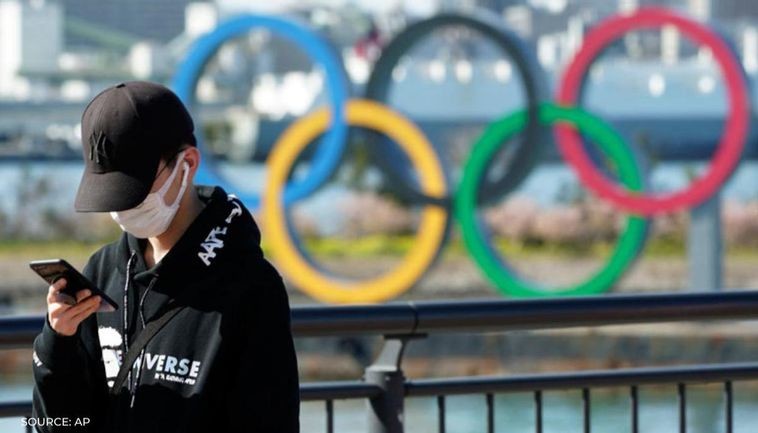
Further history will be made at that site this summer and it will all start with the opening ceremony in 100 days’ time.
“We are so looking forward to seeing athletes from all over the world marching into the new stadium at the opening ceremony ... when the eyes of the world will be on this iconic symbol of the Tokyo 2020 Games,” said Tokyo 2020 CEO Toshiro Muto on completion of the stadium’s construction, which took 36 months at a cost of ¥157 billion ($US 1.4 billion).
The National Stadium, or ‘Kokuritsu kyÅgijÅ’, which will be known as the Olympic Stadium during the Tokyo Games, was officially completed in November 2019. Demolition of the 1964 Olympics venue had begun in 2015 to make way for the 68,000-seater created with sustainability in mind.
Designed by Japanese architect Kengo Kuma, the look of the stadium – a ‘living tree’ – is reminiscent of traditional Japanese temple design with wooden facades and greenery to blend with the nearby Meiji Jingu Gaien area. The multi-layered eaves are made of wood gathered from Japan's 47 prefectures, while more than 47,000 trees were planted within the stadium’s precinct.
Inside, 185 airflow-creating fans and mist-cooling systems will create cooler competition conditions and the three tiers of seating, which will not feature overseas spectators for the Games, is in earthy and green tones to mimic sunlight filtering through the trees, or in this case the roof, and on to the forest floor – the seating and Mondo track.
While there are just 100 days to go until the Games, athletics action is heading to the Olympic Stadium even sooner as it will host the second meeting in the 2021 World Athletics Continental Tour Gold series.
‘READY STEADY TOKYO – Athletics’ will take place on 9 May and for many of the athletes expected to compete, this meeting will provide their first look at the state-of-the-art facility.
Continental Tour Gold disciplines to be contested include the men’s 100m, 200m, 400m, 3000m steeplechase, 110m hurdles, 400m hurdles, high jump, pole vault, long jump and triple jump, while the women’s events are the 1500m, 3000m steeplechase, 100m hurdles, long jump and triple jump.
The meeting is part of the ‘READY STEADY TOKYO’ series of test events organized by Tokyo 2020 in the lead-up to the Games.
(04/14/2021) ⚡AMPby World Athletics
Tokyo 2020 Olympic Games
Fifty-six years after having organized the Olympic Games, the Japanese capital will be hosting a Summer edition for the second time, originally scheduled from July 24 to August 9, 2020, the games were postponed due to coronavirus outbreak, the postponed Tokyo Olympics will be held from July 23 to August 8 in 2021, according to the International Olympic Committee decision. ...
more...Des Linden smashes the world record for 50k in her first ultra marathon
Des Linden’s elite marathon career has included two Olympic Games and a Boston Marathon win.
Tuesday morning, running on the Row River Road bike path along the northern bank of Dorena Lake near Cottage Grove, Oregon Linden became a world record holder.
In her first ultramarathon attempt, the 37-year-old from Michigan ran the 50K course in 2 hours, 59 minutes, 54 seconds to shatter the previous women’s record of 3:07:20 held by Great Britain’s Aly Dixon since Sept. 1, 2019.
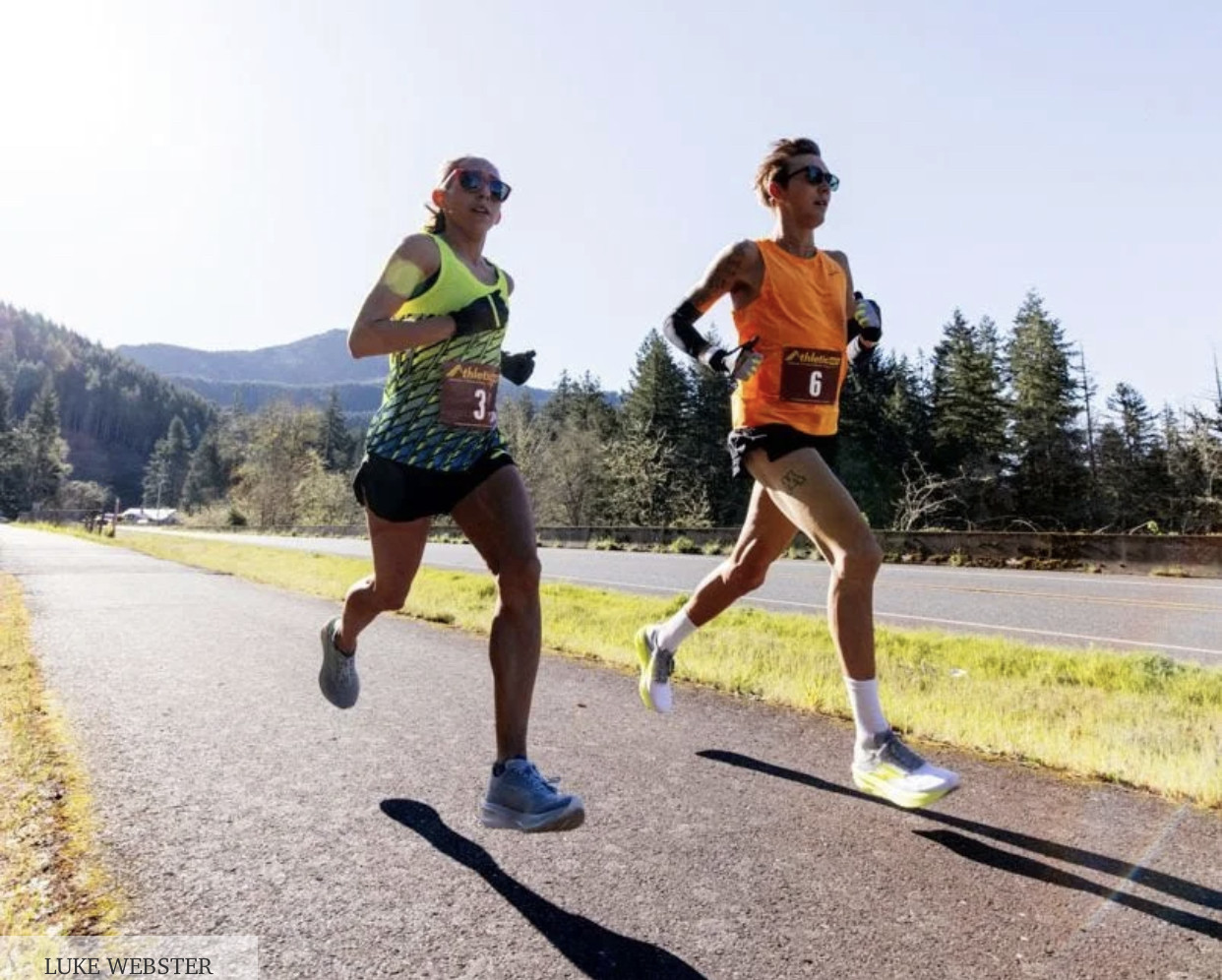
“I thought it would take a disaster for it to not happen, but you get to the marathon distance and disasters are pretty common,” Linden said. “Then you extend that and you just don’t know. As confident as I was, it’s unknown territory. I was trying to respect it as much as possible.”
Linden averaged 5:47 per mile. She hit the 26.2-mile marathon mark in 2:31:13 and powered through the final five miles with the help of American men’s marathoner Charlie Lawrence, who paced Linden through the entire 50K.
“We held it together, but it got hard the last five but I knew we had that time locked away,” said Linden, who couldn’t see the clock at the finish line. “But I knew. We were crunching the numbers out there. I’m like ‘I gotta break 3 (hours) or else I’m going to have to do this again, like soon.’”
Linden said she’d been planning for this race for a couple of years and felt like the time was right to give it shot.
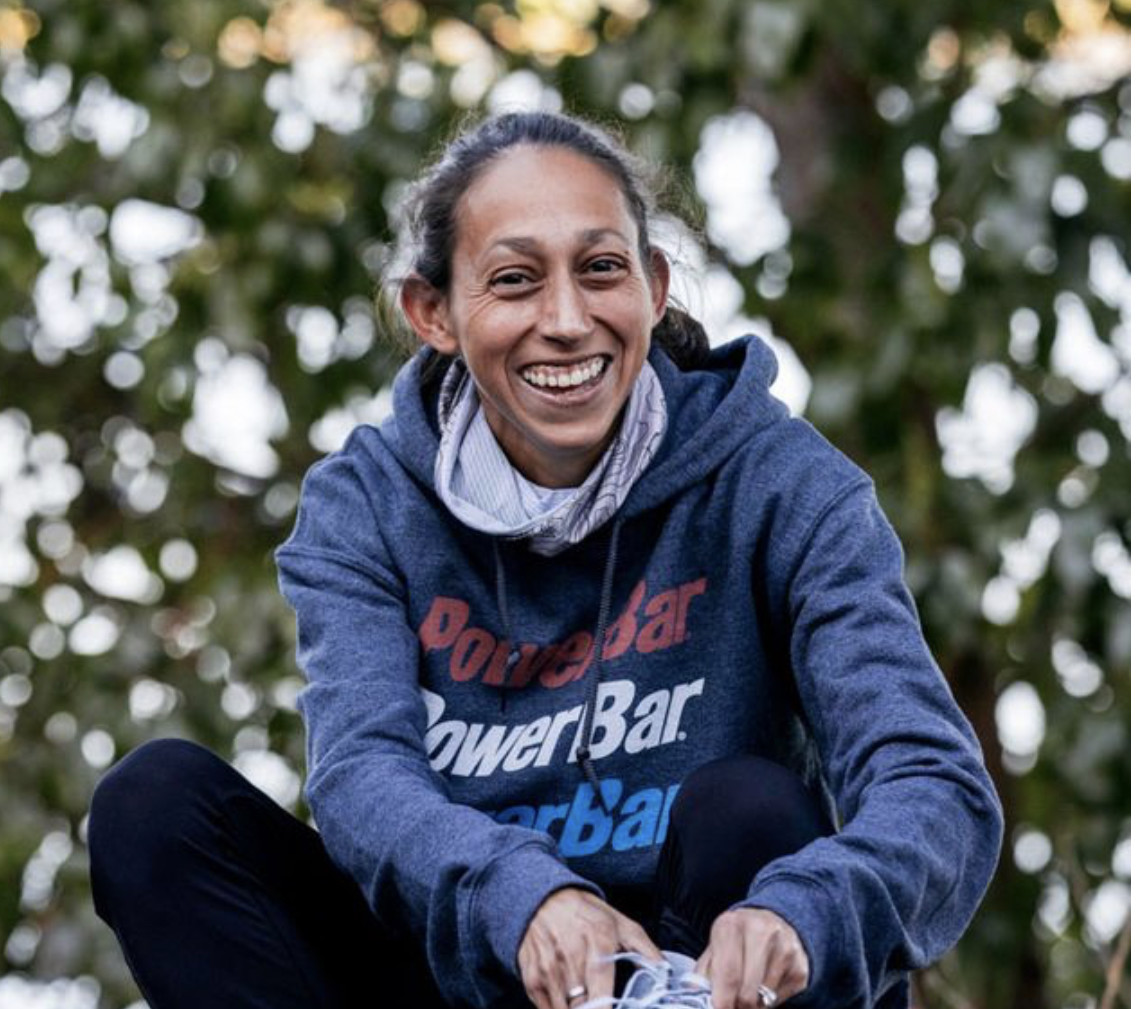
“The spring is totally free,” Linden said. “Without the major marathons it was like, let’s figure it out. And I think a small operation is a little bit better for trying to test the waters anyways, and with COVID, that’s how it has to be. We just tried to quietly do something and see how I liked the distance and how I measure up and if it’s something I want to pursue moving forward.”
The Row River Road course has been the site of several under-the-radar races the past year, including attempts by former Oregon stars Galen Rupp and Jordan Hasay to break U.S. half-marathon records. Neither were able to do what Linden did Tuesday.
“This is definitely one of the highlights of my running career thus far,” Lawrence said. “Being able to help a friend and probably my biggest mentor in the sport achieve a goal of hers and get a world record, is awesome.”
Linden finished seventh at the 2016 Summer Games in Rio de Janeiro and two years later won the Boston Marathon.
She finished fourth at the U.S. Olympic Marathon Trials in Atlanta in early 2020 before the pandemic shut everything down. She remains the alternate for the Tokyo Olympics this summer behind the three American qualifiers — Aliphine Tuliamuk, Molly Seidel and Eugene’s Sally Kipyego.
(04/13/2021) ⚡AMPby Chris Hansen
Can pacemaker and three-time Toronto Marathon champion Philemon Rono help Kipchoge hit another milestone?
Pacemaker Philemon Rono is all fired up for the ardours task of pacing a strong field, led by world marathon record holder Eliud Kipchoge, at Sunday's NN Mission Marathon in Enschede.
Rono, who clinched the 2016, 2017 and 2019 Toronto Marathon titles will link up with another Toronto Marathon champion Laban Korir, former Olympic and world marathon champion Stephen Kiprotich, Augustine Choge and Jonathan Korir.
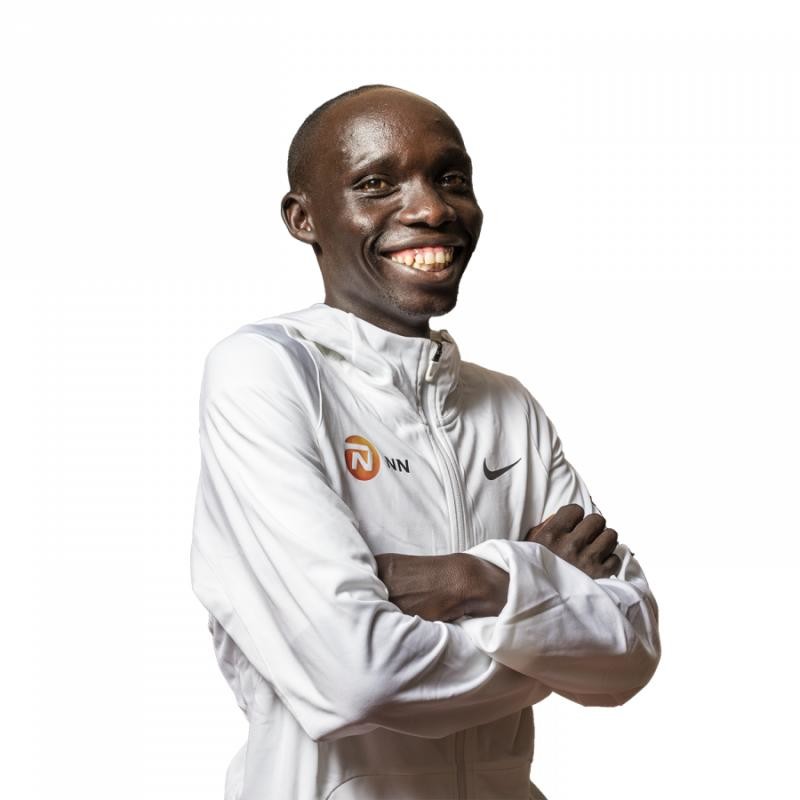
The race — initially set for April 11 in Hamburg, Germany — is set for Enschede in the Netherlands and an upbeat Rono is confident he has what it takes to cap off Kipchoge's glittering career with another feather.
“As a pacesetter, you have a lot of mathematics to do in a race, unlike the athlete. You need to be tactical, timely and stay focused on the laid down rules,” said Rono.
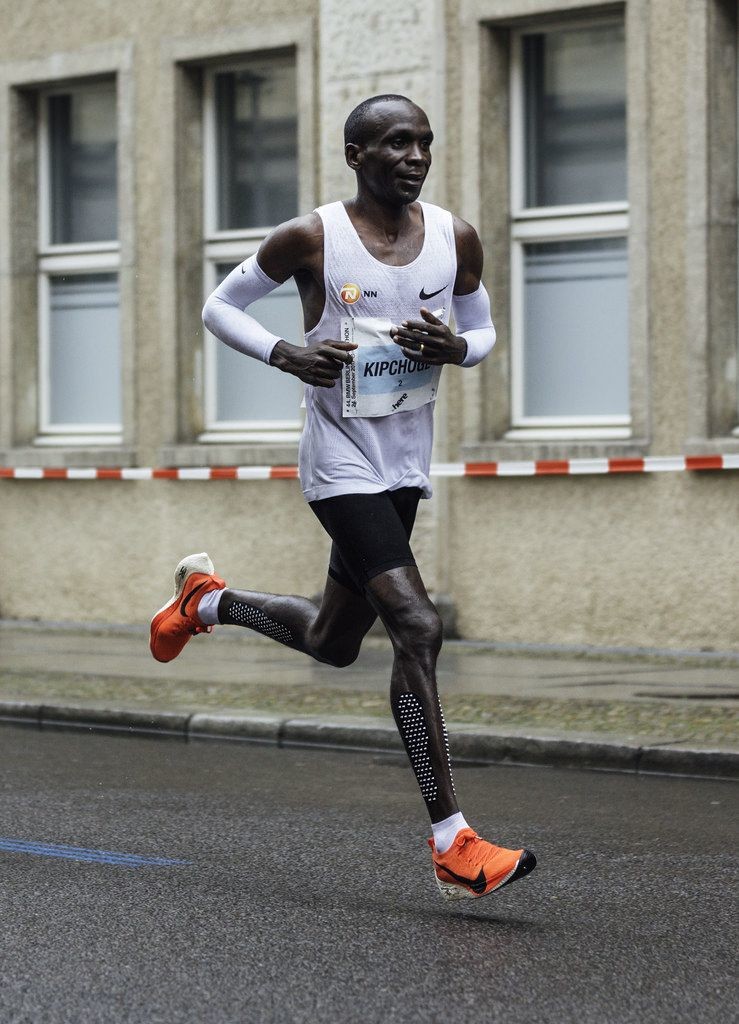
He proved his mettle during his stint at the Global Sports Communication training camp, where he set up Wilson Kipsang for a 2:03:38 world marathon record at the 2013 Berlin Marathon.
Rono's exploits also saw him fire up three-time world half marathon champion Geoffrey Kamworor to a decent fourth finish at the Rotterdam Marathon.
“With such experience in pace-setting, I will do my best to achieve the results as demanded by the race organisers,” added Rono, nicknamed 'junior police' because of his short stature.
(04/13/2021) ⚡AMPby Emmanuel Sabuni
NN Mission Marathon
Eliud Kipchoge will bid to resume winning ways in his last race before the Tokyo games with around 70 runners looking to make the Olympic qualification standard on April 18th in Twente.After suffering a rare marathon defeat in London last October, reigning Olympic champion Eliud Kipchoge makes his return at the NN Mission Marathon in 2021. It is set to...
more...Toronto’s marathon Joggler Michal Kapral completes 9-day, 147K joggling stage run
Kapral is well known in the Canadian running scene as one of the fastest jogglers (that’s someone who runs while juggling) in the country and world. He owns the Guinness World Record for the fastest marathon while joggling three balls at 2:50:12 (among many other records), and his success in the unique sub-section of the sport of running recently earned him the attention of a fellow joggler in France named Johan Swartvagher. Swartvagher invited Kapral to France to join him in the Périple, a six-month joggling festival that criss-crosses all over the country. It’s essentially the Tour de France of joggling, and although COVID-19 prevented Kapral from completing it in person this year, he still managed to run his and Swartvagher’s nine-day, 147K leg of the event.
As Kapral explains, the Périple lasts six months, with legs being run by pairs. There are 23 legs, each of which lasts between a week and a week and a half. Before COVID-19 ruined the plans for the event, the pairs were set to run together through France. Each pair consists of one juggler and his or her guest. In Swartvagher’s and Kapral’s case, they would both have been joggling, each carrying three juggling clubs along the way. While Kapral was stuck at home in Canada, unable to get to France for the run, Swartvagher ran the actual set route.
“They have ceremonies every week or week and a half where they hand the clubs off to different jogglers,” Kapral explains, noting that the event is one long relay. Instead of a baton or a torch, though, participants hand off their juggling clubs to the next runner in line.
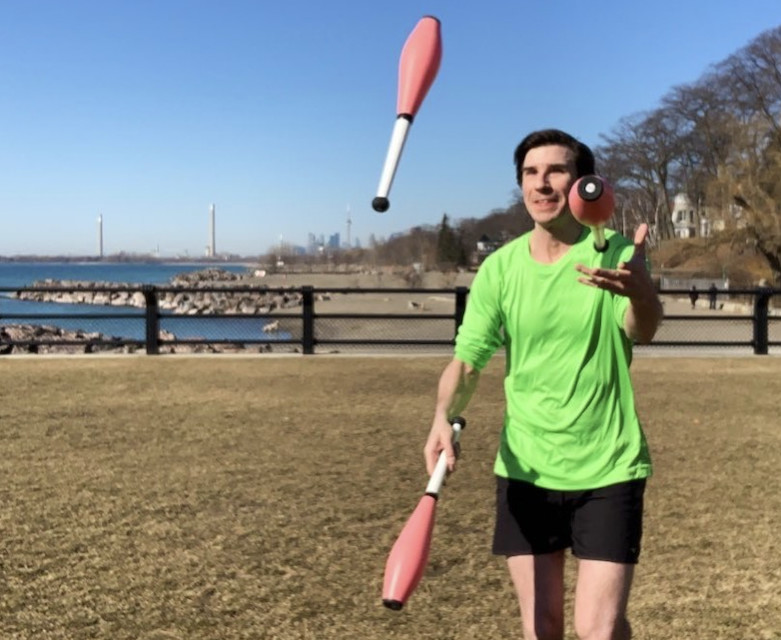
Kapral says he didn’t know Swartvagher before the event, but when Swartvagher — an experienced juggler and performer who is new to running — reached out with the invitation, Kapral didn’t hesitate to accept. “Johan had heard about me, and he wanted me to be his guest to show him the whole joggling thing,” Kapral says. “He doesn’t have much experience with running, but he’s done a great job.”
One of the toughest parts, according to Kapral, was convincing Swartvagher that he was capable of running kilometre after kilometre for nine straight days. At one point in their leg of the Périple, Kapral and Swartvagher had to run 18K two days in a row. Every runner can understand how daunting a single 18K run would be when new to the sport like Swartvagher is, and anyone would doubt their abilities when facing two 18K slogs in a row (while juggling three clubs, no less).
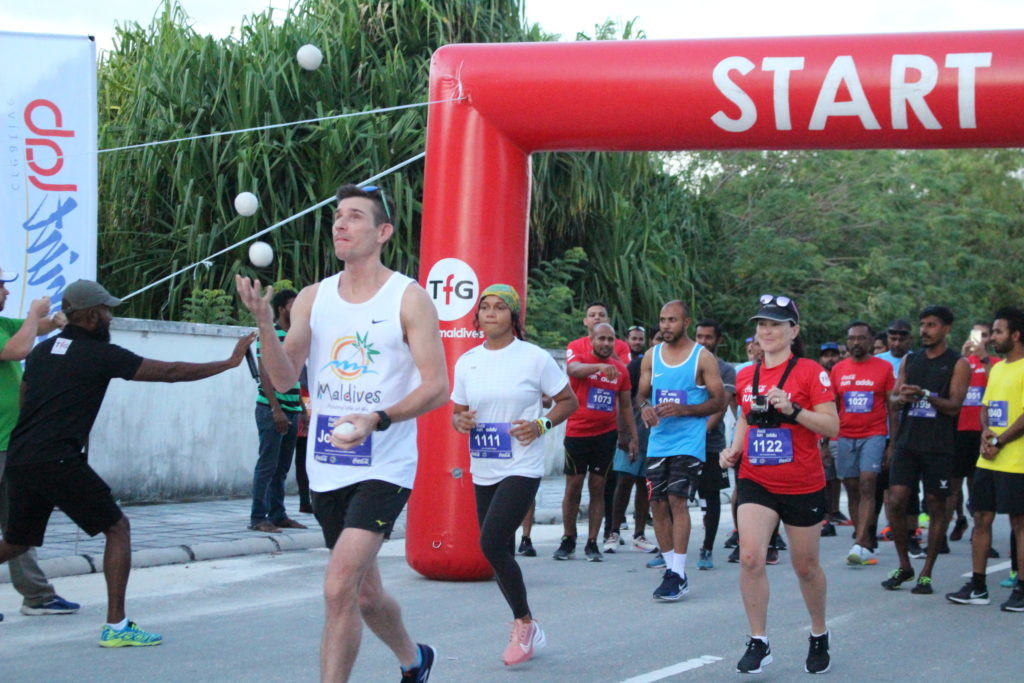
After that first long day, Kapral says he sent Swartvagher a simple message: “You did 18K today, you can do it tomorrow. You know you can do it.” And he was right — they got through the run, just like the others before it. Unfortunately, Swartvagher didn’t get the chance to complete the nine-day event, but not because of a lack of motivation, self-belief or energy. Instead, Swartvagher was forced to stop the run for a much more personal and tragic reason, as he had to go home to be with his mother, who was ill.
Swartvagher missed the two final runs of his and Kapral’s Périple leg, but he made it home to be by his mother’s side when she passed away. Despite the fact that he was completing the event virtually and would be unable to physically pass his clubs onto the next pair of Périple runners, Kapral finished the last two days on his own.
“I got pretty emotional joggling the final 16K in the rain, but honoured Johan’s sense of fun by finishing with a big smile and a jump in the air,” Kapral says. The Périple is still underway, and it will continue until mid-August. While Kapral’s role in the event is finished for now, he says he would love to run it again in the future, but next time, he’ll make sure to be there with Swartvagher in person.
(04/13/2021) ⚡AMPby Ben Snider-McGrath
How to Breathe While You Are Running
As a new runner, you probably haven’t given much thought to how to improve breathing while running. After all, who needs to be taught how to breathe? But soon into your journey into the world of running nearly you begin to think of concerns on improving performance and want to gain a better understanding of proper technique and start to wonder how to improve breathing while running.
In fact, most runners could benefit from learning a few breathing techniques. Understanding how to improve your breathing while running will not only boost your performance, but also reduce common injuries that often plague runners.

Here are a few tips on how to improve breathing while running so you can get your breathing under control and ensure you have a great run every time:
Become a Belly Breather
Do you tend to take shallow breaths when you’re feeling tired? Most people breathe through their chest, which isn’t the best way to maximize their oxygen intake.

Belly breathing, also known as diaphragmatic breathing, is a technique which allows you to maximize your oxygen intake while you run. It works by engaging the diaphragm to create more space in your chest cavity, allowing your lungs to expand fully to take in more oxygen.
Deep belly breathing increases the flow of oxygen-rich blood to your muscles and will stave off fatigue for longer. It has another benefit as well; a growing number of studies show that belly breathing has a calming effect, which can improve your focus and mental fortitude.
An easy way to practice deep belly breathing is by lying down on the floor and placing one hand on your belly and another on your chest. Take a normal breath and see which area rises first. Practice breathing deep into your belly first, then moving the breath up into your chest as you exhale.
Inhale and Exhale Through Both Your Nose and Mouth
Breathing in and out through only your mouth can have a hyperventilating effect, while breathing in and out only through only your nose won’t provide you with enough oxygen on your run. The best way to breathe while running is to inhale and exhale using both your nose and mouth combined.
Breathing through both the mouth and the nose will keep your breathing steady and engage your diaphragm for maximum oxygen intake. It also allows you to expel carbon dioxide quickly.
Practice breathing through both your nose and mouth during the day. This might be difficult because we’re hardwired to breathe in and out through just our noses. Once you’ve got this down, you can move on to our next tip: learning the best breathing patterns to run faster and prevent injury.
Time Your Breathing with Your Cadence
Do you always seem to get injured on one side of your body? Learning the right breathing pattern to match your cadence may help prevent those nagging injuries and boost your running performance.
Rhythmic breathing, also called cadence breathing, describes the number of steps you take on inhale and on exhale. If you’re like most runners, you have a natural tendency to have an even number of foot strikes for each inhale and exhale.
For example, if you have a 2:2 breathing pattern, you inhale every two steps and exhale every two steps. This even breathing pattern can lead to injuries because the exhale is always on the same foot.
Instead, try focusing on a breathing pattern that alternates from one side to the other. For instance, a 2:1 breathing pattern in which you inhale for two steps and exhale for one. This alternating pattern will increase your core stability and help you remain injury-free.
Warm Up Your Respiratory System
If you frequently get side stitches on your runs, you aren’t alone. According to a study, 70 percent of runners report experiencing this stabbing side pain.
Although the exact cause of side stitches is still uncertain, we do know that it happens when the diaphragm muscle starts cramping. Considering how the diaphragm muscle plays a significant role in our breathing, it stands to reason that improper breathing may a likely cause of side stitches. Side stitches seem to occur more often in new runners, further supporting this theory.
Warming up your diaphragm before taking off at your usual pace can reduce the chances of developing this annoying side stitch. First, start by practicing your deep belly breathing technique to relax your diaphragm muscle.
Next, start slowly and focus on maintain your breathing technique. Gradually increase your speed to give your diaphragm time to adjust to harder breathing. This will warm up the entire body and allow you to run stitch-free. Make sure to store your gear with a secure running belt on your next run.
(04/13/2021) ⚡AMPby FlipBelt
London Marathon test event has been postponed
London Marathon Events is organizing the Reunion 10K, which was due to be held on April 24-25 as one of the pilot events in the government’s Events Research Programme. Unfortunately, organizers announced today that the event has been postponed, as they attempt to find an alternative location for the race.
The statement reads, 'The Events Research Programme team and LME has concluded that the event should be postponed in order to finalize the requirements for this pilot event but Hatfield Park is not available in May and therefore an alternative venue is required.'
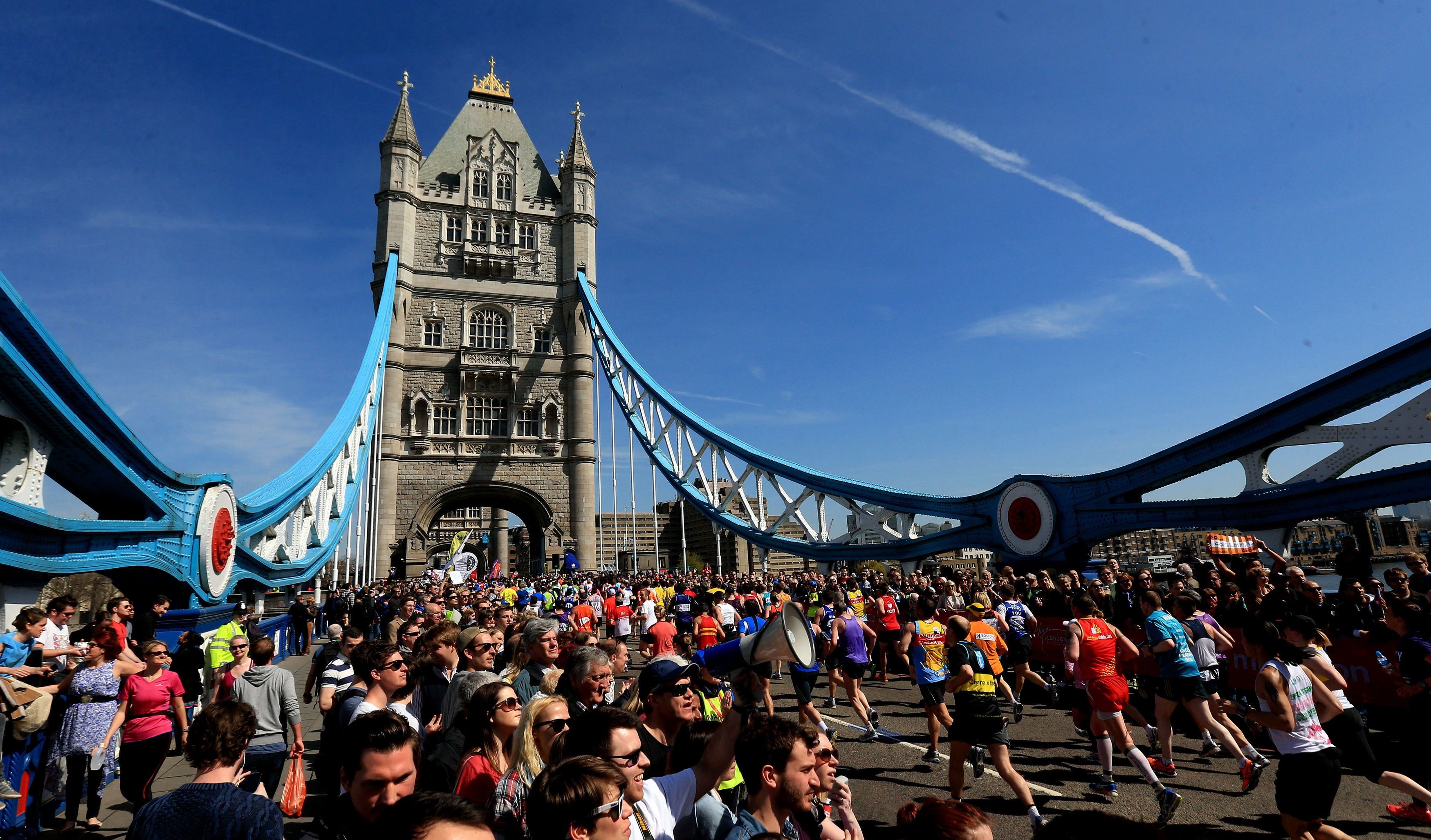
The event will consist of three 10K races, held over the weekend. This will provide the Department for Digital, Media, Culture and Sport with scientific data on how mass-participation events can safely resume as part of the roadmap out of lockdown.
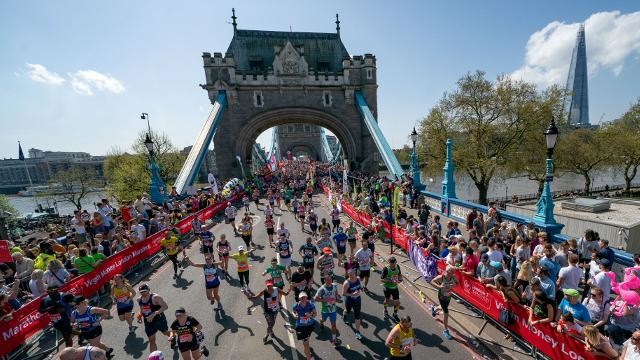
Everyone attending – participants, spectators and staff – will be required to take a Covid-19 test before and after the event. They will also be asked if they have been vaccinated, although this is not a requirement to attend the race.
Hugh Brasher, event director of London Marathon Events, said: ‘This pilot event, with its complex testing and operational overlay, is a very important step in the return of mass-participation sport and the team is now in discussion with a number of venues to see if it is possible to deliver the Reunion 10K in May.
'We would like to thank Hatfield Park, Hertfordshire Council, Welwyn Hatfield Borough Council and other key stakeholders for their hard work and support of the event.'
(04/13/2021) ⚡AMPby Jane McGuire
TCS London Marathon
The London Marathon was first run on March 29, 1981 and has been held in the spring of every year since 2010. It is sponsored by Virgin Money and was founded by the former Olympic champion and journalist Chris Brasher and Welsh athlete John Disley. It is organized by Hugh Brasher (son of Chris) as Race Director and Nick Bitel...
more...Norway's 20-year-old Jakob Ingebrigtsen is getting married
Norwegian and European record holder Jakob Ingebrigtsen and his longtime girlfriend Elisabeth Asserson are getting married. The pair of 20-year-olds have been a couple for five years, and Ingebrigtsen popped the question on Saturday.
After five years together, Asserson has been in Ingebrigtsen’s life for all of his biggest achievements in running. She has had a front-row seat as he has grown from a young talent with great potential into an admittedly still young super star on the track.
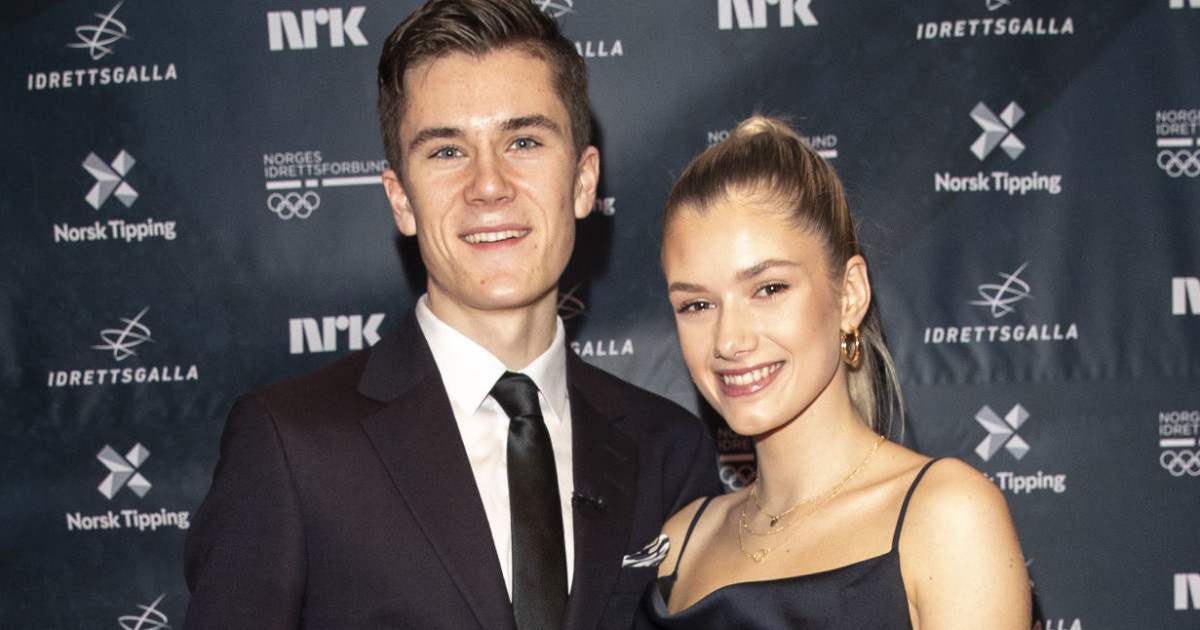
Ingebrigtsen has been on the running world’s radar for a long time now, but in the past couple of years, he has become more and more successful. In 2019, he won a European championship in the indoor 3,000m before representing Norway at the world championships in Doha, Qatar. There, he ran two near-podium performances, finishing in fourth in the 1,500m and fifth in the 5,000m.
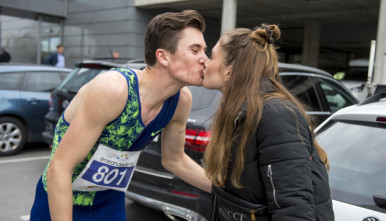
He wrapped up the year by running the Norwegian 10K record of 27:54 and winning the U20 European cross-country title. While 2020 was a different year due to COVID-19, he still managed to continue to find success on the race course, setting European records in the 1,500m (3.28.68) and 2,000m (4:50.01) and an unofficial Norwegian 5K road record (he ran his 13:28 PB on an uncertified course).
Finally, Ingebrigtsen has carried his winning ways on into 2021 — a year in which he has already set the European indoor 1,500m record (3:31.80) and won European crowns in the indoor 1,500m and 3,000m. And now, he has added an engagement to his list of highlights for the year.
(04/12/2021) ⚡AMPby Ben Snider-McGrath
If running is part of your weight-loss strategy, What’s Better Running Far or Running Fast?
There’s no one-size-fits-all strategy to weight loss, but if you want to lose weight, you’ve got to burn more calories than you consume. Doing so can take many forms, from specific diets to a variety of exercise regimens, including strength training, high-intensity interval training and steady-state cardio. So, you have many options at your disposal — you’ve just got to find what’s right for you.
If you’re running long distances, you’re likely performing steady-state cardio, which is a lower intensity exercise that can be performed for a long time. In this case, your heart rate stays in a moderate work zone, not experiencing the intense highs and lows it would during, for example, sprint training.
“Long-distance runs are great for building up your endurance and improving overall cardiovascular health,” says Chris Coggins, a running coach. “If you’re training for an event like a 5K or a half-marathon, most of your training will be at a steady-state pace. You will burn fewer calories per minute, but you’re working for more minutes, so the total calorie burn can really add up.” He mentions that slower runs are also easier on your joints, so they have the added benefit of allowing you to recover more quickly between runs.
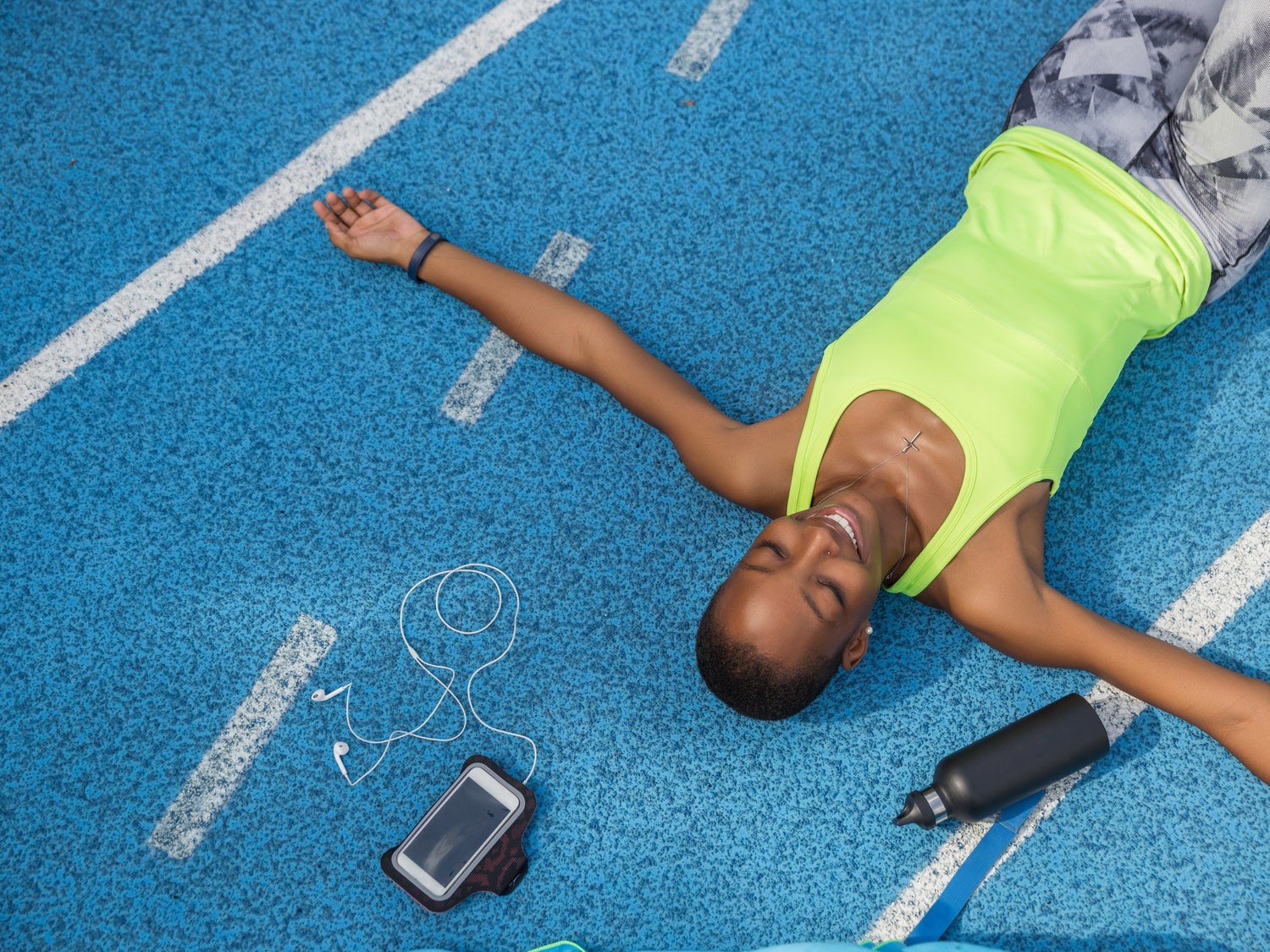
However, as healthy as long, slow jogs can be, they might result in plateaus. As your body adapts to the exercise, it won’t feel as challenged and it may burn fewer calories for the same level of work. “Increasing distance is one way to break through plateaus, but you can only run so far,” says Coggins. “Eventually, your body will become accustomed to a particular distance, and your weight loss may plateau.”
Now, if you were to run that 8 mile-per-hour pace for 30 minutes, you would burn 459 calories. That’s fewer than you’d burn from the longer, slower run. Stop here, and it would be easy to give steady-state cardio the victory. But, again, there’s more to consider.

First, shorter runs are easier to fit into busy days, so you might be more likely to do the shorter, more intense workout than the longer, less intense workout. Second, high-intensity exercise helps you achieve the coveted “afterburn effect.”
Also known as EPOC, or “excess post-exercise oxygen consumption,” the afterburn is the amount of oxygen required to return the body to its pre-exercise state. In other words, you’ll keep burning calories even after exercise has ended. It’s difficult to calculate the exact impact, but an Australian study shows a 6–15% increase in the hours following a high-intensity workout.
SO, WHICH IS BEST?
“It’s kind of a trick question, because ideally you should be doing both,” says Coggins. “High-intensity runs are great for torching calories, and they give you that afterburn effect. But slower runs help you build endurance, burn fat and are better for recovery.”
If you’re serious about losing weight and are healthy enough for high-intensity exercise, he recommends sprint intervals. Switch up the speed and distance of the intervals, and you’ll keep your body guessing to avoid plateaus. Then do slower jogs or even take some nice, long walks for active recovery days. The two-pronged approach offers the most benefits long term.
“Any type of exercise can help you lose weight, just don’t become too reliant on any one thing,” says Coggins. Mix things up by running, jogging, walking, lifting weights and doing whatever else gets you up and moving. Ultimately, regular activity is what’s going to help you achieve lasting weight loss.
The faster you run, the more calories you burn. And the more calories you burn, the more weight you can lose. That math is easy enough, but there’s more to the story.
If you’re able to increase your speed over a certain duration, then your calorie burn increases significantly, says Coggins. Consider the following example:
If you weigh 150 pounds and run 6 miles per hour (a 10-minute mile pace), you can burn 680 calories in one hour according to the MyFitnessPal exercise calculator. If you increase your pace to 8 miles per hour (a 7.5-minute mile), you can burn 919 calories in the same amount of time.
That said, speeding up isn’t feasible for everyone. Unless you’re a serious runner, maintaining a quicker pace for a long duration likely isn’t in the cards — at least not right away. If you’d like to increase your speed, you’ll need to decrease duration.
(04/12/2021) ⚡AMPby Kevin Gray
How to run efficiently on concrete, sand, dirt or trail
Running on pavement, cement, sand, dirt or trail have their unique challenges. It’s not simply about which running surface is better or more optimal since that answer is: “it depends” or “none of them is best.” In fact, your best bet is likely to mix up your running surfaces to change your loading and balance the way that you run.
“The human body adapts incredibly well to its situation,” says Jeff Knight, senior manager of digital product science for connected fitness at Under Armour and former running coach. “Basically, researchers have found that runners adjust to run with a softer stride over the firmer surface and a harder stride over the softer surface.”
When you switch things up, there are certain ways to optimize your running. Here’s what you need to know about different running surfaces and how to train on them for the best possible performance:
Concrete and cement are the hardest materials you’ll likely run on. If you observe most serious runners, you’ll notice they often eschew the sidewalk in favor of the shoulder of the road for this reason. On the flip side, sidewalks are going to be safer than running in the street when it comes to traffic. Some sidewalks have a dirt or grass medians you can take advantage of to give your feet a break.
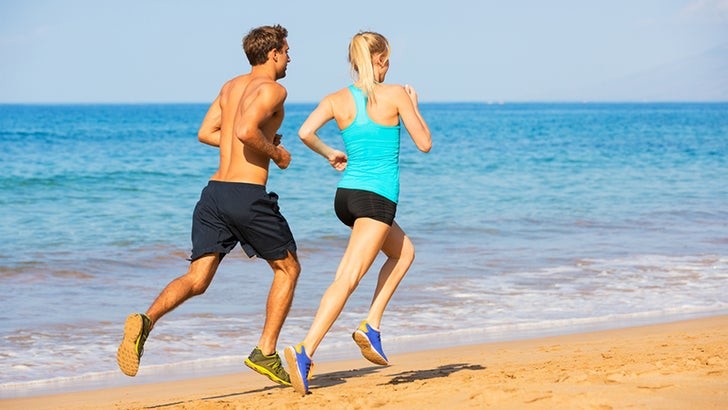
This is also where finding a good road running sneaker comes into play. “A standard road shoe. The cushioning of a neutral running shoe options helps dampen the impact of each stride.
Ranked slightly softer than concrete sidewalks, running in the streets or on asphalt paths is better than trying to stay on sidewalks when it comes to running efficiently. As Knight points out, humans are amazingly adaptable, so if you live in a concrete jungle, don’t stress: You’ve likely developed a stride that takes hard surfaces into account. But when you can, hop onto the grass and run the side of a field or a trail: Research shows running in grass reduces the stress on your body compared to running on a more rigid surface.
Gravel trails and roads are firm and are good for running since they’re slightly softer than asphalt without much difference in the actual surface, unlike a dirt trail in the woods. But the loose layer of dust and gravel on top ultimately slows you down. “In Austin, Texas, we have a popular running trail in the middle of town that surrounds Ladybird Lake. That trail is made of crushed up bits of granite,” Knight says. “When I was coaching, we added 5–10 seconds per mile if we did a tempo run on that trail!”
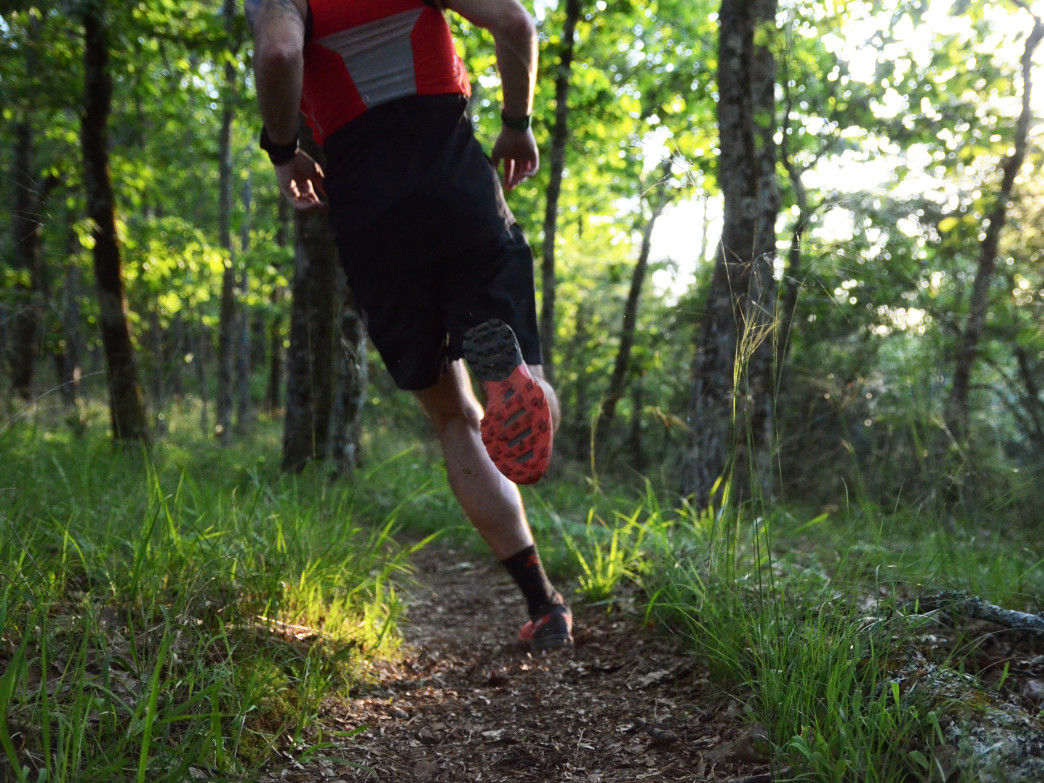
So, while gravel may be optimal for long endurance runs compared to pounding the pavement for hours, don’t expect a PR. Similarly, rail-trails are the best for your joints thanks to their cushiness and lack of any technical navigation. Rail trails also tend to be flat and straight, with relatively few obstacles. Their surfaces are akin to those of gravel roads, but the flatness makes them more beginner-friendly, while gravel roads can easily get ultra-hilly.
Here, we’re talking about technical trails, not dirt roads. Trails are softer in general, but present runners with more ankle-biting obstacles, and because of this, your stability may suffer. On technical trails, Knight recommends swapping to a more trail-friendly shoe. “Usually, trail shoes offer a bit more stability and traction,” he explains. “If I catch a root or rock wrong, I am less likely to slide off that root and turn my ankle. To summarize, lots of roots the size of baseball bats or rocks the size of baseballs means switch shoes.” He notes that if you’re looking for speed on the trails, a dedicated trail shoe helps with that as well. “That extra bit of traction and stability may keep you safe when you start getting sloppy,” he adds. “No one is as sure-footed at the end of a hard trail session as they are at the beginning!”
Soft sand is by far the most challenging surface to run on, and it will fight you every step of the way. If you’re a beach runner, stick to the hard pack sand by the water’s edge and wear your trail shoes for more stability. You can head into the soft sand as an interval, since it will immediately make maintaining your pace much more challenging as an almost full-body workout.
But if you have a tendency toward rolled ankles, skip running on soft sand altogether: It might be nicer on your joints from a softness perspective, but the lack of stability makes it potentially dangerous. Surprisingly, one study showed that compared to running on a sandy soft surface, running on asphalt actually decreased the risk of tendinopathy in runners.
(04/12/2021) ⚡AMPby Molly Hurford
Gerda Steyn sets South African marathon record in Siena, Italy
Eighty runners lined up in Siena, Italy, on Sunday morning to race the Xiamen Marathon, an elite-only event that marked one of the final opportunities to qualify for the upcoming Tokyo Olympics. Kenyans Eric Kiptanui and Angela Tanui took the wins in PBs of 2:05:47 and 2:20:08, and South Africa’s Gerda Steyn set a national marathon record of 2:25:28. In his first race in more than a year, Canada’s Reid Coolsaet finished well off the Olympic standard of 2:11:30, crossing the line in 2:16:38.
Kiptanui won the race by 10 seconds, edging out Ethiopia’s Abdi Fufa for first place. He bettered his PB by 30 seconds, improving on a 2:06:17 showing from his marathon debut in Dubai in 2020. His result is the second-fastest ever run on Italian soil, a minute off the all-comers record set by his fellow Kenyan Titus Ekiru at a race in Milan in 2019, which he won in 2:04:46.
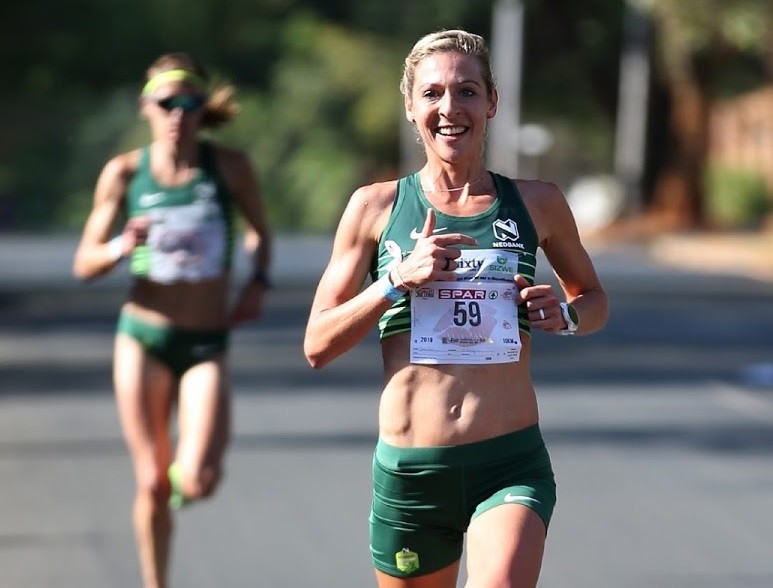
While Kiptanui fell short of the Italian all-comers record, Tanui did not, and her 2:20:08 winning time lowered the mark of 2:22:25, which Kenya’s Vivian Kiplagat also set in Milan in 2019. Unlike in the men’s race, which was relatively close, the women’s race saw a big gap between first and second place, with Tanui crossing the line more than two and a half minutes ahead of the next-closest runner. On top of setting the Italian all-comers record, Tanui also lowered her own PB by a whopping five minutes.
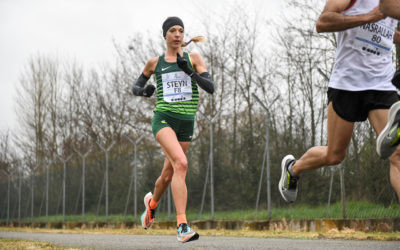
In recent years, Steyn has proven to be one of the best runners in South African history. She set the Comrades Marathon up-run course record in 2019, becoming the first woman to break six hours in the storied event with her 5:58:53 winning time. That same year, she ran to an 11th-place finish at the New York City Marathon (a race less than half the distance of the 87K Comrades Marathon), running 2:27:48.
In 2020, Steyn ran to a seventh-place finish at the elite-only London Marathon, where she posted a new PB of 2:26:51, which was the second-fastest marathon result in South African history. This year, she was set to run the NN Mission Marathon, but her plans changed when the event was pushed from April 11 to April 18 and moved from Germany to the Netherlands.
Fortunately, the Xiamen Marathon accepted her on short notice, and she ran a new South African marathon record of 2:25:28. She looked to have great chances of being named to the South African team headed to the Tokyo Olympics before Sunday’s race, but with her result in Italy, she has likely officially booked her ticket to the Summer Games.
(04/12/2021) ⚡AMPby Ben Snider-McGrath
Over Half Of Ultrarunners Get Nauseous During Races; Here's Why
The list of issues and injuries that an ultrarunner can face while racing is lengthy. Blisters, chafing, cramps, muscle strains, knee pain, heat illnesses, and altitude sickness are just a handful of the possibilities. Perhaps none of these potential problems, however, are as prevalent and impactful during ultramarathons as nausea and vomiting. Indeed, practically every ultrarunner has their own tale of yakking on the side of a trail or into an aid station trashcan. For some, it's an unlucky one-off event, but for others, recurrent nausea consistently mars their ability to perform up to their expectations.
The reason so many ultrarunners get stricken with nausea is undoubtedly multi-faceted, and to be honest, there is not a cut-and-dry singular explanation. Still, we do have some clues as to why the prevalence of nausea and vomiting is up to 2-3 times more common in these races than much shorter distances. Let's take a look at what the research says about the possible culprits as well as some of the strategies you can try to deal with this troublesome symptom.
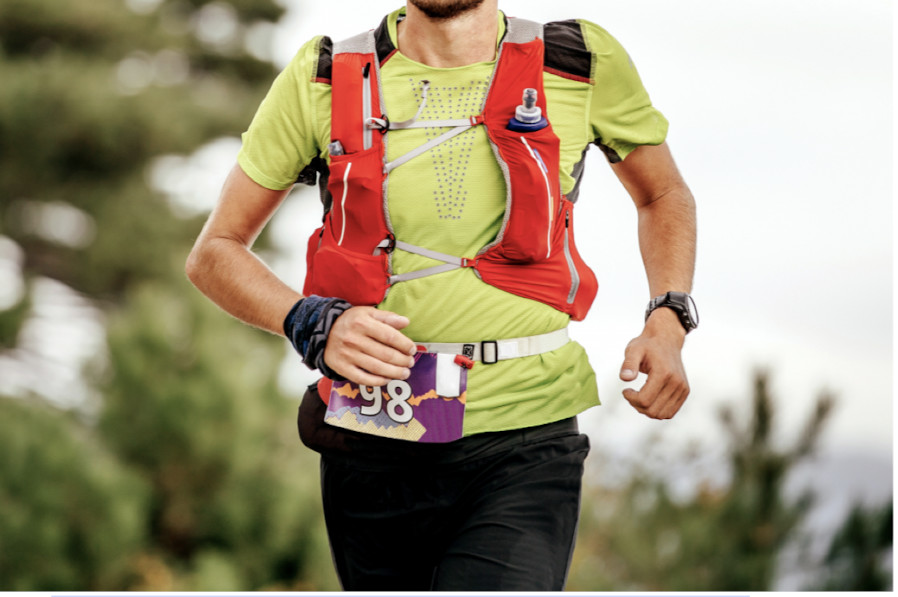
Just How Common Is Nausea?
Beyond the anecdotes, what exactly do we know about the prevalence of nausea in ultrarunners? Before we get to some data on that question, it's important to recognize that surveys used to gather this information quantify nausea differently. In addition, the occurrence of nausea is likely to vary with temperature and humidity, elevation, and the length of a race. As such, it's a bit foolhardy to throw out a single estimate of nausea and think that it applies to every ultrarunning scenario.
Caveats aside, some of the relevant data tells us that nausea incidence clearly increases with race duration. Dr. Martin Hoffman, professor emeritus in the Department of Physical Medicine and Rehabilitation at the University of California, Davis, has overseen several studies on this topic, and in some cases, up to 6 out of 10 runners experience nausea during an ultramarathon. To give you some perspective, consider that around 10% of regular marathoners typically suffer from nausea.
Now, some of these cases of nausea are quite mild or transient, meaning they won't hurt performance much. Still, up to half of cases can be severe enough to impact ultrarunning performance. In fact, one of Hoffman's investigations found that nausea or vomiting was the leading reason for racers to drop out of the Western States 100-mile Endurance Run. During a regular 26.2-mile marathon, a runner suffering from nausea near the end of the race is likely to grit their teeth and finish. In contrast, the thought of having to suffer for another 20, 30, or 50-plus miles while feeling queasy is, very understandably, too much for some ultrarunners to cope with.
Multiple Causes
The puzzle of why nausea is so common during ultrarunning is difficult to solve, in large part because there are multiple physiological changes occurring simultaneously over the course of an ultrarace. It's also incredibly tough to match the demands of an ultrarace in a laboratory, so mechanistic studies looking at the origins of nausea during super-prolonged exercise are few and far between.
Even with the scientific uncertainty, we do have some decent guesses as to what's provoking the urge to spew in so many ultrarunners. During prolonged exercise, you secrete hormones like adrenaline and glucagon into your blood that allow your body to liberate fat stores, make glucose, and maintain your blood sugar levels. Arginine vasopressin, a fluid-conserving hormone, is also released so that you can reduce urine production. Blood levels of endotoxins (sort of invader molecules that seep through your gut's walls) and inflammatory molecules can also surge. And finally, you've got muscle breakdown products, like urea and creatine kinase, spilling into your bloodstream. All these substances can stimulate what's called the chemoreceptor trigger zone in your brainstem, which communicates with another brain region called the vomiting center.
Long story short, you've got a cocktail of substances circulating in your bloodstream that act as a potent trigger for nausea. The concentrations of all these substances tend to increase over time during prolonged exercise, which may help to explain why nausea becomes much more common in the latter half of ultraraces.
A Nervous Gut
The release of stress hormones like adrenaline can also occur even before you take your first official stride during an ultra. Throughout the history of sport, many athletes have been plagued by precompetition anxiety severe enough to induce vomiting. Bill Russell, perhaps the best center of all-time in the sport of basketball, reportedly vomited before many of his big games. There's also a moment in the Steve Prefontaine biopic Without Limits that perfectly captures what prerace nerves can do to even the most elite athletes. In the scene, Prefontaine is seen puking under the grandstands before his race against other running greats like Frank Shorter and Gerry Lindgren, even as the crowd chants his name.
These anecdotal accounts are also beginning to be backed by research. Just this year, two of my colleagues and I published an investigation that found anxiety to be associated with the occurrence of nausea in endurance race competitors. The study, published in the European Journal of Sport Science, had 186 endurance-trained individuals document their life stress and anxiety as well as the gut symptoms they experienced during one of their recent races. A subset of the subjects also reported how anxious they felt on race morning. Ultimately, racers who reported higher levels of general anxiety had over three times the odds of experiencing significant levels of nausea during competition. Further, those who reported lots of anxiety on race morning had over five times the odds of experiencing substantial in-race nausea.
These are correlations, so it's hard to definitively prove that these athletes' nausea issues were completely due to anxiety. That said, other lines of evidence support the idea that this relationship is at least partially cause and effect. Plus, most of us have had our own out-of-sport run-ins with gut distress stemming from worries and anxieties, whether they be from a first date, a medical procedure, or an interview.
Sweltering Heat and Altitude
Environmental conditions also play a major role in development of nausea during ultras. Some of the most prominent ultramarathons in the world (e.g., Western States Endurance Run, Badwater Ultramarathon, Marathon des Sables) are held in sweltry conditions. When researchers ask runners to exercise in the heat, the incidence of nausea can quadruple in comparison to exercise carried out at the same intensity in more mild conditions.
Besides the heat, another environmental factor that many ultrarunners deal with is altitude. Nausea is a well-known symptom of acute mountain sickness, with written accounts going back at least several hundred years. Add exercise to the mix, and you can start to understand why nausea is a big issue for competitors at races like the Hardrock 100 and the Khardung La Challenge, which has the highest elevation of any ultrarace in the world.
Fueling: A Delicate Balance
One other notable contributing factor to nausea is in-race fueling. The nutritional demands of ultrarunners can far outpace those of other athletes competing at shorter distances. For those ultrarunners who are looking to push the boundaries of what their bodies can do, they might end up consuming carbohydrate at rates of 60-90 grams per hour. That's roughly equivalent to 3-4 sport gels per hour! Even lesser amounts of carbohydrate (30-60 grams per hour), though, can pose a significant challenge to the gut's capacity to digest and absorb fueling.
In short, fueling during an ultramarathon often takes place on a knife's edge. Too little can lead to a bonk and even nausea if your blood sugar gets too low, while too much foodstuff can also provoke the gut and induce queasiness. With that in mind, it's critical that ultrarunners practice their fueling strategies multiple times throughout the weeks leading up to a race. Ideally, at least some of these gut-training sessions would be done at a pace similar to race-pace and in similar environmental conditions that an athlete expects to compete in.
Strategies to Quell or Avoid Nausea
Given all this information, you might be wondering how to best avoid the nauseous fate of so many ultrarunners. First, you should accept the fact that there is likely no ironclad way to completely eliminate the risk of nausea during an ultra. There are just too many potential causes. That being said, you do have the power to minimize your risk of being stricken with severe nausea. And for some athletes, it will be important to take a multi-pronged approach as opposed to relying on a single strategy. Below are my top five tips for reducing the odds of tossing your cookies during your next ultra.
Acclimate to the heat and altitude if your race is held under those conditions. Likewise, employ cooling strategies (e.g., drinking cool beverages, putting some ice in your cap or shirt, dousing yourself with cool/cold water, etc.) throughout a race that's held in sweltering conditions.
If you suffer from prerace nerves, try techniques like slow deep breathing or mindfulness. Better yet, consult with a sports psychologist.
Avoid both overhydrating as well as underhydrating. During a single-stage ultramarathon, some amount of weight loss is normal (due to the loss of energy stores), so you shouldn't be drinking so much that you weigh the same or more after a race as before the race. On the other hand, large body mass losses (e.g., >5%) may be a sign that you're underhydrating.
Train your gut! If you plan to push the boundaries of food and fluid intake during the race, of course it makes sense that you should practice your nutrition plan during some of your longer training runs. Much like other organs in your body, the gut is adaptable.
Try ginger. I'm generally not a purveyor of supplements, but if the above mentioned strategies don't do the trick for you, there is at least one nutritional product that has shown some anti-nausea properties in settings outside of exercise: ginger. To be specific, these anti-queasiness effects have been most often studied in nausea occurring during pregnancy, motion sickness, and chemotherapy. No supplement is without risk, and many products sold in the U.S. are of questionable quality, so anyone looking to use ginger supplements-or any other supplement for that matter-should do their research and consult with their healthcare provider as well.
(04/11/2021) ⚡AMPby Trail Runner Magazine
Season 1, Episode 2 of 'Run Around the World': A Docuseries About Chasing the Gnarliest Adventures
Mountain athlete Jason Schlarb and ultrarunner Meredith Edwards travel to Yunnan, China, with an ambitious plan to run a 55K trail race and establish the Fastest Known Time on 17,703-foot Haba “Snow” Mountain.
A dramatic ultramarathon racing culture is only rivaled by life on the frontier, where the pair experience a few nights on a rural farm before ascending a Himalayan-scale peak. Adventure runs high and success is elusive to the end.
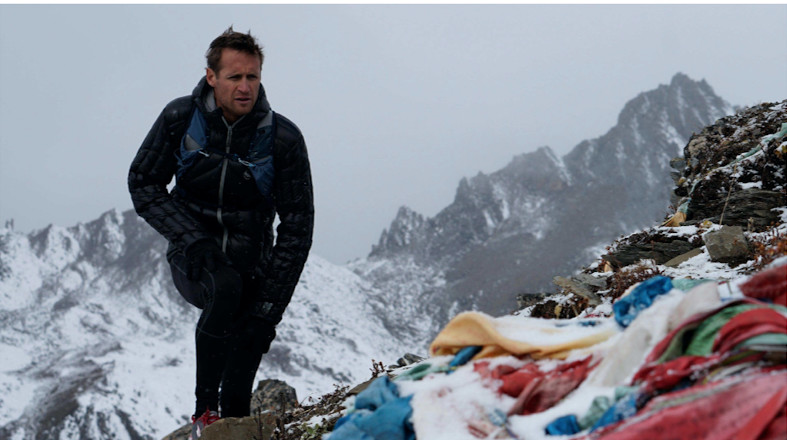
Global travel may have slowed down this year, but running certainly did not—especially for the crew of Run Around the World. Crossing Switzerland on foot, running through the arts district of Mexico City, and overcoming the hurdles of a global pandemic made 2020 a year of growth.
Join the team—including world-renowned ultrarunners Jason Schlarb, Meredith Edwards, Ian Morgan, Diego Pazos, and Knox Robinson—for reflections on the benefits running brought to 2020.
(04/11/2021) ⚡AMPLululemon's new campaign star has a body-inclusive message: 'Running is for everyone who has a body and wants to run'
Lululemon's newest ambassador and campaign star is going to great lengths to make running more accessible and body-inclusive.
The athletic apparel brand has tapped ultramarathoner, author, speaker and former Fat Girl Running blogger Mirna Valerio to front its new global "Feel Closer to Your Run" campaign and offer better representation of runners whose body types are typically overlooked within the fitness space. The Vermont-based Valerio tells Yahoo Life that she hopes to inspire and empower both people who have felt excluded by activities like running, and the brands that have the power to provide better quality gear for bigger bodies.
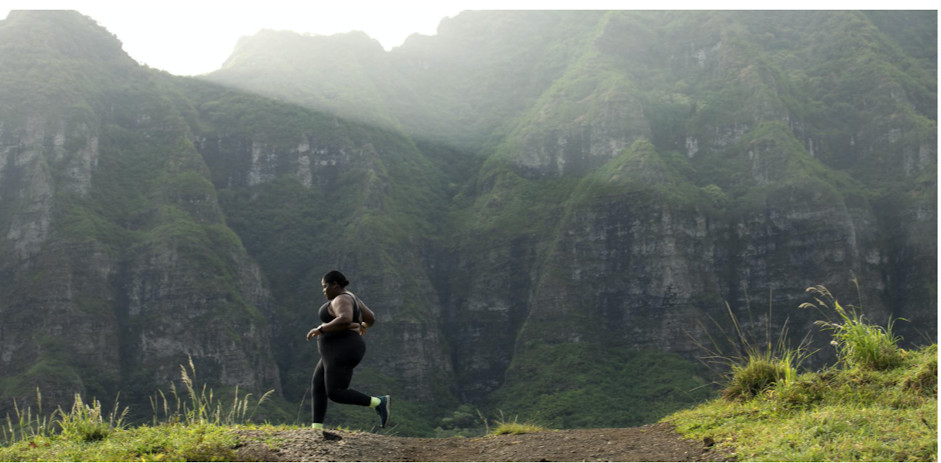
"Make no mistake: All kinds of people in all sorts of bodies want to be able to engage in movement that is meaningful to them, and they need apparel that fits, is functional and well-made," Valerio says. "There was this prevailing idea that plus-size folks didn’t do or want to do things like running, cycling, swimming, etc. But guess what? We’ve always done those things and have had to contend with ill-fitting apparel — because we’ve been forgotten and ignored — poorly constructed clothing that is not fit for any athletic activity, or if they do fit, pieces in limited colors and styles.
"When people see a person like me in a magazine or in a company’s marketing and advertising media [while] running or hiking or riding a bike, it’s easier for them to envision themselves doing the same thing," she adds. "It signals to them that they belong in that space too. And hopefully, it gives them a little push to perhaps try something they’ve always been curious about but could never really see themselves doing."
It was a health scare that gave Valerio herself that "little push" more than a decade ago. Though she's been a runner and athlete since high school, she fell into a three-year slump as she juggled the demands of grad school, a teaching career and family life.
"I wasn’t sleeping or taking care of myself, and it was a health scare connected to all of these things that prompted me to start running again," she says. "I’m never looking back!"
Assuming things are "rolling nicely" and she's injury-free, she runs about four or five times a week, leaving time for recovery days. When she's training for a race or marathon, she'll typically clock 30 to 45 miles a week — and sometimes 50 if her coach calls for it. Her next big challenge is the Trans Rockies 6-Day Stage Race in August.
"It’s six days of running the Colorado Rockies for about 120 miles, with 20,000 feet of vertical gain," she says. "It’s one of my favorite events ever, and I’ve managed to finish only once, so I’m going to go for it again this year."
And then there's the challenge of her new role in supporting Lululemon's diversity and inclusion efforts, and continuing to speak out about being active as a larger woman. Valerio is confident that the images of her hitting the trail in the campaign will serve as an inspiration, and invitation.
"You absolutely belong and are entitled to the fitness space," she says. "Running is for everyone who has a body and wants to run. Guess what? We all have bodies, so that means… "
(04/11/2021) ⚡AMPTanui breaks Italian all-comers' record in Siena
Kenya’s Angela Tanui and Eric Kiptanui claimed victory at the Xiamen Marathon and Tuscany Camp Global Elite Race in Siena on Sunday (11), with Tanui breaking the Italian all-comers' record with 2:20:08 at the specially-organised elite-only event.
Held as an opportunity for athletes to achieve qualifying marks for the Olympic Games in Tokyo – with co-operation from the Italian Athletics Federation, World Athletics and the Xiamen Marathon, which was unable to welcome overseas entrants to race this weekend due to pandemic restrictions – the event saw athletes race on a roughly 5km loop course around the roads of the Siena-Ampugnano Airport.
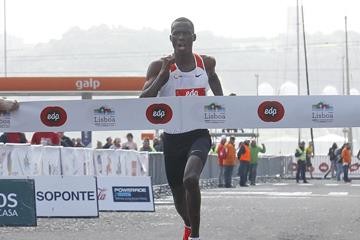
Despite the rain and wind, 2018 Venice Marathon winner Tanui took more than five minutes off her PB to improve the Italian all-comers' best which had previously been Vivian Kiplagat’s 2:22:25 set in Milan in 2019.
Kiptanui achieved the second-quickest men’s time ever run on Italian soil, clocking 2:05:47 to improve on his previous best of 2:06:17 run in Dubai in 2020. Only Titus Ekiru with 2:04:46, also run in Milan in 2019, has gone quicker for the distance in Italy.
A group of 13 athletes featured in the lead women’s group which passed 4850m in 16:24 and the pack remained 12 strong by 14,910m, passed in 50:18.
Ethiopia’s Rahma Tusa, Gebiyanesh Gedamu and Haven Hailu Desse were among those to the fore along with Tanui at halfway, with the 22,470m mark passed by that lead group in 1:15:19.
By 30km a group of four athletes was breaking away, with Tanui joined by her fellow Kenyans Gladys Chepkirui and Delvine Meringor, plus Gedamu. Tanui made a break and continued to move ahead over the final 10km, eventually winning by more than two-and-a-half minutes from her compatriot Purity Changwony, who came through to finish second in a PB of 2:22:46. Gedamu was third in 2:23:23 and Desse fourth in 2:23:52 as the top six went sub-2:25.
South Africa’s Gerda Steyn improved her PB to 2:25:28 in ninth, while 2013 world silver medallist Valeria Straneo was the top Italian in 20th and finished a minute outside the Olympic qualifying time with 2:30:33.
In the men’s race, a large group of 37 athletes went through 4850m in 14:23 and 26 were together at halfway, with 22,470m passed in 1:06:42.
The leaders hit 30km in 1:29:38 before Kiptanui and Ethiopia's Abdi Fufa Nigassa made a move with less than 5km remaining.
Kiptanui – the 2020 Dubai Marathon runner-up – kicked ahead to win by 10 seconds from Nigassa with 2:05:57, as Morocco’s Othmane El Goumri improved his PB to 2:06:18 in third. Yohanes Ghebregergis of Eritrea finished fourth in 2:06:28 and Ethiopia’s Wami Kebede Tulu fifth in 2:06:32 as nine athletes finished inside 2:07 and 20 went sub-2:09.
Germany’s Richard Ringer took more than two minutes off his PB with 2:08:49 to finish 17th, while Italy’s Stefano La Rosa was 30th in 2:11:42, just 12 seconds outside of the Olympic qualifying mark.
(04/11/2021) ⚡AMPby World Athletics
Maruo secures Olympic spot
Satoshi Maruo won the battle for Olympic Games selection on Sunday (11), securing the last remaining place on Japan’s men’s 50km race walk team by winning the national event in Wajima in 3:38:42.
With two team places already decided, athletes had been racing to join Yusuke Suzuki and Masatora Kawano at the home Olympics this summer and intentions were clear from the start. The leaders went through 10km in 44:25 and the pace picked up again as Tomohiro Noda led through 20km in 1:27:18.
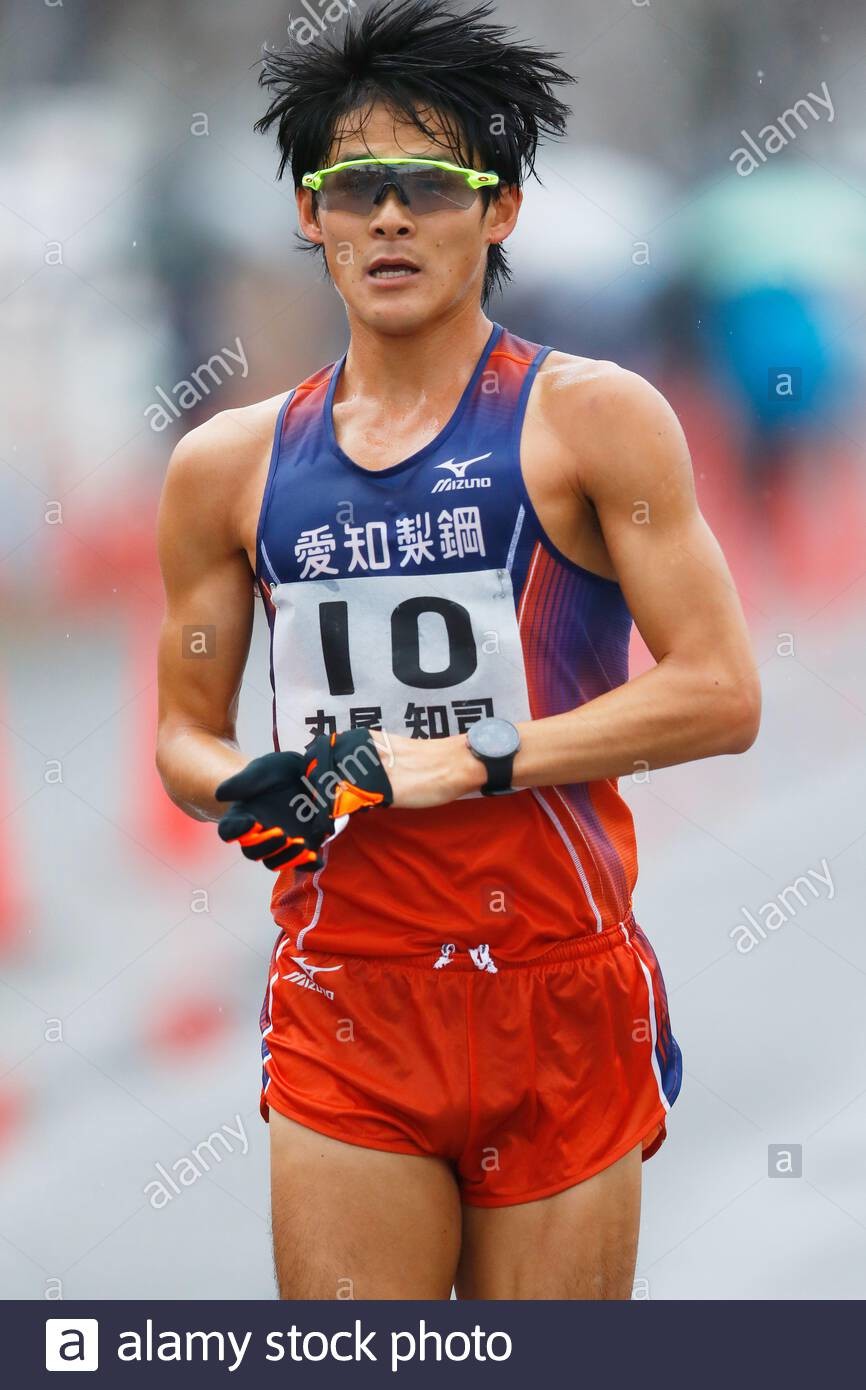
Noda and Maruo – who finished seventh and fourth respectively in the Japanese Race Walking Championships over 20km in February – had broken away by the halfway point, which they passed in 1:48:16, with 2017 world bronze medallist Kai Kobayashi behind them in third.
After a slight dip, the pace increased again and Noda created a gap on 2017 world fourth-placer Maruo but it was not sustained and Maruo made up ground as the pace slowed at around 38km, moving ahead around 41km into the race.
Behind him, 2018 Asian Games champion Hayato Katsuki was working his way through the field and first passed Kobayashi with around 4km remaining. One kilometre later he had moved into second place, with Kobayashi also passing Noda.
Remaining untroubled at the front, Maruo – who was contesting his first 50km race walk since 2019 when he set his 3:37:39 PB – held on to claim victory by almost four minutes.
Katsuki finished second in a PB of 3:42:34, with Kobayashi third in 3:43:31, Noda fourth in 3:45:26 and Isamu Fujisawa fifth in 3:46:27.
(04/11/2021) ⚡AMP
by World Athletics
Oslo Diamond League meeting has been postponed due to pandemic
The Bislett Games in Oslo on June 10 - the fourth event in this year’s World Athletics Wanda Diamond League programme - has been postponed.
Organisers have said it is "impossible to arrange a normal meeting on the planned date" based on the coronavirus reopening plan for Norway.
Norway's Government issued its plan to restart activity amid the pandemic on Wednesday (April 7) and organisers said "an international meeting such as the Bislett Games will probably not be possible before the middle or towards the end of June at the earliest".
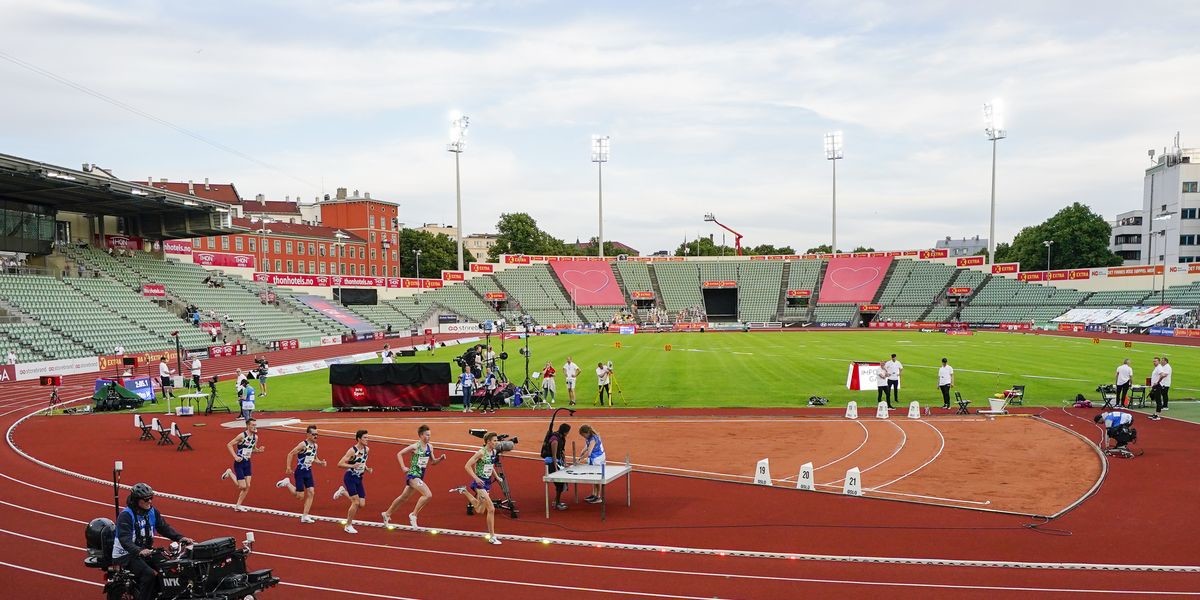
A repeat of last year's "Impossible Games" at an empty Bislett Stadium - which included socially distanced or rarely contested events, highlighted by a 300 metres hurdles world best of 33.78sec by Norway’s world 400m hurdles champion Karsten Warholm - has been ruled out.
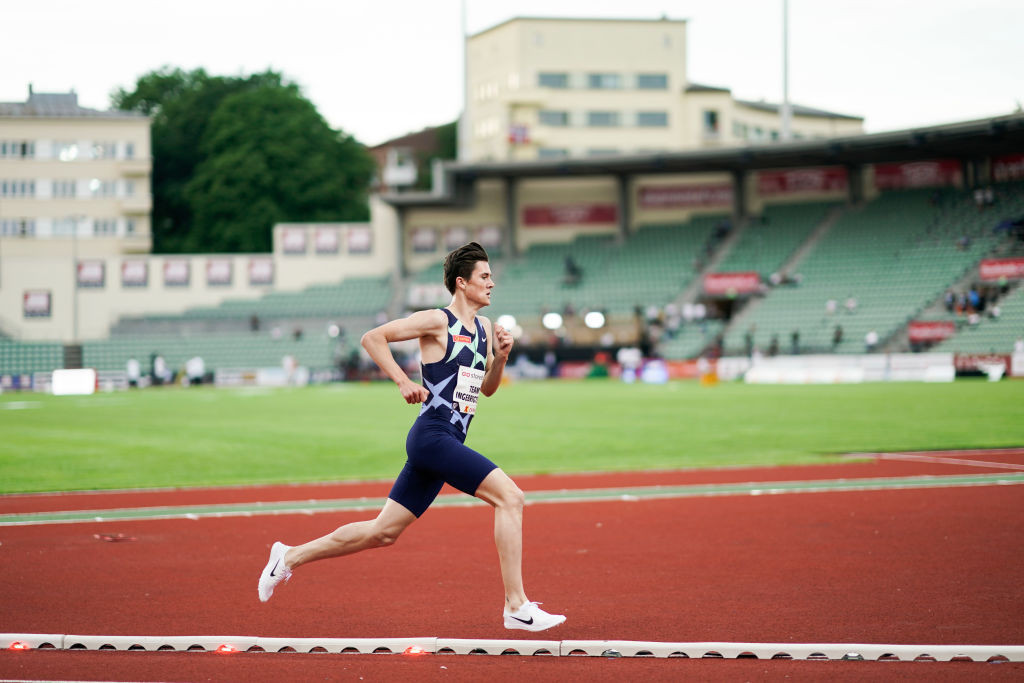
The new dates being considered are believed to be either early July prior to the rearranged Tokyo 2020 Olympic Games or in August.
The Diamond League board said it was clarifying the start to the season, which is due to open on May 23 in Rabat in Morocco, with Doha hosting the second meeting on May 28 and Rome the third on June 4.
World Athletics has produced a full, 14-meeting programme for this season’s Diamond League, which is due to conclude with a two-day final in Zurich from September 8 to 9.
(04/10/2021) ⚡AMPby Mike Rowbottom
Pro Runner Rebecca Mehra Dances Her Way to $5,000 on Ellen DeGeneres’s Game Show
On March 28, Mehra, 26, who runs for Oiselle’s Littlewings Athletics, appeared on Ellen DeGeneres’s gameshow, called Ellen’s Game of Games. On the show, contestants participate in four different preliminary games; the four winners then advance to a semifinal and final round for a chance to win $100,000. The middle-distance runner, who based in Bend, Oregon, filmed the episode in August and September.
The Ellen DeGeneres Show reached out to Mehra after she tweeted about helping an elderly couple get groceries at the start of the pandemic, and her experience went viral. Celebrities, including DeGeneres, retweeted Mehra’s tweet. Because of pandemic-induced uncertainty, Mehra didn’t go on DeGeneres’s talk show, but she was instead recommended for the game show.

“I actually grew up watching game shows,” Mehra told Runner’s World. “Game Show Network was on all the time at my house. I don’t want to call this a bucket list iteme because I didn’t know it was on my bucket list. When would I get a chance to meet Ellen, compete on a gameshow, and get into my pro athlete mindset in musical chairs again?”
After a few practice games via Zoom and a quarantine at a Los Angeles hotel, Mehra was whisked away when it was her time to compete. Masked up until the moment before they started filming, Mehra walked in and awaited her fate in front of an empty studio audience.
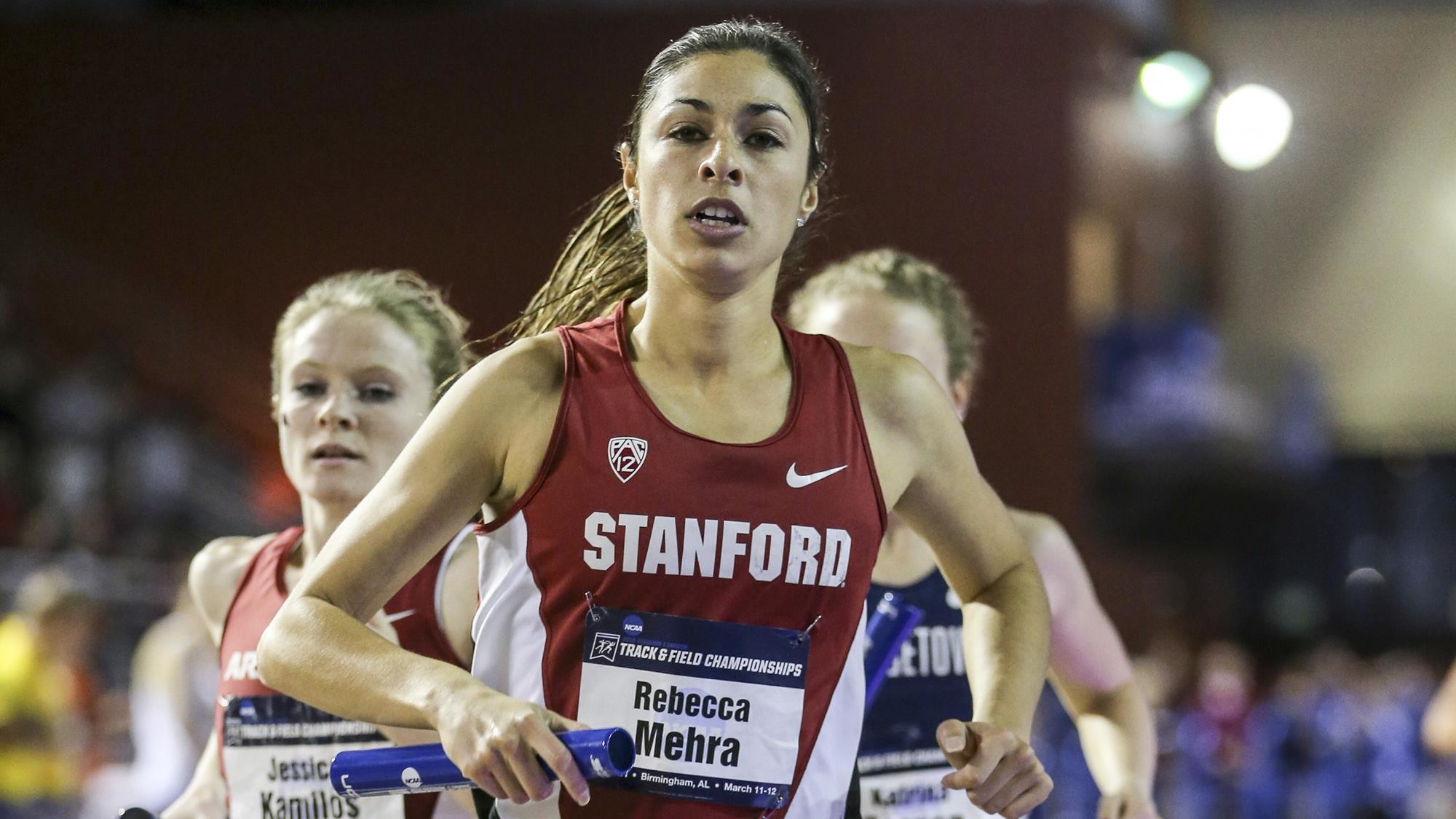
“Watching it live on Sunday, they did a good job making it feel like people were there,” Mehra said. “It was so quiet when it was going on and on TV it seems like a big party.”
This was noticeable in Mehra’s first challenge: Blindfolded Musical Chairs. Music really did play, but it was actually silent as she crawled, rolled, and boogied her way into a spot in the next round.
“You have to commit and go with it,” Mehra said about her blindfolded dance moves. “Do the dance, crawl on the floor. It looks sillier if you don’t. I went with it, and I got to give Ellen a hug, so it was a once-in-a-lifetime experience.”
In the semifinals, she and three competitors had to answer a question correctly, or endure what looked like a pretty terrifying fall through a trap door.
Winning on the question, “Where were gummy bears invented” (spoiler alert: Germany), Mehra advanced to the finals. (You can watch this round below.)
“In the show, they cut out two to three questions,” Mehra said. “It was a smart group of people, and we went several rounds before people dropped. I got lucky knowing the answers I did, and within 10 minutes, we were filming the last round.”
Mehra’s final challenge was a speed-question round; each correct answer would increase her winnings. While she struggled to get into a rhythm, she was able to walk away with $5,000. On the show, she stated she hoped to donate a portion of her winnings to Littlewings Athletics, which is giving more opportunities to up-and-coming women in the sport. She plans to follow through on that promise.
Also, Mehra presented DeGeneres with a Oiselle goodie bag.
If you are interested in checking out the full episode, and to see Mehra’s dance moves, you can find it (with commercials) here.
This isn’t the first time we’ve seen pros on our regularly scheduled TV programs. Back in February 2020, Tatyana McFadden and Scout Bassett appeared on an episode of Project Runway. 

(04/10/2021) ⚡AMPby Runner's World
Kenyan Emmanuel Naibei wins Lagos City Marathon
Naibei ensured Kenya’s dominance when he won the race in 2 hours, 11 minutes and 37 seconds, beating a field of 300 athletes in the Nigerian capital on Saturday.
Naibei, who finished second at the 2019 Guangzhou Marathon where he set his current Personal Best time of 2:08:27, edged out the Ethiopian duo of Deresa Geleta and Demiso Gudeta who finished second and third respectively, for victory.
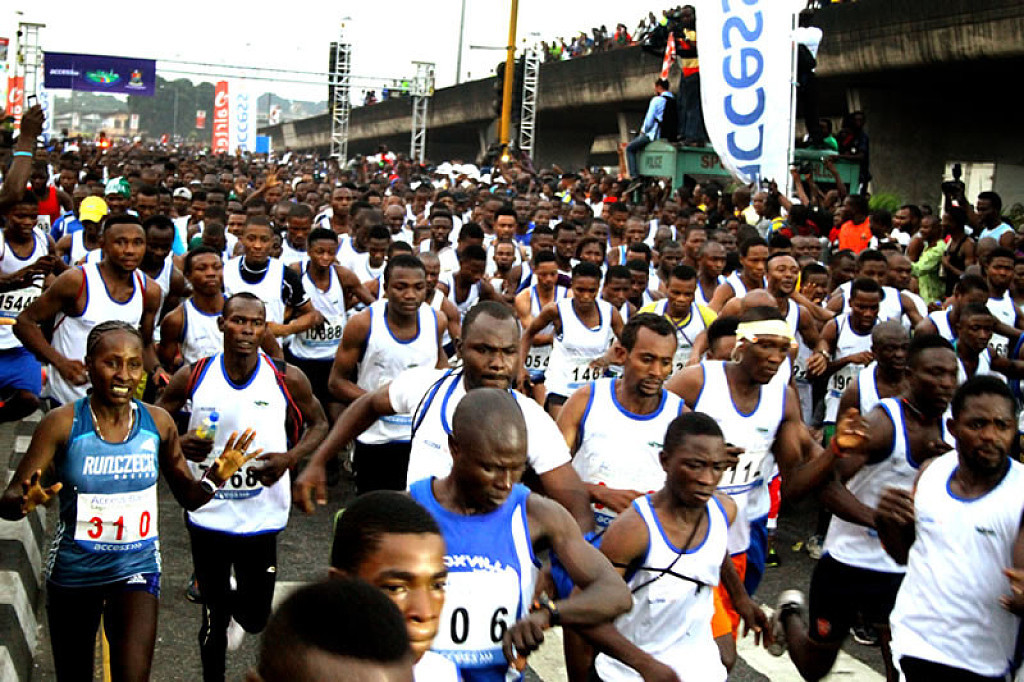
Naibei walked home with the winner's purse of US$ 30,000 (Sh3.2 million) while Geleta and Gudeta went home with $20,000 (Sh2.1 million) and $15,000 (Sh1.6 million) respectively.
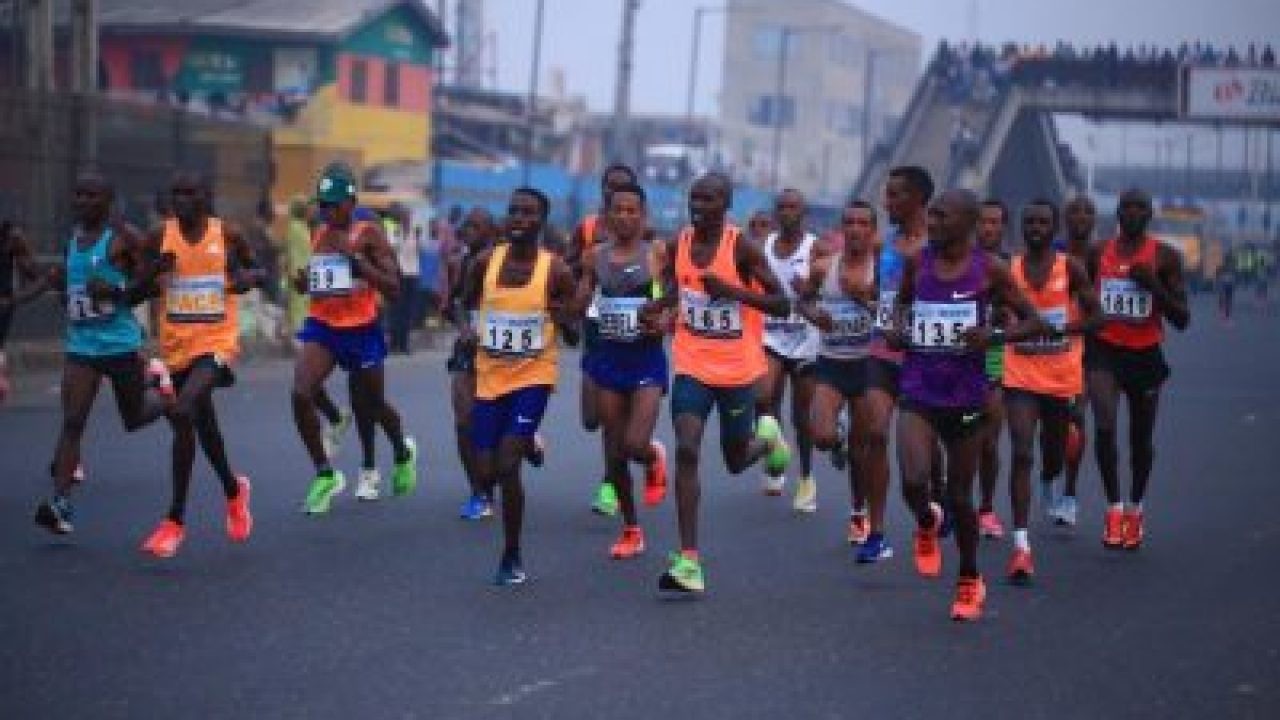
This was the fourth time a Kenyan is winning the men’s race in Lagos.
Last year, Kenya’s David Barmasai Tumo won the fifth edition of the marathon in a course record time of 2:10:22 as Sharon Cherop went for the women’s crown in a course record time of 2:31:40, dethroning Ethiopian Meseret Dinke.
However, Dinke was on top of her game this time around to reclaim the title in 2:32:16, beating Kenya’s Celestine Jepchirchir to second place.
Third place went to Desta Muluneh from Ethiopia.
(04/10/2021) ⚡AMPby Ayumba Ayodi
Access Bank Lagos City Marathon
“The IAAF and AIMS have a special interest in the Access Bank Lagos City Marathon so if you see their top officials at the third edition, don’t be surprised. Lagos is one of the few marathons in the world that got an IAAF Label after just two editions. This is a rare feat. The event had over 50,000 runners at...
more...What? 57,890 vertical feet in 24 hours!
31-year-old Italian trail runner and ski mountaineering racer Martina Valmassoi skinned one final time up the 725 meters to the summit of 1,534-meter Monte Agudo in Italy's Dolomites region. It was her 25th time on the summit in just under 24 hours, and when she reached the top of the Auronzo di Cadore ski area, friends and supporters sprayed her with two bottles of champagne. She had just climbed, on skis, a difficult-to-fathom 17,645 meters (57,890 feet), besting by 868 meters a women's 24-hour uphill ski record set just eight days earlier by Colorado athlete Rea Kolbl.
Valmassoi lives in Pozzale di Cadore, Italy, about a 25-minute drive from the ski area where she ticked off her laps. When she's not skiing around her native Dolomites, Valmassoi is a Community Manager and content creator for Salomon, and co-hosts the coverage of Salomon's Golden Trail race series.
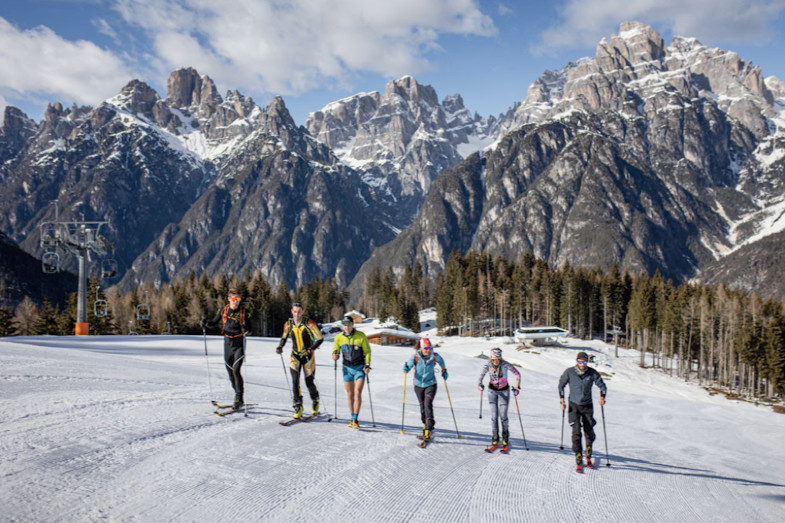
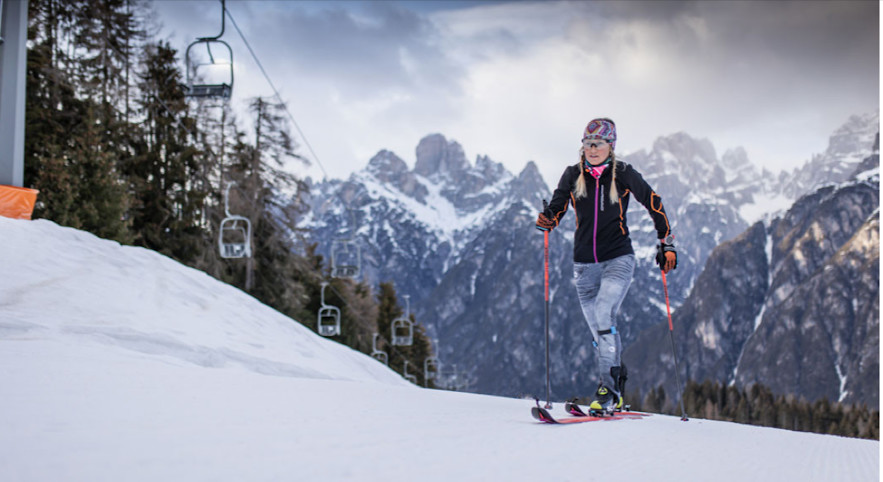
In Italy, and around Europe, Valmassoi is well known for her ski mountaineering prowess. Sponsored by Scarpa, she has been on the Italian national team for 10 years, and with French racer Latitia Roux holds the record for the fastest time in Italy's legendary Sella Ronda ski-mountaineering race. She has placed second at France's Pierra Menta ski-mountaineering race, and has stood on the podium of that internationally-acclaimed multi-day event three times.
I said, "Maybe I should try something crazy, like skiing for 24 hours just to see what happens!" My friend said, "You're crazy!" And we just kept skiing. That was the beginning of January. The idea never went away. Shortly after that, I decided to go for it.
Trail Runner magazine's Chamonix, France, correspondent, Doug Mayer, caught up with Valmassoi while she was resting-which seems like a relative term for her. She had just completed interviews with German magazines, Italian newspapers, Strava, Mountain Planet, and the French daily sports newspaper L'quipe-all during a cross-country drive to Trentino, Italy, where she was working as a freelance photographer at the Campiglio Ski Mountaineering World Cup race. During the interview only a solitary yawn hinted at the whirlwind week that Valassoi had just endured.
Trail Runner: 24 hours and over 17,000 meters is a lot of uphill skiing. Let me rephrase that. It's a $%&@(@ insane amount of skiing in a day. What inspired it?
Valmassoi: I was skiing in the mountains with a friend of mine, and it was my 50th consecutive day on skis. I thought, "Wow, I've been skiing for 50 days!" That had never happened before. I said, "Maybe I should try something crazy, like skiing for 24 hours just to see what happens!" My friend said, "You're crazy!" And we just kept skiing. That was the beginning of January. The idea never went away. Shortly after that, I decided to go for it.
What was the reaction when you told friends and family about your plans?
It was the same from everyone: "What the &*$^@?! What's happening to you?! Why this idea?!" It was pretty funny. My sister took a while to understand it and my mom started to worry that I would not make it.
How did you approach training for the event?
Honestly, nothing much changed. I wanted to do it my way and just ski as much as possible. I wanted to keep on exploring where I live, to get the most out of the winter. Of course, I tried to get in a lot of hours on skis. Even when the conditions were bad and the weather not good, the goal motivated me to get out.
But, you had to do some time at the ski area, right?
Yes. I didn't want to train that much on the slopes, but I knew I had to test myself there. I decided to do a test run a month before the event. I did a 5,000-meter day to see if I had the right slope and see how I did. It felt good and it gave me an idea of the pace I would need to set a record.
In the last month, I did a block of two weeks of training. I did 31,000 meters in those two weeks to create a good base. After that, I would train three times a week on the slopes. During that time, I organized the event and rested.
It was close to home, and steep with a good elevation gain. But, mainly, I picked it for the view! I have seen that view so many times, but every time I go up, I still stop and look. At the summit, I can turn around and see all the places I go on skis, and where I trail run in the summer.
It's incredible how much energy you can take from your surroundings and the mountains around your home. I have so many memories there. It all comes to my mind when I am up there.
Some resorts offered me money, but I don't know if I could have done this in another location. For me it wasn't so much about the record, as it was about doing it at home with friends. One of my main goals was to not be alone in this project, to involve family and friends. That made it really special.
Can you tell us about the logistics?
I decided to have the aid station at the top, because the bottom is in the shade and cold. I wanted my friends to have fun, and at the top there is the view and the hut, the Monte Agudo Refugio. So, my friends could stay warm in the refugio. The caretaker was super cool. He helped a lot.
Except for the first six or seven hours, I almost always had someone skiing up with me. Those times, I could go without my pack. Sometimes, I would listen to music on my phone. I would eat at the top or on the way down. On the climb up, I would bring a 250ml flask.
So how did it go?
It went great! I would never have imagined that it would go so well. You always wish for the best but you also have to expect the worst.
I had a plan, of course, and I wanted to keep up a certain pace-a lap an hour. I knew I could do that for the first 12 hours, but after that well, I had no idea. That was the scary part.
During the night, I kept the pace I wanted. I did have some problems. It was cold and windy, and I got cold. I kept my jacket on and decided I would rather sweat. I had to take a lot of bathroom breaks. I started to feel sick. I was worried. But I stayed positive and focussed.
From 10 p.m. to 6 a.m. I had a friend of mine, Michele Da Rin, who had his own personal challenge to ski through the night. He did 5,000 meters with me. Cheering him on gave me some extra motivation. I realized I was doing OK, if I was able to push him along, too!
You know, I felt pretty good all the time. I had some moments, of course. Sometimes it was not exactly hard, but it took more concentration and focus to stay on the pace.
What was the worst thing that happened?
It was probably prior to the event. Because of the pandemic, I had to plan everything really carefully. That was stressful.
How so?
Until right up to the start, I wasn't sure we could do it, because of the situation with Covid here in Italy. I let friends know of my plans, of course, but otherwise I kept it quiet.
To plan it, I had to give names of people who would be allowed there for support. I had to ask the Mayor if the hut at the top could stay open for us. He gave permission. That was really cool of him.
How did you fuel for a full 24 hours?
I prepared a food plan, though honestly it was kind of random. I tried to get real food every two laps, and I always tried to eat normal food between those bigger meals.
I prepared rice, polenta, chocolate and coconut bites, dates, dried fruit, toast, soup, potatoes and Spring gels. I had electrolytes to drink, plus ginger tea with sugar and lemon. Of course, by the end of it I was drinking a lot of Coke!
What's the reaction been like?
I've done a lot of interviews since I finished. My parents and friends were completely blown away. They had never seen an attempt like this.
I had a timekeeper who started out being kind of quiet, but later on he really got into it and was cheering me on. He was super stoked. For me, it gave me so much energy to see the faces of family and friends. Doing something so big with your friends and family makes it extra special.
Where does ski mo fit in with your trail running?
I'm more of a ski-mo athlete than I am a trail runner. Trail running is still kind of new for me. I started running as a way to train for ski mountaineering.
My trail running has improved, and I have moved into the longer races-I think because I like to train more slowly and enjoy the view! I think my best result was 2019 in the [Chamonix, France] Mont Blanc 90K. I got second place. I was really happy. That was a big goal and I surprised myself by finishing an hour earlier than I expected. I've had some other good results. In Kima, Italy, I was fifth in a really stacked field, after not much training. I want to do that race again. Tromso, Norway, I have finished third and fifth.
So what's next?
I need to process what just happened-to enjoy it. And I am still not sure how my body will react! Right now, my legs are really tired.
Soon, the trail-running season will start. Right now though, I want to rest. I don't always have to do something to be satisfied. After some rest, I will train for a cool summer adventure.
This was a big thing. It was, by far, the result I am most proud of in my athletic career. Normally I don't like to say this kind of thing, but I think I did a good job. I managed it well.
It took a lot out of me, but it also gave me more.
For someone who's reading this, and wants to try out ski mountaineering, what do you suggest?
Ski mo is really just backcountry skiing with skinny skis. If you like the backcountry, like to be in the mountains and want to train with plenty of vertical, it's great. Exploring with skis is something everyone should try. It gives you so much freedom.
Of course, you always need to be aware that the backcountry environment can be dangerous-more dangerous than in summer. There's a lot to check. You have to be concerned about things like avalanches. And I don't recommend starting by skiing for 24 hours!
What's important is learning skills. For example, the downhill is harder than the uphill. For me, though, ski mo is super fun. If you love trail running, you will probably like ski mo.
(04/10/2021) ⚡AMPby Trail Runner Magazine
How Doing Nothing May Make You A Better Runner
The last few decades have witnessed a proliferation of research uncovering the profound effects of meditation on emotional wellbeing and mental health. The ancient Eastern practice has boasted a wide swath of miraculous benefits including the ability to reduce stress, enhance empathy, improve cognition, and even slow aging. But does it offer any aid to runners looking for a mental edge?
The answer is a resounding yes. While runners grind through speed work, tempo runs, and weight sessions vigorously training their bodies to perform to maxim capacity in races, the mind doesn't receive nearly as much attention - yet victory or defeat happen in the mind first. Our brain is an organ that can be either our greatest ally or most ruthless enemy in those vulnerable moments during a race when we are faced with the choice to push victoriously through pain or succumb to suffering by slowing down. It all depends on how we train it - and research has found certain meditation techniques to be unrivaled in powerfully honing the mind.
Beyond running, if you haven't tried meditation yet, this chaotic and precarious year is a good time to start a practice.
What Exactly is Meditation?
The mind tends to produce a lot of chatter, creating stories about the future, replaying the past, worrying, judging, fantasizing, etc. Meditation seeks to calm the erratic thought currents of what is sometimes referred to as the "monkey mind" by attuning us to the present moment.
An internet search will take you down a rabbit hole of various meditation practices, but one of the most well studied, and that which most of the research in this article refer to, is mindfulness meditation. In this practice, you focus intently on one specific thing or sensation, whether it be your breath, an object, or a body part, for a set amount of time. The mind will naturally wander, the idea is to notice when it does and bring your attention back to your point of focus.
And somehow, this "do-nothing" practice boasts some pretty profound benefits for endurance athletes.
Benefits of Meditation

Enhanced Focus and Mental Resilience
Running is a form of stress. The greater the intensity of the run relative to a person's level of fitness, the more stress is generated. While a good deal of that strain is physical, some of it is mental. Prolonged strenuous training, such as a tempo run or distance race, requires enhanced attention and focus on continuing to push oneself into increasing levels of discomfort. Research has shown that practicing mindfulness meditation a few minutes each day can increase the willpower, focus, and emotional resilience necessary for sustained endurance performance by building up gray matter in areas of the brain that regulate emotions and dictate decision making.
For example, in a 2017 study on college football players, mindful meditation was found to strengthen sustained attention and wellbeing among participants in periods of high stress. The participants were divided into two groups and enrolled into either a 4-week "relaxation training" program or a "mindfulness meditation" program, each lasting 2 hours per session. The relaxation group listened to soothing music and learned to systematically and progressively relax their muscles (a common tactic within sports psychology), while the other group was taught mindfulness meditation, which involves paying close attention to breathing and the present moment. Both groups were given 12-minute daily practices to do five days per week. The study was conducted over a stressful 4-week period during the players pre-season summer athletic training when they do especially intensive drills, as well as take summer school courses. As a group, the players degraded in their attentional capacity and their emotional wellbeing, but the amount of degradation differed between the mindfulness meditation group and the relaxation group.
"The mindfulness group didn't decline, they stayed stable over time, whereas the relaxation group actually got worse" says Dr. Amishi Jha, an associate professor of psychology at the University of Miami in Florida, who was a part of the research team. "Within the mindfulness group, those that practiced more, they did their daily homework mindfulness exercises more regularly, they actually benefited more. Their wellbeing was better and their attention was better."
The study was done on football players, but it holds some pretty profound implications for athletes of other disciplines such as running. In fact, 2004 Olympic 2004 Olympic bronze medalist and American marathon record holder Deena Kastor has used meditation practices to enhance her running performance with one of the primary benefits being enhanced focus.
"The benefits I've seen from a performance side, is being able to focus solely on the rhythm of my breath under stressful races," says Kastor, who has been practicing versions of mindfulness meditation and visualization-based meditation for two decades. "Whether I'm anxious to make a move, being shoved or tripped, feeling doubt or fatigue, I can easily focus on my breath until a better thought comes in to help me through the moment."
Dr. Jha emphasizes that when elite athletes underperform, it isn't typically because their body gave out, but rather that their mind gave up.
"What we find in most elite athletes is that their downfall is not because the body conks out, it's that the mind is fighting with them," explains Jha. "So these capacities to focus and really regulate your mood and reactivity become really key in preserving their performance."
Better Cope With Discomfort and Pain
During more intensive training periods, meditation practices can be helpful for reducing muscle soreness and pain. It may also help you push through make-or-break moments in a race or training session when you can either transcend pain or let it slow you down.
Recent findings have demonstrated that mindfulness meditation significantly reduces an individual's sensitivity to pain. A 2015 study published in the Journal of Neuroscience looked at how study participants responded to painful heat stimuli before and after attending four 20-minute meditation training sessions over a four-day period. After the meditation training, participants rated pain, on average, as 57% less unpleasant and 40% less intense.
"This study is the first to demonstrate that mindfulness meditation is mechanistically distinct and produces reductions in pain intensity and pain unpleasantness ratings above and beyond the analgesic effects seen with either placebo conditioning or sham mindfulness meditation," wrote the researchers in their paper.
Race More Intuitively
By increasing your awareness and observation, mindfulness meditation may also give you a mental edge during a race by allowing you to better read your competition and react accordingly.
"The senses meditation I practice has allowed me to take in the rich racing experience and has even allowed me to sense a competitors moves before she makes it," says Kastor, referring to a type of mindfulness meditation technique she uses that focuses on a sensation. "And the visualization has created a powerful belief that what I want to accomplish is possible. In visualizing I try to see a variety of race scenarios and succeeding in all of them. When I can see it, I can believe it, and then become it."
This relates to an area of research that Dr. Jha is interested in further exploring called "embedded practices," which involves being able to integrate mindfulness practices into a physical activity. While mindfully running does not replace the mindfulness meditation practice where you sit in silence focusing on your breath, it can supplement it.
"If you can start incorporating mindfulness practices into your running, then you're kind of getting more bang for your buck," says Dr. Jha. "You're both training your body and you're training your mind. And frankly, because you'll want to use your mindfulness practice during the competition itself, it's really good to start practicing that while you're actually running."
Treat Anxiety and Lower Cortisol
Excessive stress and elevated cortisol levels associated with anxiety can be detrimental to recovery and performance resulting in unpleasant consequences like fatigue, insomnia, hormonal disruptions, mental fog, vulnerability to infection, and increased risk of injury. If you are someone who struggles with anxious thoughts or racing anxiety, meditation can help you regulate your emotions to calm yourself down in moments that trigger stress.
Kastor says that the most unexpected benefit she experienced through her meditation practice was being able to have complete control to calm herself in moments of stress such as traffic, a cancer diagnosis, grief, and fatigue. By strengthening a person's cognitive ability to regulate his or her emotional response, mindfulness meditation has long been recognized as an effective antidote for anxiety. Studies using brain imaging have found that meditation provides relief to anxiety by activating the anterior cingulate cortex, ventromedial prefrontal cortex, and anterior insula - areas of the brain that are involved with executive function and governing worrying. Other studies have shown that mindfulness meditation reduces stress by lowering cortisol levels in the blood.
By activating this relaxation response, meditation has been shown to reduce inflammation and facilitate higher quality sleep making it a promising powerful tool for speeding up recovery in athletes.
How to Start Meditating
If you're interested in beginning your own practice, Dr. Jha lays out a practical template for beginning your own mindfulness meditation.
"A very common foundation of mindfulness meditation practice involves sitting comfortably, paying attention in a quiet place for a dedicated period of time, and then the instruction is to pay attention to, for example, breath-related sensations," explains Dr. Jha. "It can be any kind of anchoring object you want. And your job is to keep your attention focused on that. And then when your mind wanders away, as it will, you just bring it back."
One of the techniques Kastor practices is breath-awareness meditation in which she says she finds 5-10 minutes to be calming. "If I have time, I love to get to a place where my breathing focus dissolves and I can be clear of any and all thoughts," she says, estimating the meditation to last 10-30 minutes. Other times, she closes her eyes and focuses on the sounds, smells, tastes, and feel of her surroundings, typically in nature. For her visualization meditation, Kastor imagines a successful event, such as a race or a presentation. "By visualizing, allowing your mind's eye to see something happening, your body gets to work neurologically to see it to fruition," she explains.
Kastor suggests that anyone who wants to get into the habit of meditating practice at the same time and place every day. Typically, whenever fits best into your schedule whether it's right away in the morning or in the afternoon before picking up the kids from school. (Though, you should try to avoid practicing at times that you're so tired you risk falling asleep mid-meditation.) "The key is to keep at it long enough so you can feel the broad power of its benefits," Kastor notes.
So how long is long enough? Dr. Jha recommends practicing for 10 to 15 minutes a day, the point at which some immediate results of meditation begin to kick in, for five days a week. Her lab has found that some of the benefits of mindful meditation, such as sustained attention, begin to show around four weeks of practicing. A 2016 meta-analysis on mindfulness meditation found that the practice begins to alter brain structure and activity after two months.
As meditation has become more mainstream, various digital programs and apps have been marketed over recent years to make meditation practices more accessible to the public. Kastor uses the Headspace app and recommends it for beginners because it includes guided meditation practices and can feel less intimidating.
"We think of the body as something that needs training to achieve excellence and wellness, and the mind, the brain, are no different," emphasizes Dr. Jha. "The challenge has been that we don't have great science as to what to offer as a training program, and mindfulness meditation happens to be a very good candidate based on the research."
(04/10/2021) ⚡AMPby Trail Runner Magazine
The Red Sox Unveil Boston Marathon-Themed Jerseys and Apparel
We want these as much as we want a Boston Marathon jacket.
The Red Sox have unveiled Boston Marathon-themed jerseys and apparel in the traditional yellow and blue color scheme to honor Patriots’ Day.
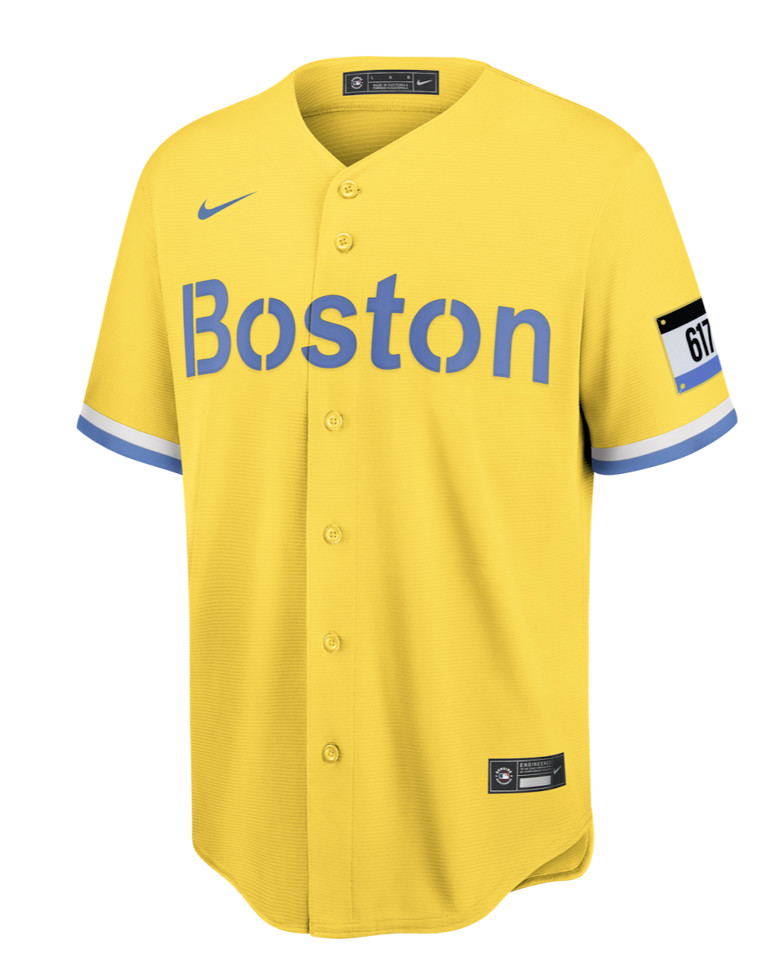
The jerseys have ‘Boston’ written across the front in a font inspired by the finish line on Boylston Street, and feature a patch that resembles a race bib with the number ‘617’—Fenway Park’s area code—on the left sleeve.
Apparel goes on sale to the public on April 6, and the jerseys will be worn by players on April 17 and 18.
If you’re a fan of baseball and running, the Boston Red Sox just dropped the apparel of your dreams.
With Patriots’ Day—the usual date of the Boston Marathon—coming up, the Red Sox unveiled marathon-themed jerseys and apparel as part of a series of alternate jerseys designed by Nike for seven MLB teams this season.
You love the Boston Marathon. So do we! We’ll keep you up to date on all the latest information with RW+ ðŸƒðŸ½â™€ï¸ðŸƒðŸ»â™‚ï¸
You love the Boston Marathon. So do we! We’ll keep you up to date on all the latest information with RW+
Taking inspiration from the marathon’s permanent finish line on Boylston Street, the jerseys use the classic yellow and blue that runners know and love. On the sleeves, you’ll find another nod to the marathon in the form of a racing bib with the number ‘617’ which is the area code for Boston and Fenway Park.
These jerseys will be worn by players on April 17 and 18, when they play the Chicago White Sox at home. On the April 19 holiday, players will wear the Boston Strong jerseys, which feature ‘Boston’ instead of ‘Red Sox’ on the front.
If a baseball jersey isn’t your style, you can grab a t-shirt, hoodie, or dugout jacket with the marathon colors. (You can find the entire collection here.)
You can order your jersey starting April 6 on Nike’s SNKRS app, nike.com, at the MLB Flagship Store in New York City, and other select retail locations. If you’re interested, you better act now before you miss out.
Six other teams will have City Connect jerseys designed by Nike this season: the Miami Marlins, Chicago Cubs, Chicago White Sox, Arizona Diamondbacks, San Francisco Giants, and Los Angeles Dodgers. We’d love to see more marathon-themed jerseys come out of these cities as well.
(04/10/2021) ⚡AMPby Runner’s World
Briton Hutchings calls for records reset for high-tech shoes era
World Athletics should introduce a new set of records for times set by athletes wearing high-tech footwear, said British Olympian Tim Hutchings, as debate continues over whether the shoes give runners an unfair advantage.
Footwear developed by Nike played a role in two of the biggest distance-running achievements of 2019, with Eliud Kipchoge’s sub-two-hour marathon in Vienna and Brigid Kosgei’s record-breaking run at the Chicago Marathon bringing the Vaporfly shoes into the spotlight.
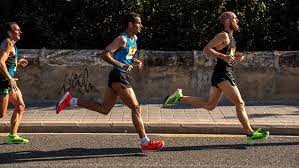
While World Athletics banned the shoes from professional sport last year, Nike has launched a new version of its Alphafly footwear that complies with new rules introduced by the governing body.
"People from many quarters are saying stop fussing about the shoes. Just move on and enjoy the racing. To which I'd respond, I've always enjoyed the racing and will continue to," Hutchings told The Times here.
“But I want to enjoy and respect times as well, not just cast aside that element. A reset would enable this. The shoes are here to stay, sadly the genie is out of the bottle.”
Kenya’s Ruth Chepngetich shaved 29 seconds off the world half marathon record on Sunday and British triathlete Beth Potter is awaiting ratification of a world record time from a low-key 5km road race a day earlier.
Both athletes wore high-tech footwear made by different manufacturers.
“Let folk race and record new era personal bests,” said Hutchings, who finished fourth in the 5,000m at the 1984 Los Angeles Olympics.
“A date needs to be identified retrospectively, then everyone would respect times in the right context. Athletes deserve that.”
(04/10/2021) ⚡AMPThe art and allure of 24-hour track racing
Author Michael Stocks gives his perspective on what it’s like to tackle the challenge of running for an entire day PLUS win a copy of his new book One-track Mind
Most us have experienced the feeling of standing on the start line of a track race, consumed by the mixture of tension, trepidation and anticipation of what lies ahead.
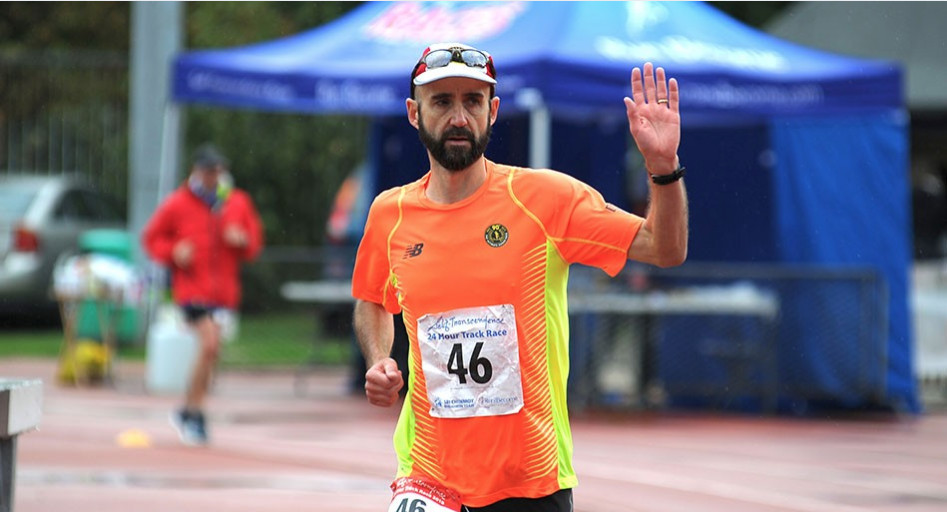
Not so many of us, however, will have stood on that start line knowing that the finish line is a full 24 hours away. Michael Stocks is one of those people and his new book One-track Mind: What Running 150 Miles in a Day Can Teach You About Life is a beautifully written account of everything involved in a challenge which test the limits of physical and mental endurance.
The race about which he writes is the 2018 edition of Self Transendence 24 hour, which takes place annually on the track in Tooting Bec, South London.
Rather than it being a case first past the post, when the hooter sounds after 24 hours victory goes to the person who has covered the greatest distance.
A place on the Great Britain team for the 24 hour World Championships was part of the incentive and Stocks manages to take the reader on just about every step of the incredible journey which unfolded along that 400m lap.
He will be back in action later this month at the Centurion Track 100 race in Ashford, with designs on breaking the V50 100-mile world record of 13:27:27 which is currently held by Russian Oleg Kharitonov.
So what is it that draws him to this particular strand of endurance running?
“In a way it suits my character and plays to one of my strengths which is that when I’m running I don’t really mind where I am – the act of running is the thing, if it’s a race,” says the man who has competed for both Great Britain and England.
“I do love going to beautiful places and running – and then I’m aware of my surroundings – but if I’m racing then really I don’t much mind where I am because it’s about the race and the running and the movements.
“I can honestly say that the fact that I was in the same place, running around and around wasn’t a big thing for me, though I did prepare mentally for that, which I think is really important.”
Stocks admits to being daunted ahead of the race getting underway but, as many long distance runners will attest, breaking the task at hand down into manageable chunks is as important as it is mentally helpful. 24-hour track racing is no different.
“I broke it down into half hours,” he says. “We know we need to drink every half hour, to eat every half hour and that really was my horizon. I just tried to stay in it and not think longer than half an hour.
“But then you’ve also got the change in direction every four hours, which was really important. I was also ticking off every 10k early on, so you kind of find those little goalposts, or goals and then I think the key when you when you get to them is not to think ‘okay I’ve done one hour but I’ve got 23 to go’ but rather to think ‘I’ve got one hour’ and to put that hour behind you.
“I almost had the sense of physically picking something up and placing it behind me and going ‘wow that’s great, I’ve collected that hour’.
“Yes it was daunting, but I really worked hard on staying in the present and thinking about what I’d done rather than about what was to come. It wasn’t successful all the time but on the start line I was confident that I had prepared well enough to get through it.”
One key challenge to overcome during a 24-hour race is, of course, running through the night. Stocks had never done it before and the experience was one of the most memorable and enduring points of the event.
“When I got through the night and the light came I suddenly realised how special the night had been,” he says. “I was really struggling a lot for a lot of it, and obviously you are late in the race, but there was this complete quiet and a sense of nothing outside. It creates this very unusual environment.
“I went through some of my worst stages and bad patches in the night but when I got to the end of those I remembered how the light looked brighter on the track because there was a wet sheen and you’ve got these massive spotlights, but you’ve got hardly anyone on the track because half of the runners had left by then.
“It was an almost surreal environment and I wanted to cling on to part of that quiet because it was such an unusual and special experience and I also had never run through the night.
“It would have been special in the mountains, too, but there was something about the track and the colours and the sense of quiet that just made it quite, quite special.”
Another special aspect of ultra marathon running, Stocks insists, is the community which surrounds it. From the athletes, to the support crews who literally keep their runners fed, watered and clothed, to the race organisers, the nature of the events create a unique sense of camaraderie.
“One of the things I really wanted to get across in the book is this excellent sense of community,” says the London Heathside runner. “When I left that track and the race it was almost heart wrenching because I felt there was such a sense of presence and positivity and community around the track.
“Everything from the organisers and the whole ethos of their races to the other crews who were supporting all the runners, not just their own runner.
“Paul [Maskell], who I was racing for the victory, we were just increasingly helping each other and encouraging each other and it’s really, really incredible.
“I think it’s probably the adversity that keeps you humble. There are just so many amazing people doing the sport.”
(04/10/2021) ⚡AMPby Athletics Weekly
NN Running has announced its elite field for Mission Marathon
Set to run in the Netherlands on April 18, Eliud Kipchoge will headline the race of about 60 athletes.
The fields for the NN Mission Marathon have been released, and the world finally knows who will toe the start line with Eliud Kipchoge. The races are set to be run in Enschede, the Netherlands, on April 18, and fields of 23 women and 35 men will line up to compete. Kipchoge is the clear favourite for the win, but second place in the men’s race and first place in the women’s are both anybody’s to claim, which will make for a couple of exciting and dramatic competitions.
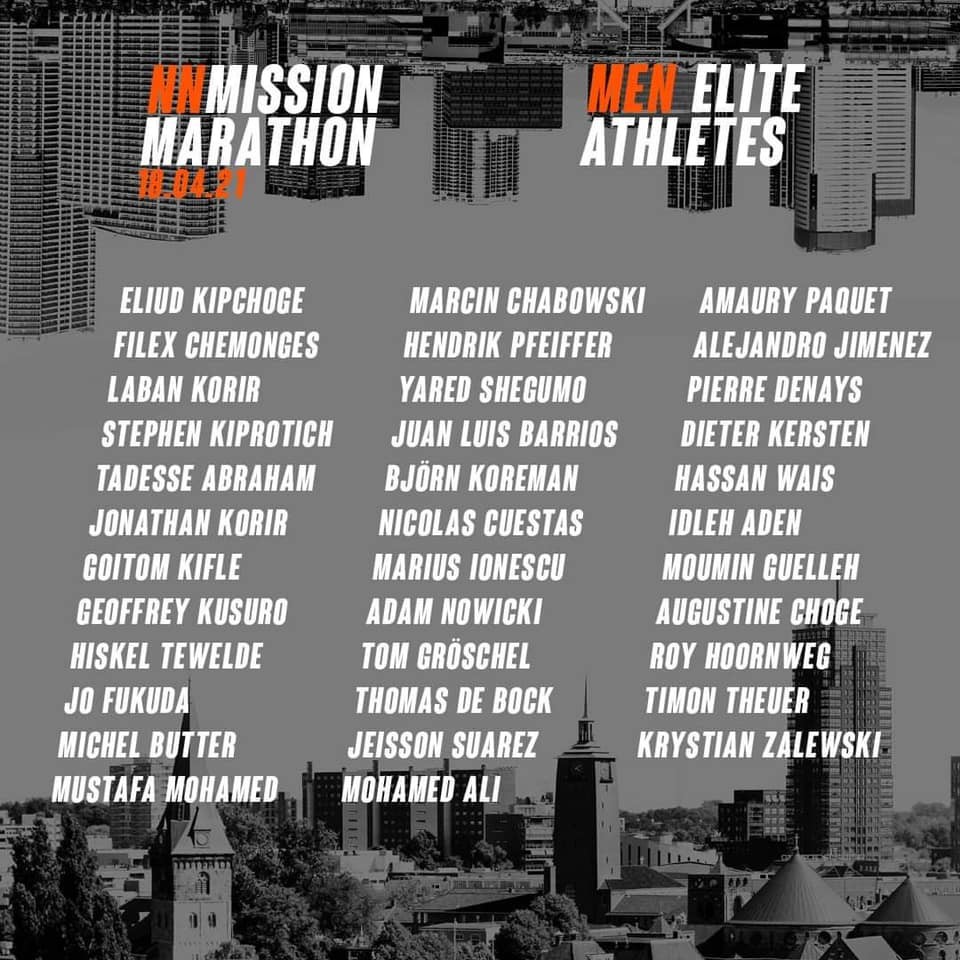
The men’s race
In the men’s race, the pre-race seed times aren’t even close, and there’s really no debate as to who is most likely to win. Kipchoge owns the world record in the marathon with his PB of 2:01:39, and he has also run an unofficial record of 1:59:40. While many of the other runners racing the NN Mission Marathon are looking to qualify for the Tokyo Games or prove that they deserve to be chosen for their national Olympic teams, Kipchoge has a simpler and less stressful reason to run: he needs to bounce back from his poor race at the London Marathon last fall.
He’s still a heavy favourite heading into the Tokyo Games, but his poor 2:06:49 showing in October proved that he is human, and for the first time in years, his competitors might seriously believe they have a chance to beat him. A great race in the Netherlands can boost Kipchoge’s confidence while also knocking down that of his rivals ahead of the Olympics.
The next fastest PB in the men’s field belongs to Felix Chemonges, who owns the Ugandan national marathon record of 2:05:12 (which he ran at the Scotiabank Toronto Waterfront Marathon in 2019). Chemonges hasn’t raced since March 2020, though, and his last result was a sub-par 2:10:08 run at the Lake Biwa Marathon in Japan.
Only one other man in the field, Kenya’s Laban Korir, has run a sub-2:06 marathon in his career, and his 2:05:54 PB puts him at third-best in the men’s race. Out of the 35 men set to race the NN Mission Marathon, 17 have run faster than the Olympic standard of 2:11:30, and 11 runners from that group have broken 2:10.
It’d be safe to bet on Kipchoge for the overall win in the Netherlands, but with so many other runners hovering around the same seed times, the battle for second and third place — plus the mad dash to cross the finish before the clock hits 2:11:30 — will produce must-watch coverage.
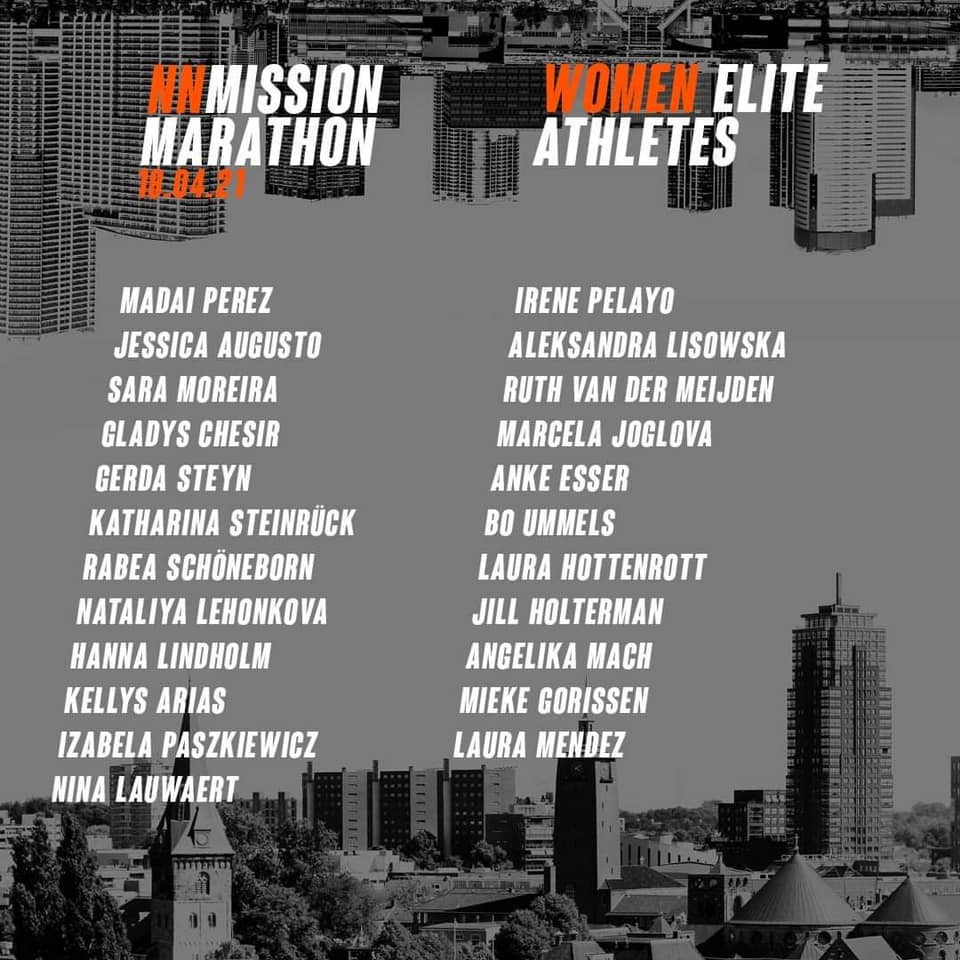
The women’s race has the potential to be much more competitive than the men’s when it comes to the overall win. Mexican marathon record holder Madai Perez has the fastest PB of any of the women in the field. The only thing is that she ran her national record of 2:22:59 all the way back in 2006, and the last time she broke 2:30 came in Chicago in 2017, when she ran 2:24:44. She certainly could take the win in the Netherlands, but her seed time is a bit misleading considering how long ago she ran it.
Next up are Jessica Augusto and Sara Moreira, a couple of Portuguese runners. Augusto owns a PB of 2:24:25, just ahead of Moreira’s career best of 2:24:49. Both of these women have posted tremendous times in the past, but neither has completed a marathon in recent years. Augusto’s last finish came in 2017, and she has one DNF since then.
Moreira has had an even worse few years, and her last finish came in 2015. Since then, she has DNFed three times, including in the marathon at the Rio Olympics. In 2015, though, she placed second at the Prague Marathon and fourth at the New York City Marathon. The next athlete on the start list is Kenya’s Gladys Chesir, who has a PB of 2:24:51, but like her Portuguese competitors, she hasn’t completed a marathon in years, and her last official finish was in 2017.
In total, nine of the 23 women in the field have beaten the Olympic standard of 2:29:30, with several others knocking at the door of sub-2:30 results. Like the men’s race, the women’s run should be an exciting affair, and it’s an event no running fan will want to miss.
(04/09/2021) ⚡AMPby Ben Snider-McGrath
NN Mission Marathon
Eliud Kipchoge will bid to resume winning ways in his last race before the Tokyo games with around 70 runners looking to make the Olympic qualification standard on April 18th in Twente.After suffering a rare marathon defeat in London last October, reigning Olympic champion Eliud Kipchoge makes his return at the NN Mission Marathon in 2021. It is set to...
more...Pikes Peak Marathon legend Arlene Pieper Stine, the first woman to run a sanctioned marathon, has died
Eight years before Kathrine Switzer shocked the world by running the Boston Marathon, Arlene Pieper Stine did her 26 miles in the Pikes Peak Marathon, with a 9-year-old daughter in tow
Arlene Pieper Stine got into the Pikes Peak Marathon in 1959 as a stunt to market her Colorado Springs health club. When she finished, the 29-year-old mother of three was in the record books as the first woman to finish a sanctioned marathon. Unlike the Boston Marathon, the Pikes Peak race never had a prohibition on women participating.
One of Colorado mountain running’s most beloved heroes used to climb up the ladder next to the sign draped across the town of Manitou Springs’s main drag — “Welcome, Pikes Peak Runners” — so that she could send off the hundreds of runners who had packed the narrow street to head off for the summit of the 14,115-foot mountain more than 13 miles and 7,800 of vertical gain in the distance. Then they would turn around for the return trip.
“Runners, ready,” she said into the microphone in the absolute still morning of sun, rain, or even snow of late August. “Go!” said Arlene Pieper Stine.
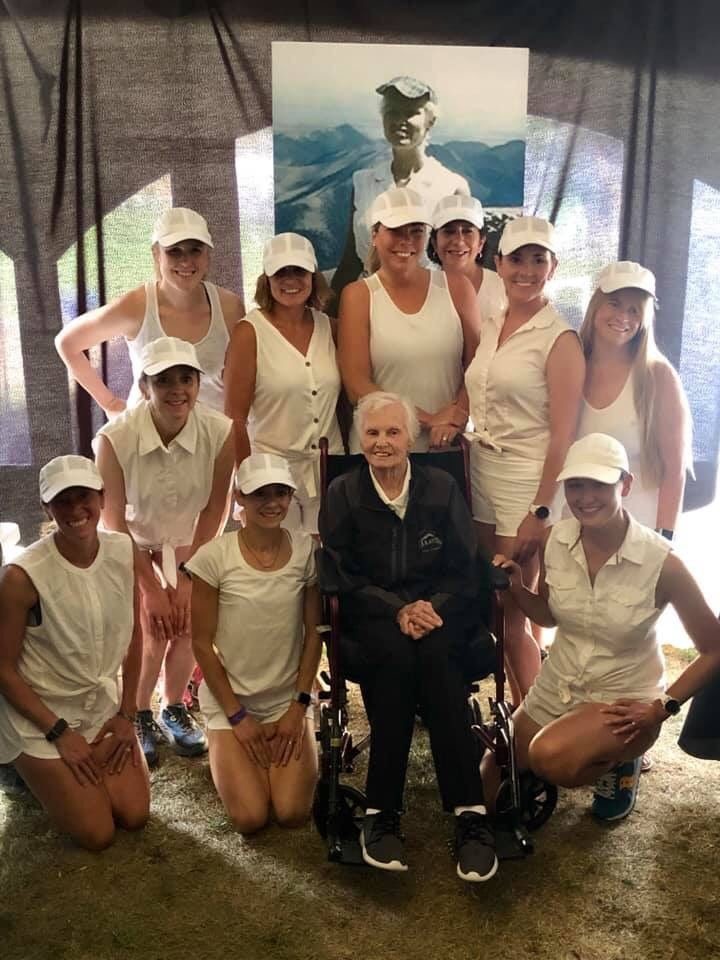
Pieper Stine became the race’s folk hero in 2009 when race officials went looking for the former Colorado Springs resident and health club owner so that they could bring her back to her hometown with some news: Not only had she been the first woman to complete the Pikes Peak Marathon — the punishing switchbacks, rocky single-track, and finally, the last few miles above timberline at over 12,000 feet — but she was the first woman to complete any sanctioned marathon, eight years before Kathrine Switzer became the first woman to complete the Boston Marathon in 1967.
Fifty years after she finished the full “out and back,” as Peak marathon veterans refer to the course, with a time of 9 hours and 16 minutes, Pieper Stine was once again at the start line.
Pieper Stine died Feb. 11, 2021, a month shy of her 91st birthday, as she was trying to build up her strength after battling COVID-19, her daughter Kathy Pieper said.
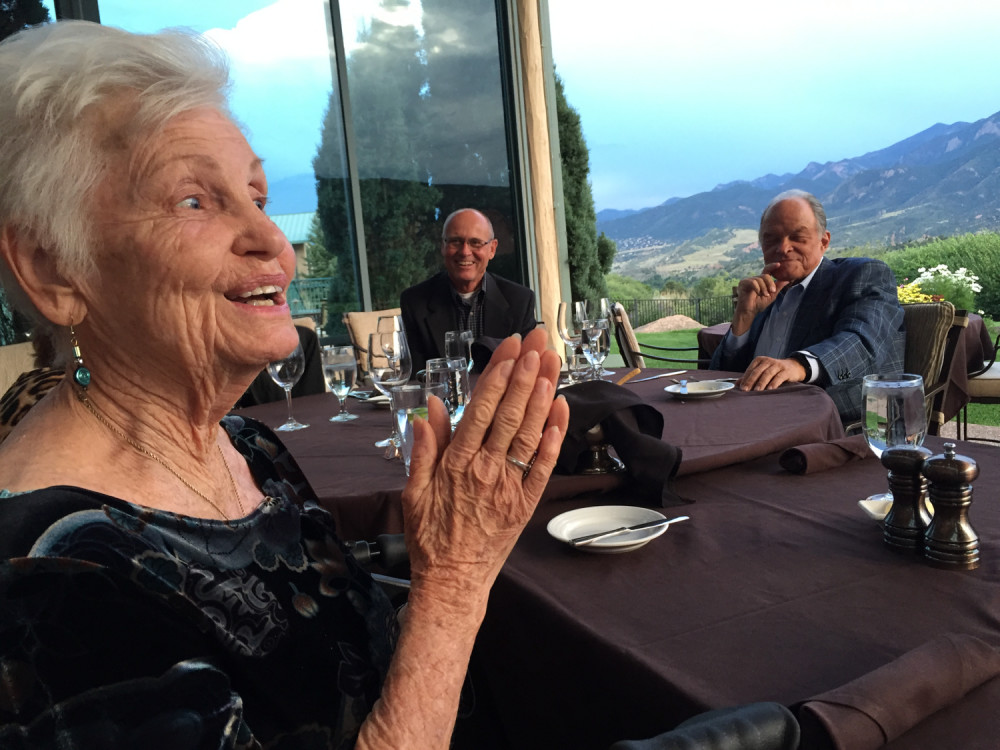
“She got cards and letters from runners and it meant so much to her,” Pieper said. “And I was able to go into her assisted living facility — all covered up — to see her. She ran such a good race.”
She became a role model and inspiration for women runners who looked to her for her boldness and independent spirit — a wife, mother, business owner, and runner who hiked and ran on Pikes Peak with her family in the 1950s, dressed for the race in white sleeveless blouse, white shorts, white headwrap, and tennis shoes from Woolworths.
“We didn’t carry water or have aid stations in those days,” she said in a 2014 interview. “I still remember it like it was yesterday. You can be a wonderful wife and mother, but it showed me that if there’s something you really want to do, you should go for it.”
Year after year, Pieper Stine was as much a part of the race as the unpredictable weather, the friendliness and camaraderie of the runners whether elite or there for a bucket list challenge, or because life wouldn’t be the same without that weekend in late August that turned Manitou Springs into an excited, nervous, and glad-to-be alive running party.
“If I can do it, so can you,” she told the runners who thronged around her in Memorial Park at the Race Expo, at the pre-race spaghetti dinners, or on the streets of town.
From the first time that she and Pieper returned to Manitou Springs in 2009 for the 50th anniversary celebration of the race that they had run together — Arlene at age 29 and Kathy at age 9 — Pieper Stine became living reminders of the beauty and challenge of running the Peak.
“‘It’s a beautiful day for a race,’ I remember her saying as we passed runners that day,” Pieper said of the race she did with her mother in 1959. “And she kept that same attitude every year. She never could believe that runners would come up to her and say ‘Can you just touch my hand for luck?’ or ‘It’s so good to see you again.’ She remembered everyone and had wanted to say something to them all. She could barely walk 10 paces down the sidewalk and people would say, ‘Can I get your picture? Can I get your autograph?’ It was just the thrill of her life when [race organizers] found her.”
In 2019, to mark the 60th anniversary of Pieper Stine’s marathon step for woman runners everywhere, a group of women runners dressed in white sleeveless blouses, white shorts, and headscarves and hats gathered to run up Pikes Peak to mark the occasion. And like the rock star of the trail running world she was for women, Pieper Stine showed up for the celebration.
Four years earlier, in 2015, I had the opportunity to celebrate Pieper Stine myself. The night before the marathon, I joined the Peak Busters gathering at the Manitou Springs City Hall and was reassured by Arlene, as I had come to know her. I had come back from falls and injuries like everyone else on the peak, since my first marathon on the mountain, in 2004.
At that time, Arlene was using a wheelchair after hip surgery. It was my second out and back and I was eager but nervous. “Good luck,” she said. “You’ll have a great time!” I bent down and she took her hand in mine. “OK,” I said, feeling tears about to come, feeling a part of history of this mountain that had both tested me and rewarding my training — or had spit me out during a few memorable Ascents and my first marathon. But I could always count on feeling inspired by the women who had come before me, especially Arlene.
The next morning, she was at the start, shaking hands, giving hugs, and talking to racers through the speakers, to get ready and GO!
“Without pioneering efforts like Arlene’s, we would have no history nor legacy in our sport,” said Nancy Hobbs, executive director of the American Trail Running Association. “Many women — young and old — have been inspired by her.
That includes Pieper, who is planning to train for the Ascent along with one of Pieper Stine’s grandsons, Kyle, 29, who wants to train and qualify for the marathon. She also is survived by daughters Karen, 67, and Linda, 57, and her son, Karl, 66; three other grandchildren and four great-grandchildren.
“Mom wanted to sprinkle some of her ashes on Pikes Peak,” Pieper said. “And I thought, ‘I’d like to go back 60 years later and see if I can do the Ascent.’ Maybe I can finish it, maybe not even do it as a race. And then maybe I could keep her legacy going.”
(04/09/2021) ⚡AMPby Jill Rothenberg
Pike's Peak Marathon
A Journey to the Top and Perhaps Back The Pikes Peak Ascent® and Pikes Peak Marathon® will redefine what you call running. Sure, they start out like a lot of races on Any Street, USA. But your first left turn will have you turning in the direction of up! During the next 10 miles, as you gain almost 6,000...
more...7 Solutions For Runners With Tight Calves
If you’ve been noticing tight calves during your runs and feeling them when you head up a hill, you’re not alone. Most veteran runners can recall at least one time they’ve found themselves on the side of the trail wincing and rubbing a calf to alleviate a cramp.
While there’s no simple solution, there are a few ways to loosen your calves and lessen your chances of tightening up at a pivotal moment in your run.
1.- LOOK AT YOUR FEET
First, look at your feet. Your shoes might be to blame. You’ll know you’re overdue for a new pair if they’re suddenly uncomfortable and the support has worn out.
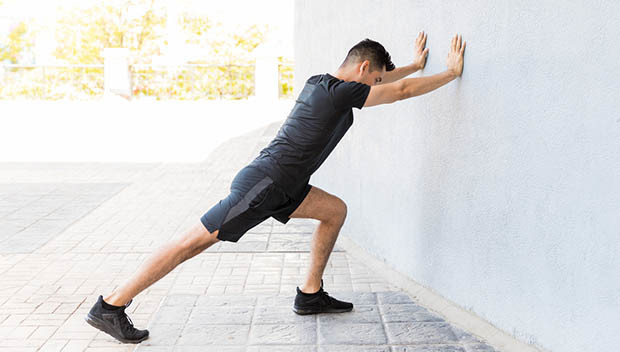
Jaclyn Fulop, a licensed physical therapist and runner, says tight calf muscles are a common problem for runners, but often, the root cause is lower on the body. “Tight calves can occur due to biomechanical dysfunction such as hallux rigidus [stiffness/rigidity in the big toe], the shape of your foot’s arch, repetitive stress, weakness or improper shoe wear,” she explains.
2.- CONSIDER TERRAIN
If your shoes are in good shape and you’re still having problems, consider terrain: Have you recently shifted to running more hills? Uphill running can put a lot more pressure on your calves than flat miles, and you may not be recruiting your other muscles to help alleviate the burden. Focus on using your glutes to get up the hill. You may also be spending more time on the balls of your feet as you tiptoe your way up an incline; instead, let your heel drop occasionally to allow your calf muscle to get a bit more release. Finally, consider power-hiking, which allows you to drop your heels more naturally, and in truly steep terrain, won’t even drop your overall pace by much.
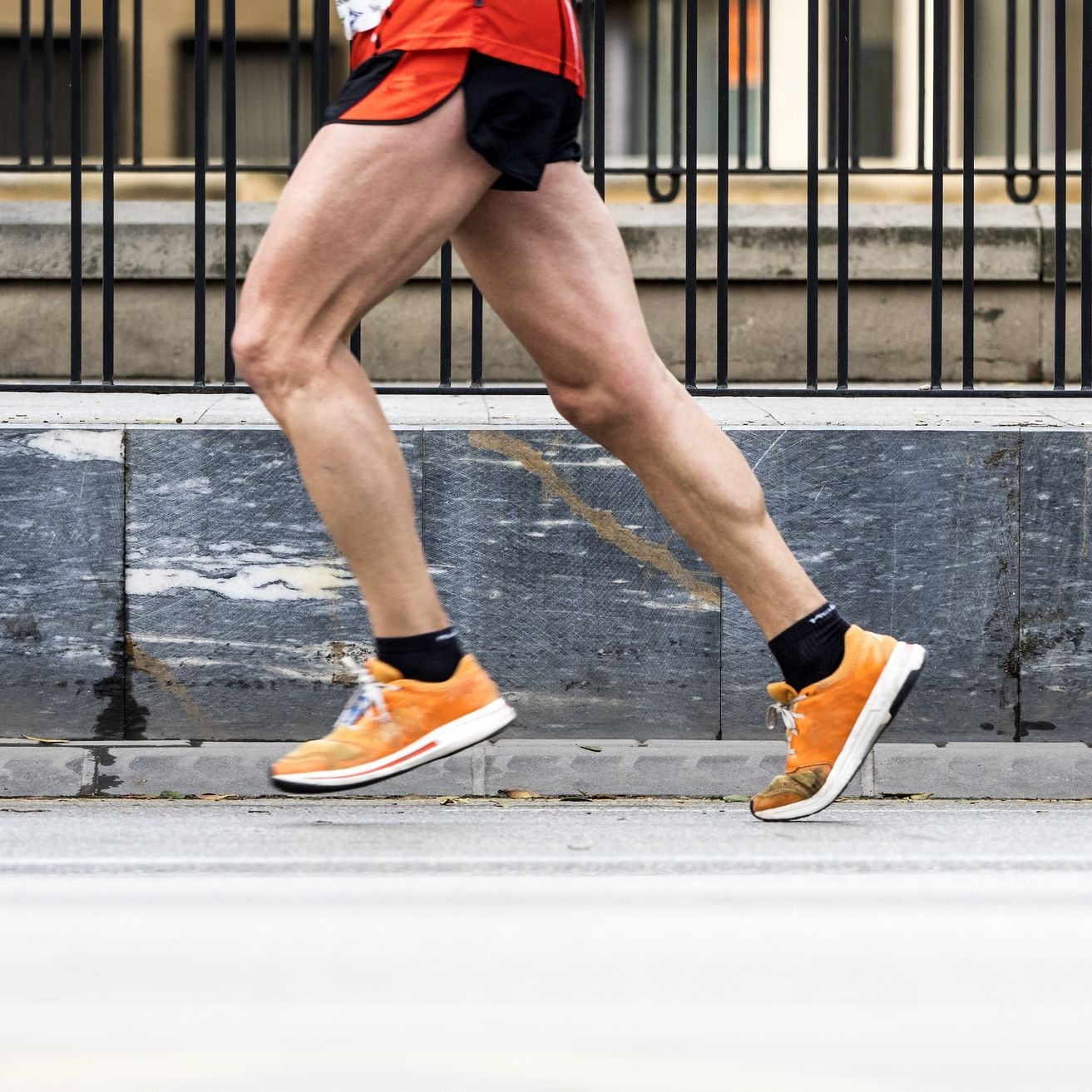
3.- HYDRATE
Research has shown dehydration can lead to tight muscles — and if your calves are already tense, being a quart low on your daily water intake can shift them from annoying to painful territory. Aim to drink at least 64 ounces of water every day, more if you’re sweating profusely during a workout — and add an electrolyte tab or pinch of salt to a few of those glasses to maintain sodium, magnesium and potassium levels.
Practice basic running protocols with extreme care: In the summer, any cramping and tightness can be exacerbated by dehydration, so make sure you’re starting runs fully hydrated, and continuing to sip as you go, especially as runs last longer than an hour.
4.- WARM UP AND COOL DOWN
In any weather conditions, a slow and steady warmup is key to avoiding instant tightness in your muscles as you start to up the pace. Take a few minutes before each run to walk, do activation stretches like lunges (focus on the back leg for a greater calf stretch) and gentle hops on your toes.
After each run, give your body a few minutes to cool down by walking and doing some stretches. Also, consider getting a piece of gear that does the stretching for you — for example, a Strassburg sock gently pulls your toes toward your shin to stretch your calves while you sleep. For those who use standing desks, a foam wedge might be your new best friend. Use it while standing to get a gentle calf stretch while putting in no effort.
5.- STRETCH AND STRENGTHEN
Stretching — dynamic and static — can help, but Fulop recommends adding static stretches post-run rather than beforehand. “Stretching is important because it increases your joint range of motion, which improves balance and keeps the muscles working more efficiently,” she explains. A good way to stretch your calves is during your workout: Walking or running uphill is a great calf activator and naturally forces your muscles to stretch while you’re heading up.
You can do the staircase stretch slowly, but there’s also a benefit to doing it faster, in a pumping motion. Since your calves are so dense, excess fluid and blood can pool up in those muscles and might benefit from getting flushed out. So, add a quick set of calf pumps to your next post-run cooldown. Aim to do this daily.
6.- TRY SQUATS
Erin Taylor, author of “Hit Reset: Revolutionary Yoga for Athletes,” is a fan of the squat, because so many calf stretches involve straight legs, and we don’t activate certain muscles when our knees are bent. Get into a deep squat, with your hands on the floor to stabilize yourself. Come up onto your toes as high as you can, and then drop your heels. Repeat this a few times.
7.- RECOVER AND FOAM ROLL
Foam rolling your calves is as important as rolling out your quads and hamstrings. Don’t just give your calf a single swipe — work from your ankle slowly up to your knee, making sure to hit the sides of your calf as well as the back.
(04/09/2021) ⚡AMPby Molly Hurford
Native Americans in Massachusetts want to reschedule Boston Marathon from Oct. 11 holiday
Native Americans in Massachusetts are calling on the organizers of the Boston Marathon to move the already rescheduled date for the storied race because it now conflicts with a day meant to commemorate the contributions of Indigenous people.
The Boston Athletic Association announced in January that the 125th edition of the marathon would be pushed back from its traditional April running to Oct. 11, assuming road races are allowed to take place under Massachusetts’ COVID-19 restrictions by then.
But the Indigenous Peoples Day Newton Committee complained the new day undercuts a day reserved for recognizing the contributions of Native Americans, past and present. The group said its first planned celebration of the Oct. 11 holiday in the Boston suburb of Newton has to be cancelled because of the marathon’s new date.
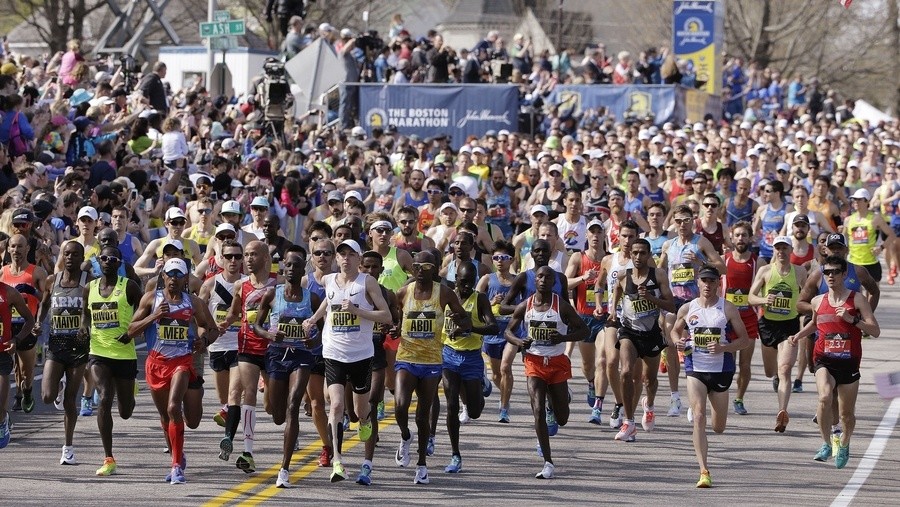
“Unfortunately, the Boston Athletic Association has decided that Indigenous Peoples Day is a ‘side’ holiday that can be usurped," the committee said in a recently launched online petition. "By doing this, they are perpetuating the myth that Indigenous peoples are part of the past and irrelevant.”
The BAA didn't directly address the complaints, but said the new date was selected in close co-ordination with the eight cities and towns along the marathon route. Those communities include Newton as well as Hopkinton, Ashland, Framingham, Natick, Wellesley, Newton, Brookline and Boston.
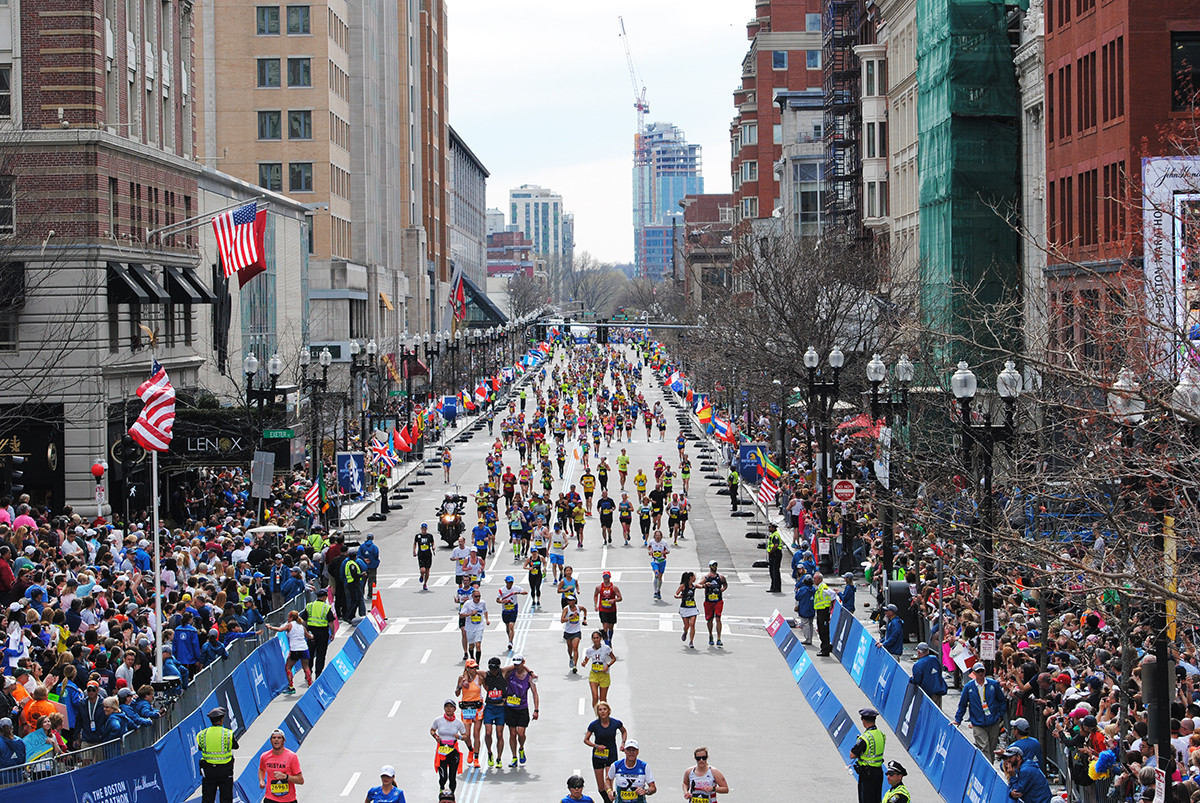
“We will continue working with city and town officials, as well as with organizations planning events during the October 9–11 weekend,” the organization said in a statement.
Newton Mayor Ruthanne Fuller said the city, which has the longest stretch of the marathon course, can handle both events. She said the city is offering to host an Indigenous Peoples Day celebration on a field at Newton South High School.
“While the pandemic has made so many things more complicated, we are excited to celebrate both Indigenous Peoples Day and the Boston Marathon in Newton on October 11, 2021,” Fuller said in a statement.
But City Councilor Emily Norton said she's disappointed at the chosen date. “It was insensitive at best and disrespectful at worst,” she said.
(04/09/2021) ⚡AMPby Canadian Press
Boston Marathon
Among the nation’s oldest athletic clubs, the B.A.A. was established in 1887, and, in 1896, more than half of the U.S. Olympic Team at the first modern games was composed of B.A.A. club members. The Olympic Games provided the inspiration for the first Boston Marathon, which culminated the B.A.A. Games on April 19, 1897. John J. McDermott emerged from a...
more...Laura Muir : I want to inspire the next generation of runners
I am so lucky to be able to run for a living and I’m even more thrilled that, by doing that and talking about my running, I can potentially inspire others to give sport a try.
I think that’s the role that we have to play as elite athletes, to tell our story and to continue to do what we love — so that others can see the opportunities and benefits that sport can bring at every level.
If reading this article or watching me race gets just one child or one family out to play sport today or try running, then that is a success!
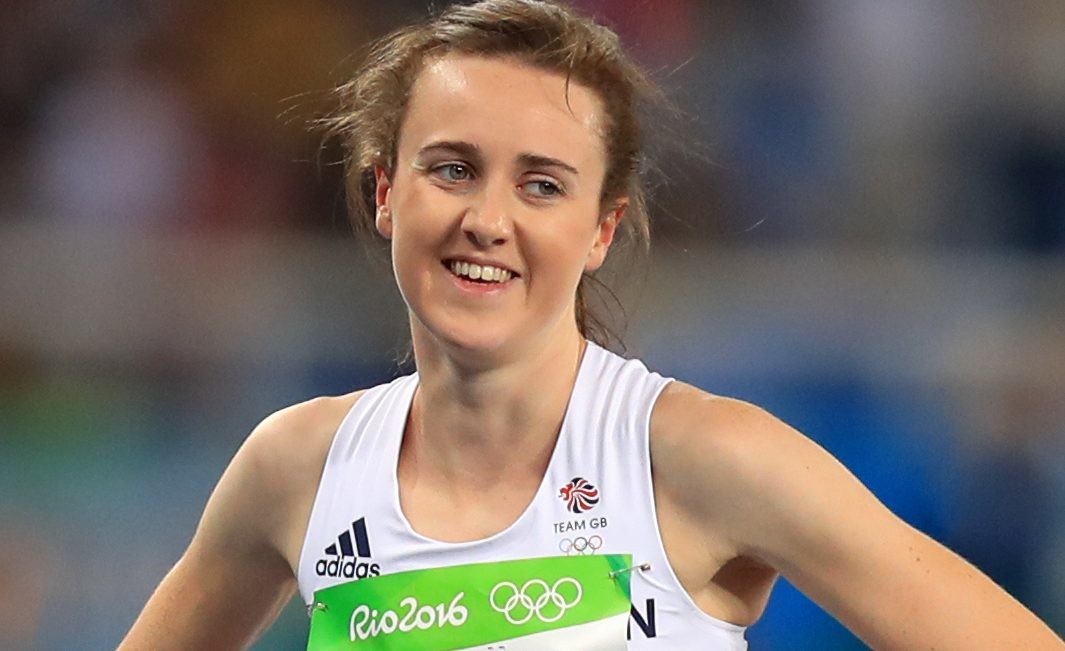
I started athletics at about 11 years old through cross country at my primary school.
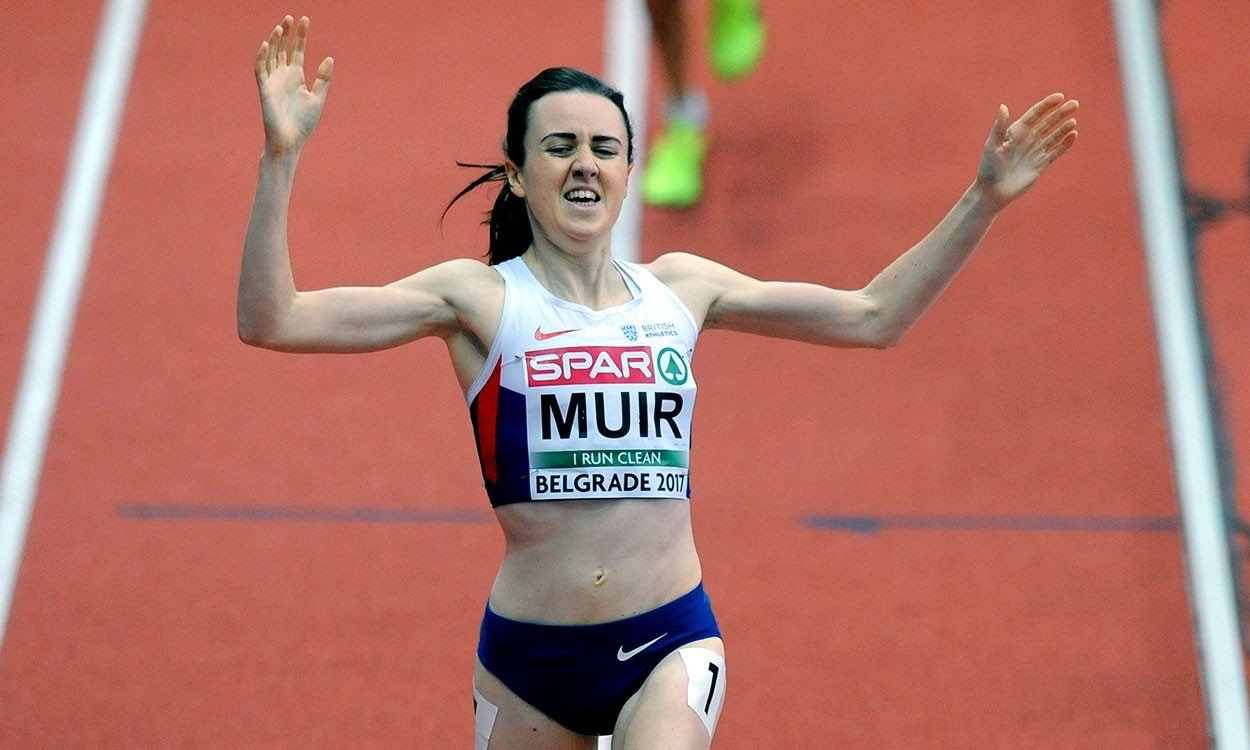
I made it on to the cross country team and I competed in regional events. I was not winning the races but just absolutely loved running.
From there I joined a local athletics club that one of my friends went to and gradually built up my training.
I remember how encouraging my primary school teacher and headteacher were. I think they really wanted us to enjoy sport and did not put any pressure on us, which was lovely.
Then at the athletics club I began in the sprints group like a lot of young athletes do, before a middle-distance coach started working with the club soon after I joined.
I think I had always naturally gravitated towards the longer distances so started working with that coach instead and that was me set.
Being down at the track, I always remember what seemed like a big group of people all helping one another.
There are so many great reasons for sport, particularly sport for youngsters, to be prioritized as we make our way out of this latest lockdown.
I am already incredibly grateful for the team I have around me and the time and effort they have given me to be the best athlete I can be.
If I could win an Olympic medal that would be such a special moment for me and my team.
From family and friends, to my coach, physio, training partners and the volunteers that make the sport tick — I’m thankful every day for their support. Of course, in those big moments it’s great to take a minute and appreciate that support and to say thank you when the spotlight is on you.
But, realistically, it’s the hard days when that support is most appreciated. The weeks of injury, the tough winter sessions, the local athletics meets — that’s when I am really grateful for those who help me so much.
(04/08/2021) ⚡AMPby Laura Muir
2000 entries in for Comrades Centenary virtual event
Nearly 2000 participants have signed up for the Comrades Marathon Association’s (CMA) virtual event, the Comrades Centenary Hope Challenge, since being launched two weeks ago.
With two consecutive editions of the traditional Comrades Marathon having been cancelled, owing to Covid-19, runners the world over will have the opportunity of joining in the celebratory spirit of the Comrades Marathon Centenary via its 2nd virtual event in the race’s 100-year long history.
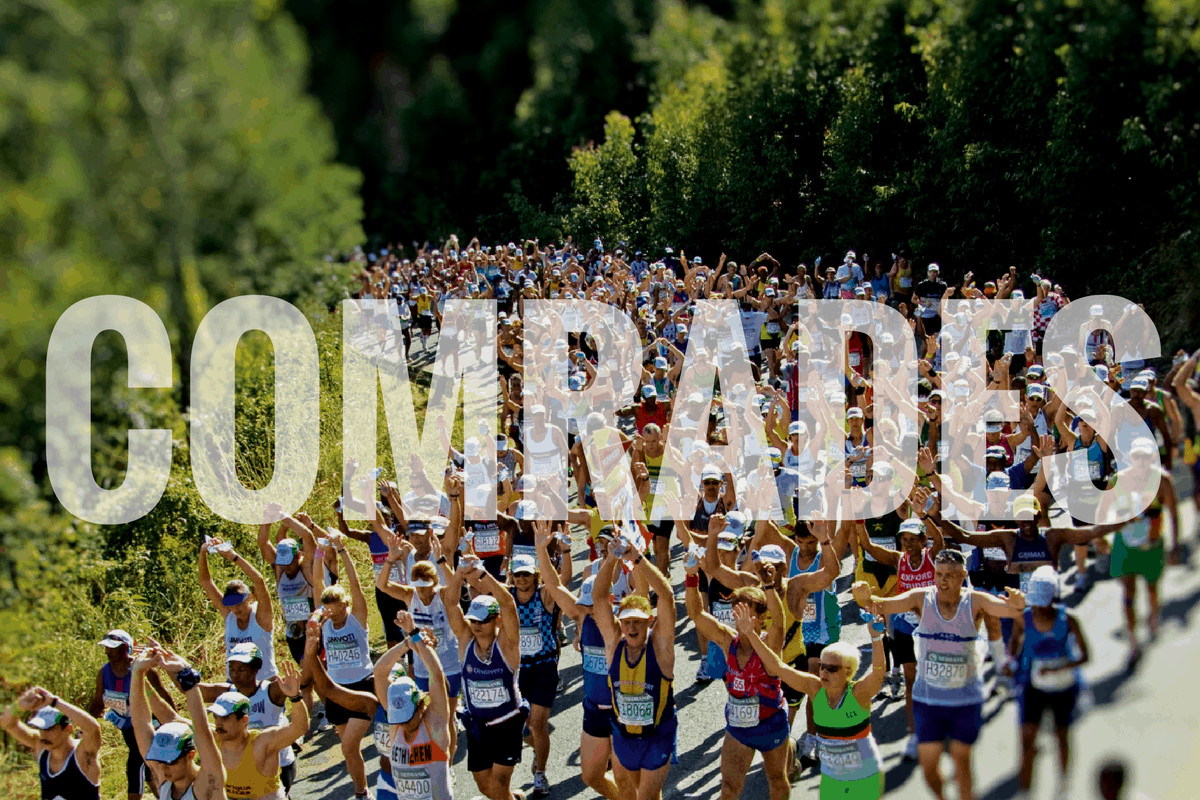
Come Sunday, 13 June 2021, runners and their families will be able to participate from any time between 00:01am and 23:59pm on the actual challenge date, within their local time zone globally.
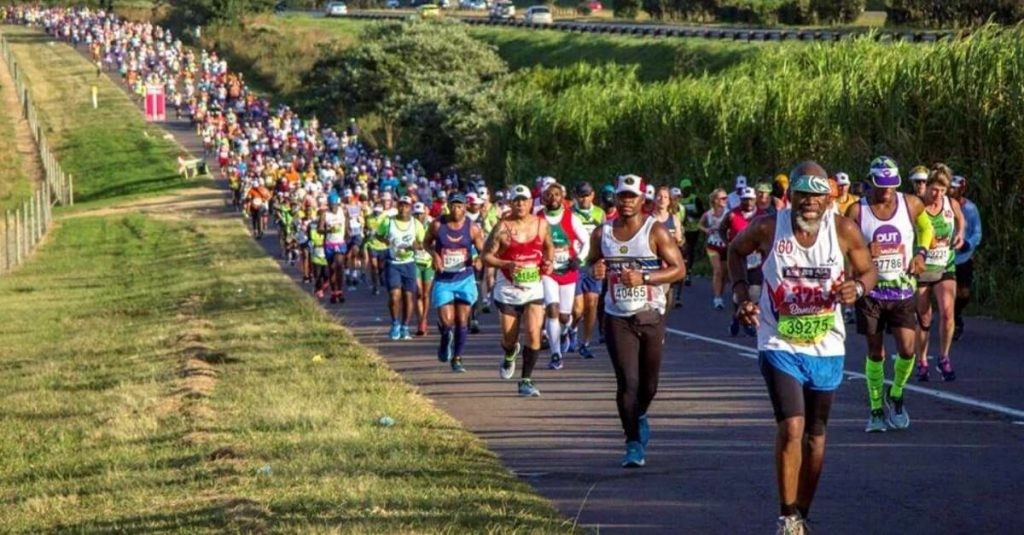
The Comrades Centenary Hope Challenge will comprise 5 distances, being a 5km, 10km, 21.1km, 45km and 90km which will all be run virtually, meaning that athletes get to run their own race, along their select route anywhere in the world.
For more information on the Comrades Centenary Hope Challenge and to enter, please click through to www.comrades.com
The campaign slogan for the Comrades Centenary Hope Challenge is ‘Ithemba – Hope Is’, which aims to contextualise each runner’s hopes, what the feeling means to them and to further inspire other athletes to dig deep and discover their own hopes and dreams for a better future and the new normal in a world ravaged by Covid-19.
(04/08/2021) ⚡AMPComrades Marathon
Arguably the greatest ultra marathon in the world where athletes come from all over the world to combine muscle and mental strength to conquer the approx 90kilometers between the cities of Pietermaritzburg and Durban, the event owes its beginnings to the vision of one man, World War I veteran Vic Clapham. A soldier, a dreamer, who had campaigned in East...
more...Even with vaccination Boston Marathon athletes may need two negative coronavirus tests before race
Boston Marathon athletes might need to show they tested negative for coronavirus twice before the October in-person race, even if they’re vaccinated, the Boston Athletic Association said Wednesday.
Also, the B.A.A. this year will eliminate the staging area in Hopkinton where athletes traditionally mingle, stretch, hydrate, and fuel up before the race.
“The B.A.A. is committed to taking all necessary steps to ensure the health and safety of participants, volunteers, and the public,” Tom Grilk, president and CEO of the B.A.A., said in a statement. “We will continue to follow the science and adapt the event plan to reflect guidance from our local, city, and state partners.”
Participants for the first time will be able to buy registration insurance, the B.A.A. announced. There will also be a $25 COVID-19 health and safety fee for this year’s race on Oct. 11.
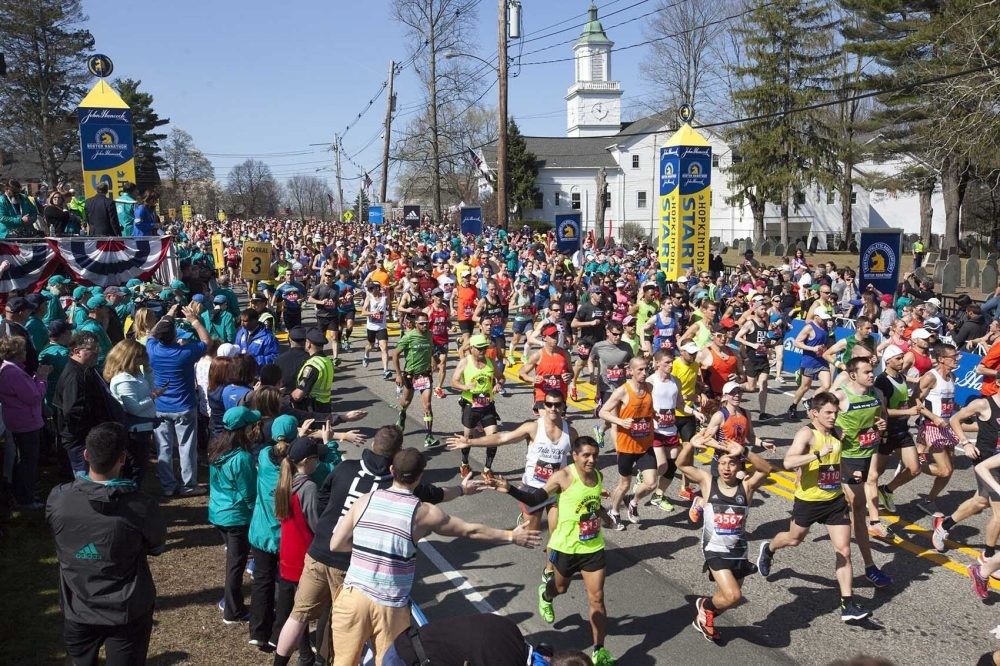
The B.A.A. last month announced a smaller field size for this year’s race. There will be 20,000 entrants to allow for social distancing throughout the course. The field size in recent years has been 30,000 participants.
“Participants in the in-person race may be expected to produce up to two negative COVID-19 tests prior to Monday, October 11, regardless of vaccination status, in order to mitigate spread to participants and community members,” the association said. “The B.A.A. will continue to follow the data and science and will share more information in the coming months on testing timelines and requirements.”
In addition to the in-person road race, the B.A.A. is also holding a virtual Boston Marathon over the race weekend from Oct. 8 to 10.
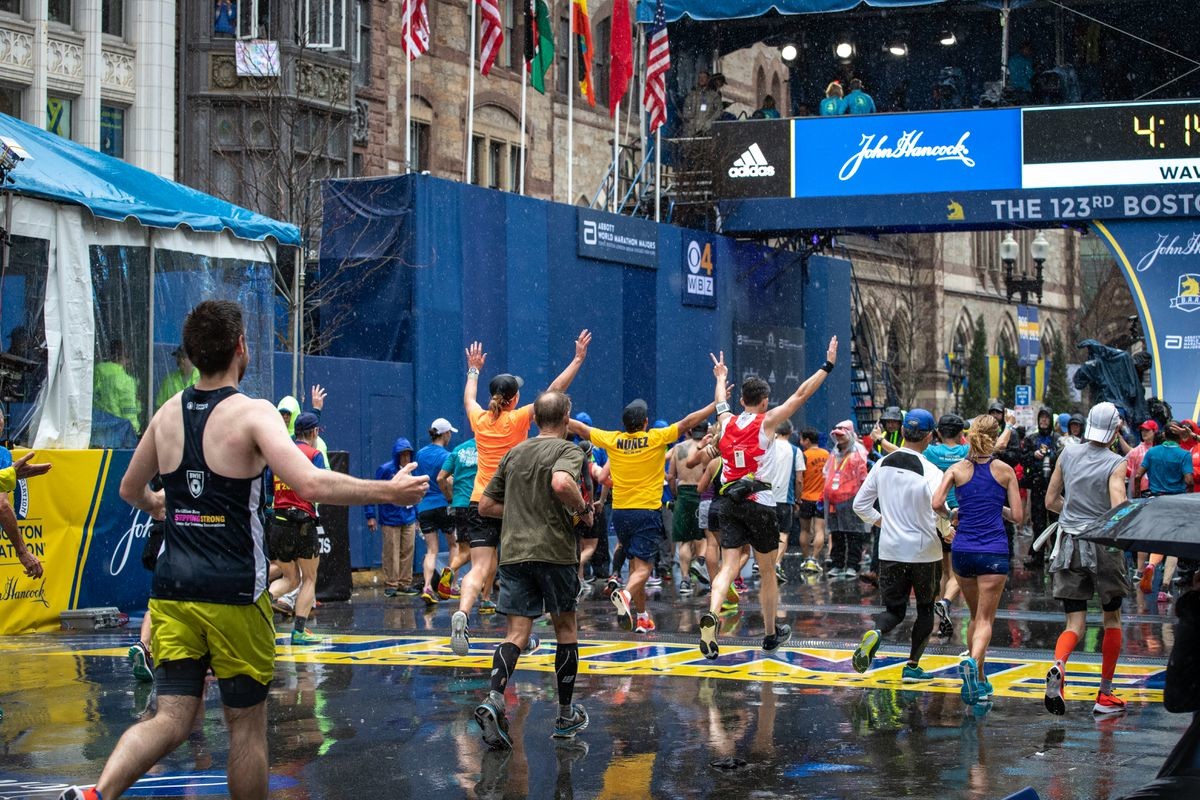
With no staging area for the in-person race this year, athletes will instead be assigned specific start times and participate in a rolling start at Hopkinton. The rolling start procedure will be directly aligned with the bus loading times in Boston and transportation to the start.
The entry fee for the 125th Boston Marathon will remain $205 for U.S. residents and $255 for international residents.
Participants who elect to purchase registration insurance, offered by RegShield, will be able to have entry fees and the COVID-19 health and safety fee refunded for multiple reasons including loss of job, pregnancy, illness, and injury.
Refunds may only be eligible for those who purchase the insurance policy at the point of registration. Entries in the Boston Marathon cannot be transferred, deferred to a future year, and only those who elect to purchase registration insurance may be eligible for refunds.
Registration will be held through the B.A.A.’s online platform, Athlete’s Village, from April 20 at 10 a.m. to April 23 at 5 p.m.
(04/08/2021) ⚡AMPby Rick Sobey
Boston Marathon
Among the nation’s oldest athletic clubs, the B.A.A. was established in 1887, and, in 1896, more than half of the U.S. Olympic Team at the first modern games was composed of B.A.A. club members. The Olympic Games provided the inspiration for the first Boston Marathon, which culminated the B.A.A. Games on April 19, 1897. John J. McDermott emerged from a...
more...Scientists reveal a new way to detect banned performance-enhancing substances just ahead of the Tokyo Olympics
A team of scientists at the Florida Institute of Technology has developed a new method for detecting doping compounds in urine samples ahead of the Tokyo Olympics.
This new method will not only help regulatory agencies detect existing dopants, but will also help them find newly created illicit steroids not yet known to the World Anti-Doping Agency (WADA) to reduce doping in the future. The research was presented Monday at the American Chemical Society.

Each year, WADA releases a list containing every substance athletes are prohibited from using, which includes steroids. The problem is that it can be difficult to distinguish between endogenous steroids (those created naturally in the athlete’s body) and exogenous steroids (steroids the athlete takes in from an outside source) when analyzing a urine sample. Additionally, new performance-enhancing drugs are continuously being developed that many labs don’t know to test for.
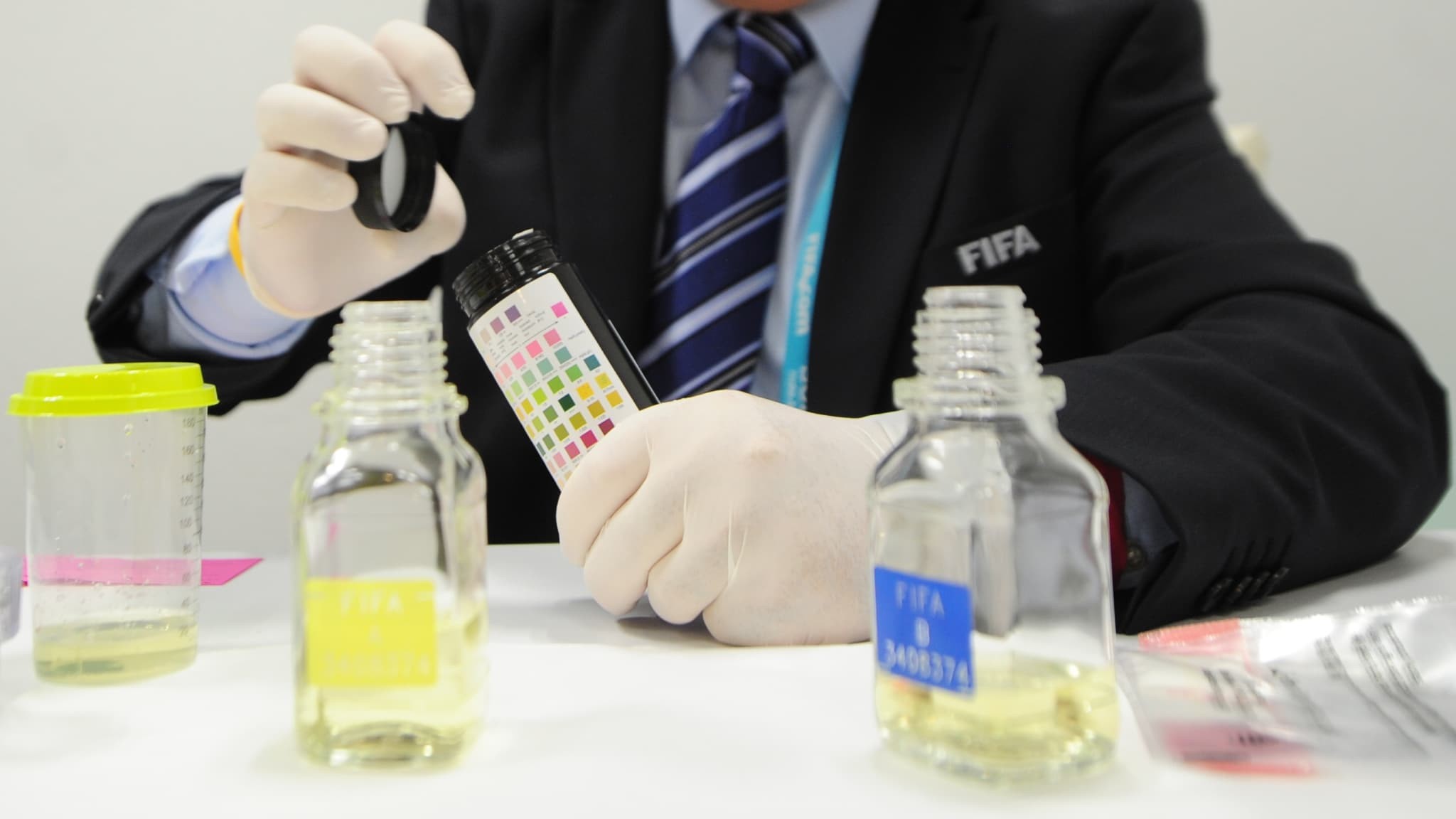
“As quickly as we develop methods to look for performance-enhancing drugs, clandestine labs develop new substances that give athletes a competitive advantage,” Dr. Christopher Chouinard, the project’s principal investigator said in an interview.
CChouinard and his team have now developed a test using mass spectrometry and gas or liquid chromatography that can differentiate between endogenous and exogenous steroids, while also anticipating the chemical structure of potential future performance-enhancing compounds. Basically, this test breaks the molecules in the sample up and separates them into fragments, so testing facilities can identify the original, intact compound. Then, the scientists use another special separation technique that allows them to tell the difference between naturally occurring steroids and synthetic, performance-enhancing substances.
The team is also collaborating with other researchers at the university to develop machine-learning techniques to predict the structure and other characteristics of new or future steroids that WADA does not yet know about.
“If we can develop methods to identify any theoretical steroids in the future, we could dramatically reduce doping, because we would be able to detect these new species immediately, without the lag time that’s been associated with anti-doping testing over the last 40 years,” Chouinard says.
This research is coming out only a few months before the summer Olympics, and if it can be employed in time, it could make these Games one of the cleanest on record.
(04/08/2021) ⚡AMPby Brittany Hambleton
Tokyo 2020 Olympic Games
Fifty-six years after having organized the Olympic Games, the Japanese capital will be hosting a Summer edition for the second time, originally scheduled from July 24 to August 9, 2020, the games were postponed due to coronavirus outbreak, the postponed Tokyo Olympics will be held from July 23 to August 8 in 2021, according to the International Olympic Committee decision. ...
more...Medtronic Twin Cities Marathon registration opens April 8 to be run in person
The Medtronic Twin Cities Marathon Weekend of Events went virtual only in 2020, but it will return in-person this year on Oct. 2 and Oct. 3.
The Medtronic TC Family Events will take place on Saturday, October 2, and the weekend will conclude with the Medtronic Twin Cities Marathon and TC 10-Mile races. Those races run from downtown Minneapolis to the State Capitol in St. Paul, on Sunday, October 3. To register, you can visit Twin Cities in Motion’s webpage starting at 10 a.m. on Thursday, April 8.
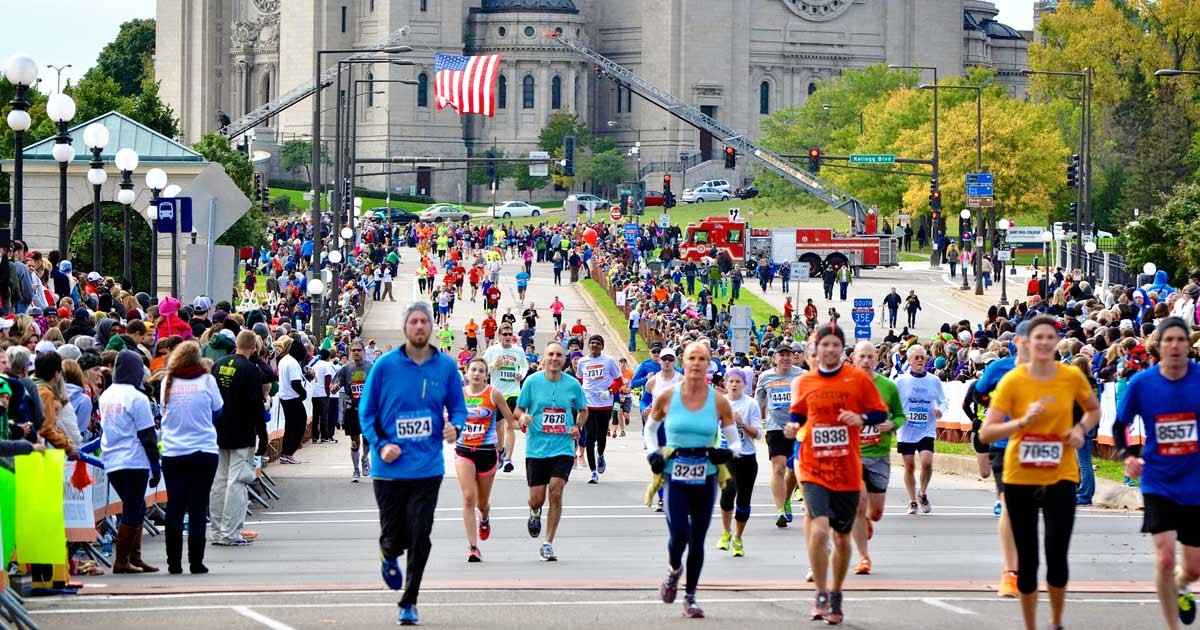
Twin Cities in Motion has partnered with experts and officials to build an event that’s COVID-safe. Virtual races are included as well for those who prefer the option. All 2021 Medtronic Twin Cities Marathon Weekend events will have limited field sizes. The marathon is currently limited to 4,000 in-person registrants.
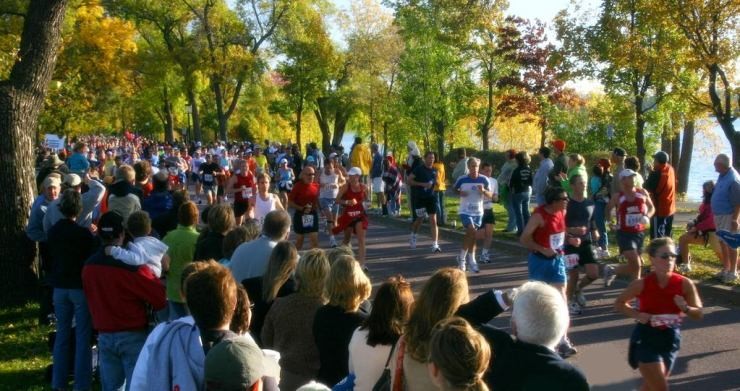
If the event is cancelled due to COVID-19, a partial cash refund policy will be in place. For more information on safety precautions, see here.
Get the Twin Cities in Motion app for pro tips, free Runcoach training, and helpful content for free virtual check-in races to gauge your progress and prepare you for the race.
Registration is also open for the Earth Day 8K, presented by Everlight Solar on Sunday, April 25 at Lake Como, the Spring into Summer 5K, presented by LX Medical on Saturday, May 22 at Lake Phalen and the Summit Triumphant 5K and 10K on Saturday, June 26, at Bde Maka Ska.
KARE 11 is proud to be the official media sponsor for the Medtronic Twin Cities Marathon Weekend and the presenting sponsor for the KARE 11 Family Mile.
(04/08/2021) ⚡AMPby Sonya Nayar
Medtronic Twin Cities Marathon
The Medtronic Twin Cities Marathon Weekend offer races, walks and activities for every age and ability level! Learn more about the weekend's events and activities by using the navigation bar at the left or top of your screen. The Twin Cities Marathonis a running event in the Minneapolis-Saint Paul area. The TCM was first run in 1982, and typically takes...
more...Kibiwott Kandie´s training camp routine is three times a day
The first run is at 6am, and I might do 20km at a good pace. At 10am, I’ll do another 8km, plus some exercises. In the afternoon, around 4pm, I’ll usually do an easy 10km.
That’s my routine during training camp, in Ngong or Iten, and while it may seem like a lot, I've been covering long distances ever since I was a kid.
I grew up in Baringo County, western Kenya. My mother was a farmer, my father worked for the Ministry of Water, and when I was young I spent my days on my feet. Maybe it was chasing goats or cows around the farm or in the local forest, or maybe it was going to and from school, which was 7km away. I’d make that journey four times a day, coming back in the middle to take lunch at home. I’d run a bit, walk a bit, run a bit, walk a bit.
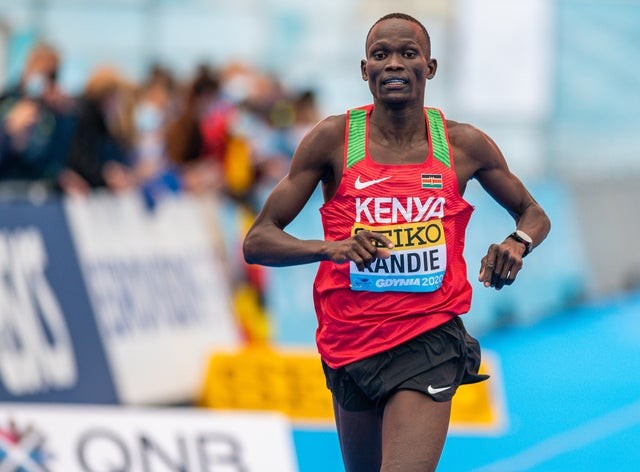
I started doing cross country races while at school, and I wasn't successful in the beginning. But I told myself, one day, I have to win.
As a kid, I used to set myself the goal to run from here to there, and I'd get great satisfaction when I’d be able to do it. That was where the habit started, how I first learned to love athletics.
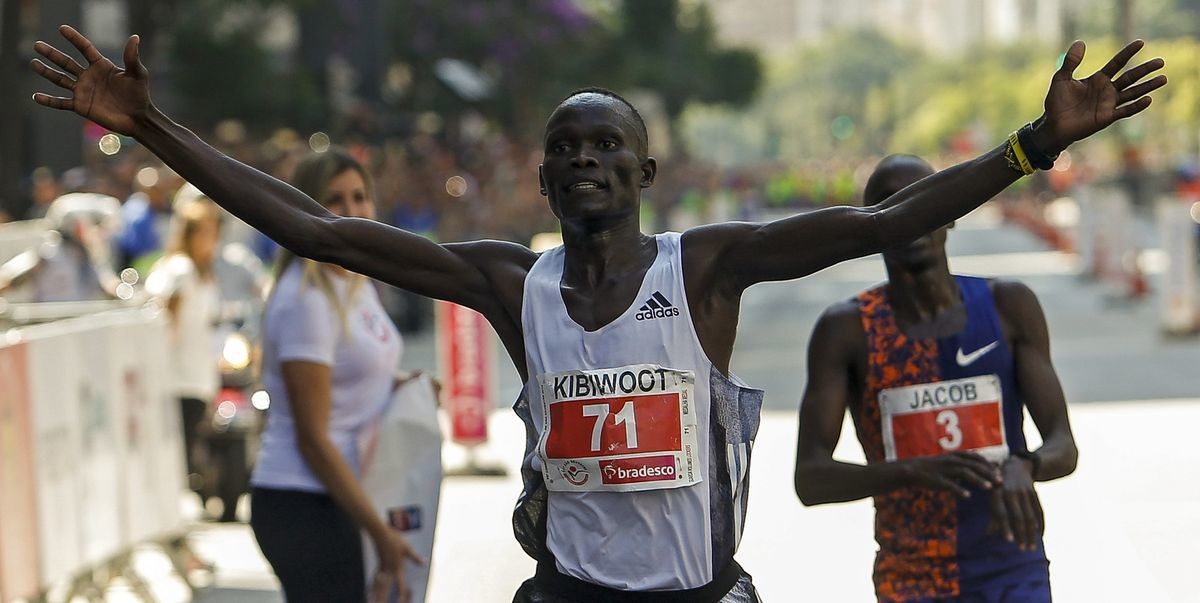
Growing up, a name I heard all the time was Paul Tergat. He was from an area not far from me so my goal was to grow up and be like him.
I finished school in 2015 and, at that point, my parents told me to go for higher education, but my mind was made up. I wanted to run full-time, and I convinced them to allow me to give it a go. For the last four years I’ve also been working with the military, a job that supports life as a high-level athlete.
My first coach was John Korir, who’s based in Ngong, but since last year I’ve spent a lot of time in Iten, training with coach Joseph Cheromei. On a normal week, I'll do 170-180km.
When things started to shut down last year due to the pandemic, I accepted what was happening, that this was nature and we couldn’t blame anyone. I kept training, but not as hard. I did my morning run as normal, and once in a while I did speed work, but I eased back and didn’t do the usual three times a day.
I told myself, be patient, sometime soon everything will be well and sports will be back.
That happened last autumn, and my big goal then was the World Half Marathon Championships in Gdynia, Poland. My training had been really good so my aim was to win gold, but in the race I quickly realised many others were very strong, too, so I changed it to getting a medal.
My big goal is to make the Kenyan team over 10,000m for the Tokyo Olympics, and everything will be focused on that until the summer.
Looking beyond that, my mind is already starting to think about the marathon. It will be a big challenge, trying to move up to double the distance, but I’d like to prepare for one in the autumn and see how good I can be.
Long-term, that's my big goal in this sport. I want to do what Paul Tergat did, and make history in the marathon.
(04/07/2021) ⚡AMPby Kibiwott Kandie
Jakob Ingebrigtsen says that the 1500m is the most painful race
Is there anything Jakob Ingebrigtsen gets nervous about? In his exclusive interview in the April issue of AW magazine, the Norwegian star talks with real assurance about how he plans to put himself at the summit of his sport. His aim? “To be too fast for everybody else, which means that I can basically do what I want and I will still win.”
The 20-year-old exudes confidence in his ability and was in complete control when winning both the 1500m and 3000m at last month’s European Indoor Championships. There is a very clear air of calm around him, too, but he does admit that nerves play a significant part in his racing life.
Nerves when it comes to the pressure of meeting his own expectations but also nerves surrounding – particularly when it comes to the 1500m – the prospect of pain.
“Yeah, I’d say so,” he answers when asked if he’s good at channelling that nervous energy.
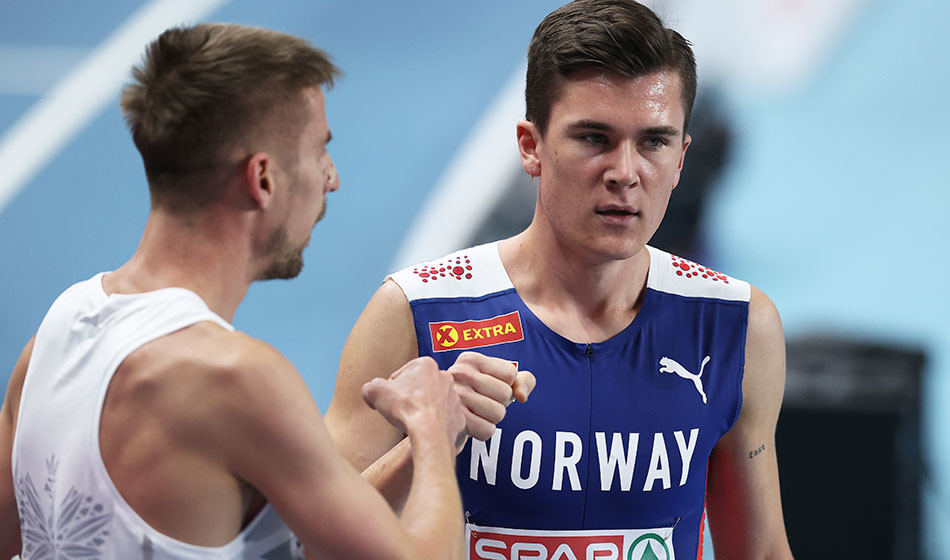
“If there’s a lot at stake then you’re obviously going to get more nervous than if it’s just a random race but I usually get really nervous – not only because of my expectations but it’s also about the pain [that comes] with racing. I don’t enjoy being in pain.”
He adds: “It’s difficult to describe but the 1500m is probably the most painful race because you are going out at such a high speed and after 500 metres you are really hitting a wall. But then, when you continue you don’t slow down, you just run faster and faster. Or at least that’s my experience.
“If you are really well prepared and you do what you need to do going into that race it’s going to end up pretty good and you’re not going feel that much pain after all. But I know, going into my next race, I get really nervous [again] because of the pain.
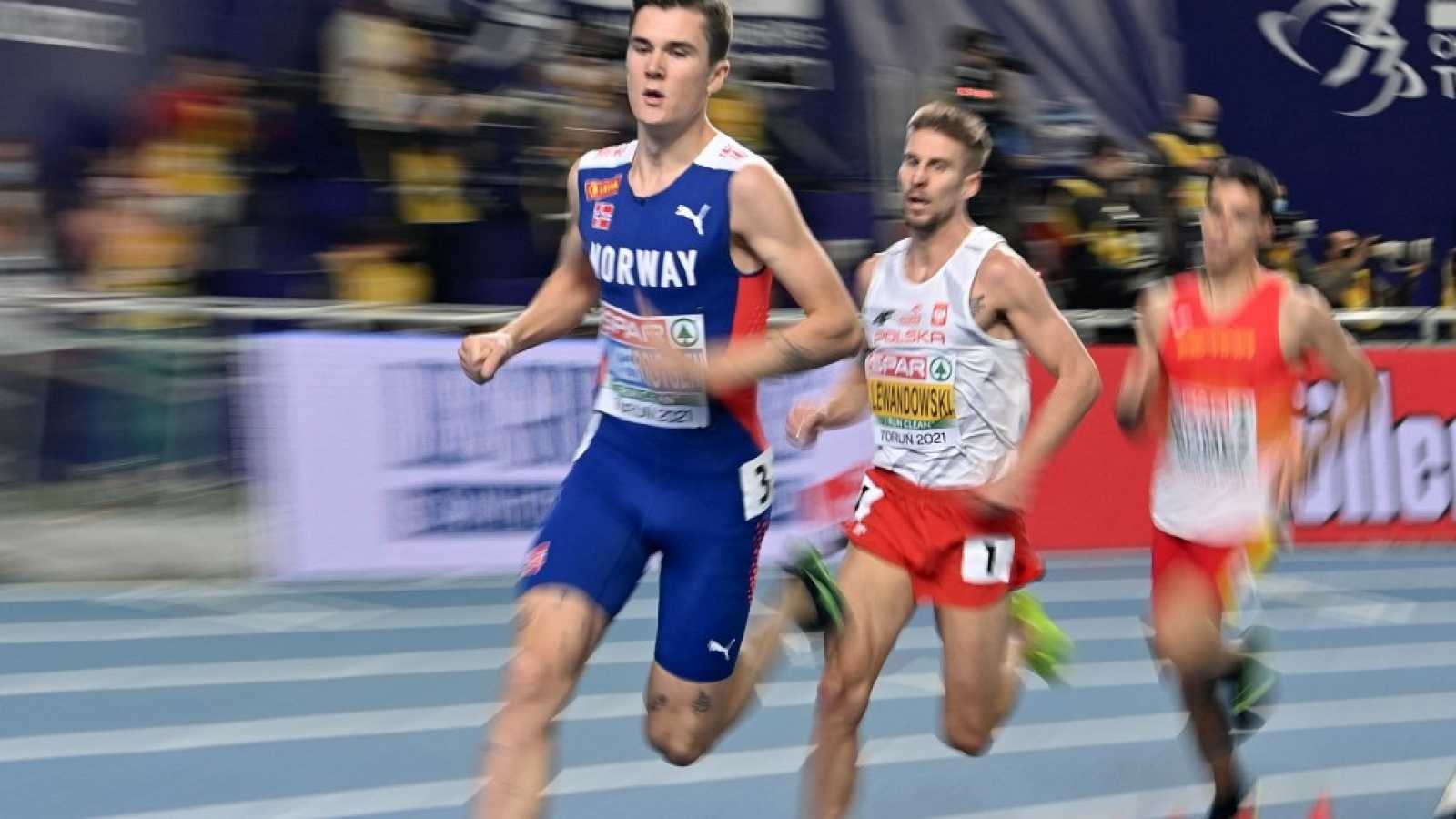
“But I think that’s my way of preparing myself physically and mentally for each race – to be nervous of the pain that’s coming but also to be awake and focused on the task so I can run as fast as possible.”
Expectation does now follow the 1500m European record-holder both indoors and out whenever he toes a start line. But the man who is coached by his father Gjert and trains with brothers Henrik and Filip is not usually one to dwell on outside opinion.
“Expectations are always a good thing but I usually don’t read comments from other people because I know I’m going to be really disappointed if I’m not winning,” he says.
“Even if I’m a worse runner than my competitors, I’ll still aim for finishing first.
“My mentality going into races is that I’m always going to win so I would say the expectations that I put on myself are always going to be a little bit harder to fulfil than everybody else’s.”
To achieve those goals, the Ingebrigtsen family is well known for laying the groundwork through a regime of threshold training. That is, finding the pace and the sweet spot where lactate levels are held stable rather than flooding the system.
Only just out of his teens, one of the most fascinating and exciting things about Jakob is that he is still growing and becoming stronger.
(04/07/2021) ⚡AMPby Euan Crumley, AW magazine
China´s Li Yiben, 80, breaks 5,000-meter Asian record for age group
How fast can you run at the age of 80 years?
China's Li Yiben's answer was a performance of 28:06 to finish 5,000 meters, breaking the Asian record for 5,000-meter race in the 80-year-old group.
Li did it in a track and field event in Huainan of east China's Anhui Province on April 3. He was competing in a 5,000m race in a mixed group of six. The other five were three men in their 50s and 60s, plus two women in their mid-30s.
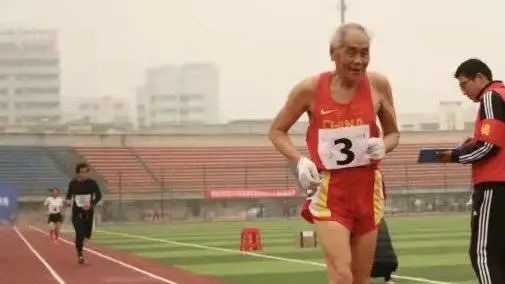
In the end, Li beat three competitors under mild rain and finished the race in the third place, surpassing the previous Asian record (31:05) by 2:59.
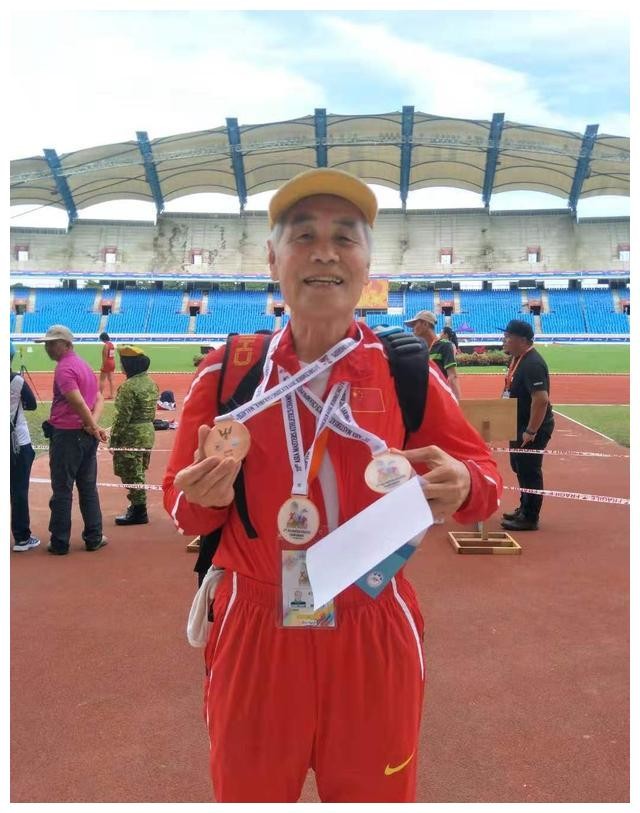
"This is tough. I have never worked so hard in my left," said Li after the race.
Li used to serve in the military when he was young. Back then he was a mountaineer. After being transferred to civil work in 1968, Li had to go over 20 kilometers from home to work. That's when he fell in love with running. Li would choose run to work every two or three days. Such hard workouts made him an incredible amateur track and field athlete.
After he retired in 1995, Li was able to invest more time in running and he did with every hour he had. In 1998, Li attended a 100-kilometer super marathon event and won the gold medal in senior group by finishing at 11:45:33, which was two hours faster than the national record.
Li participated in the national masters athletics games in 1999 and won four golds, breaking the Asian record in every competition he attended. One year later, he was invited to attend the Asia Masters Athletics Championships in India. Li was 0.8 seconds away from winning gold in the men's 400-meter race but claimed the title in the 800m competition.
In June 2001, Li went to Sydney to participate in the World Masters Athletics Championships. Though many of his opponents were retired professional athletes, Li still won the bronze medal in the 800m and finished sixth in the 5,000m race.
Li continued to appear at multiple editions of the above events in the following years and pocketed more medals and new records. Running has become a part of his life as he runs at least 5,000 meters everyday for the last 60 years. Running makes him feel younger, said Li.
(04/07/2021) ⚡AMPNN Mission Marathon has confirmed Netherlands as new location
The NN Running Team announced on Tuesday that the NN Mission Marathon has been relocated to Enschede, the Netherlands. The race, which organizers postponed on March 31, will take place on April 18, one week later than it was originally set to be run.
The event will feature about 70 athletes, including marathon world record holder Eliud Kipchoge, who will be looking to use the race as a chance to test his fitness ahead of this summer’s Tokyo Olympics.
The original plan for the NN Mission Marathon was announced in February, and organizers hoped to hold it in Hamburg. That plan fell apart in late March, when COVID-19 restrictions changed in Germany, ultimately making it impossible to hold any race in Hamburg in the coming weeks.
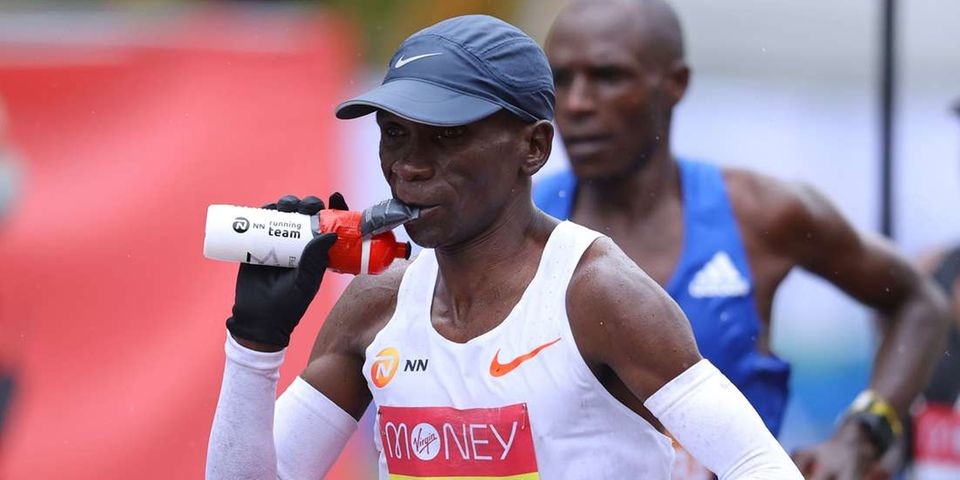
The NN Running Team announced the postponement and relocation of the Mission Marathon just over a week before the race date of April 11. The event was only pushed one week, which didn’t give event organizers much time to find a new host city for the race.
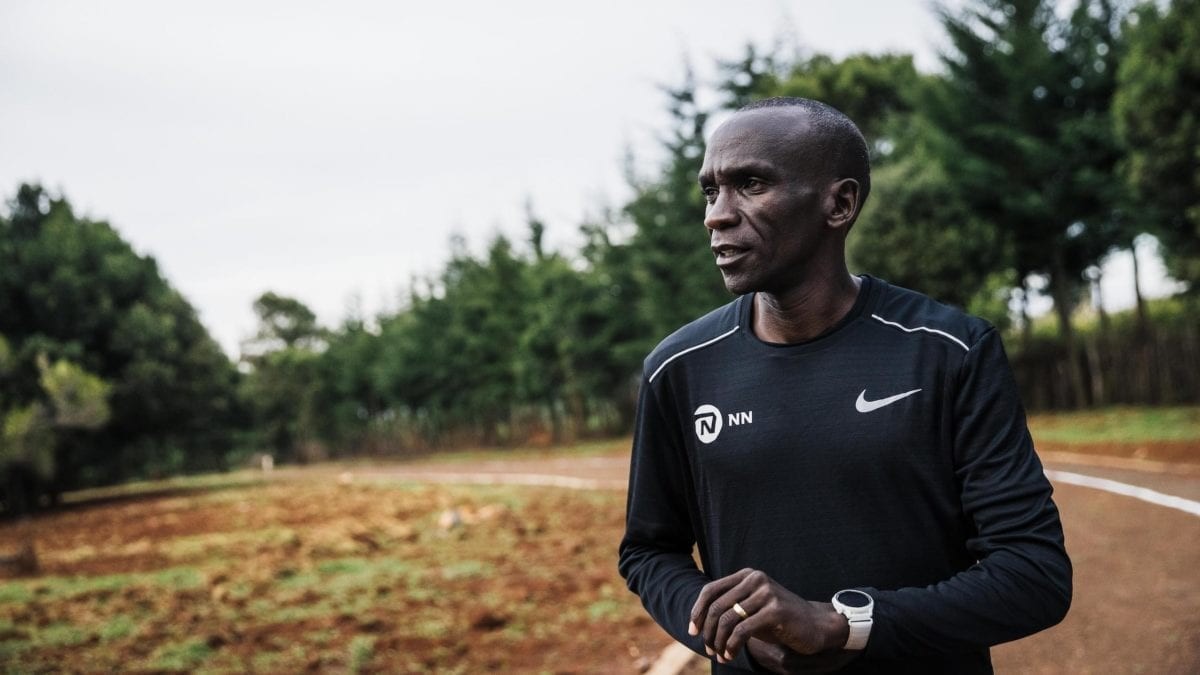
It turns out that they needed less than a week to do so, though, as the NN Running Team announced the official change of venue on Tuesday. The race will now take place at Twente Airport, which is about 12K outside of Enschede.
The NN Running Team’s postponement announcement likely created a lot of stress for many of the runners set to race the Mission Marathon. The event, after all, was organized specifically for athletes looking to hit Olympic standard in the marathon ahead of the Tokyo Games. With so few racing opportunities on the calendar, this could be the last chance for a lot of athletes to qualify for Tokyo, and when the race was rescheduled, these runners probably began to scramble as they searched for a backup event in case the postponement turned into an outright cancellation.
Kipchoge is already a lock for the Kenyan Olympic team, and he will be one of the favorites to win gold in the marathon this summer. Even so, he, too, probably breathed a sigh of relief when it was announced that the race can officially go ahead in the Netherlands, as there is still a lot riding on this race for him.
He doesn’t need to perform well to guarantee his ticket to Tokyo, but a good run at the Mission Marathon can silence any doubters who think he is past his prime.
Luckily for Kipchoge and the many Olympic hopefuls slated to run the Mission Marathon, the race is good to go in its new home in the Netherlands. It will be can’t-miss action on April 18, and seeing as there is so much on the line for these athletes, dramatic runs can certainly be expected.
(04/07/2021) ⚡AMPby Ben Snider-McGrath
NN Mission Marathon
Eliud Kipchoge will bid to resume winning ways in his last race before the Tokyo games with around 70 runners looking to make the Olympic qualification standard on April 18th in Twente.After suffering a rare marathon defeat in London last October, reigning Olympic champion Eliud Kipchoge makes his return at the NN Mission Marathon in 2021. It is set to...
more...British Olympian Tim Hutchings calls for records reset in hi-tech shoes era
World Athletics should introduce a new set of records for times set by athletes wearing high-tech footwear, said British Olympian Tim Hutchings, as debate continues over whether the shoes give runners an unfair advantage.
Footwear developed by Nike played a role in two of the biggest distance-running achievements of 2019, with Eliud Kipchoge's sub-two-hour marathon in Vienna and Brigid Kosgei's record-breaking run at the Chicago Marathon bringing the Vaporfly shoes into the spotlight.
While World Athletics banned the shoes from professional sport last year, Nike has launched a new version of its Alphafly footwear that complies with new rules introduced by the governing body.
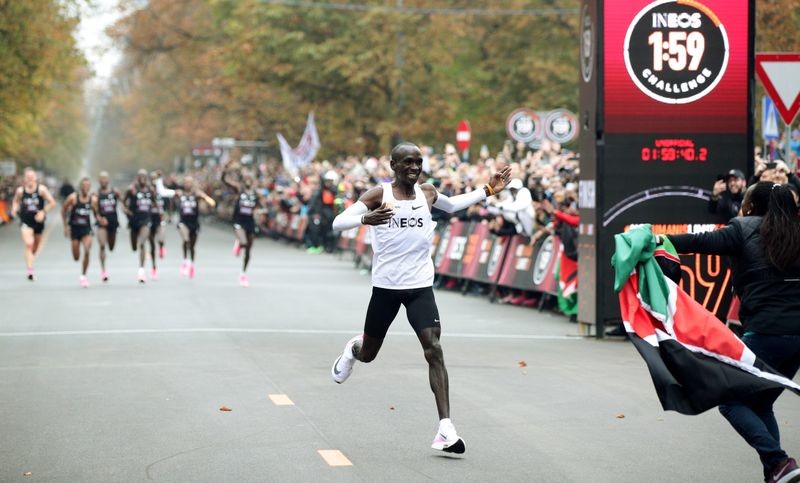
"People from many quarters are saying stop fussing about the shoes. Just move on and enjoy the racing. To which I'd respond, I've always enjoyed the racing and will continue to," Hutchings told The Times.
"But I want to enjoy and respect times as well, not just cast aside that element. A reset would enable this. The shoes are here to stay, sadly the genie is out of the bottle."
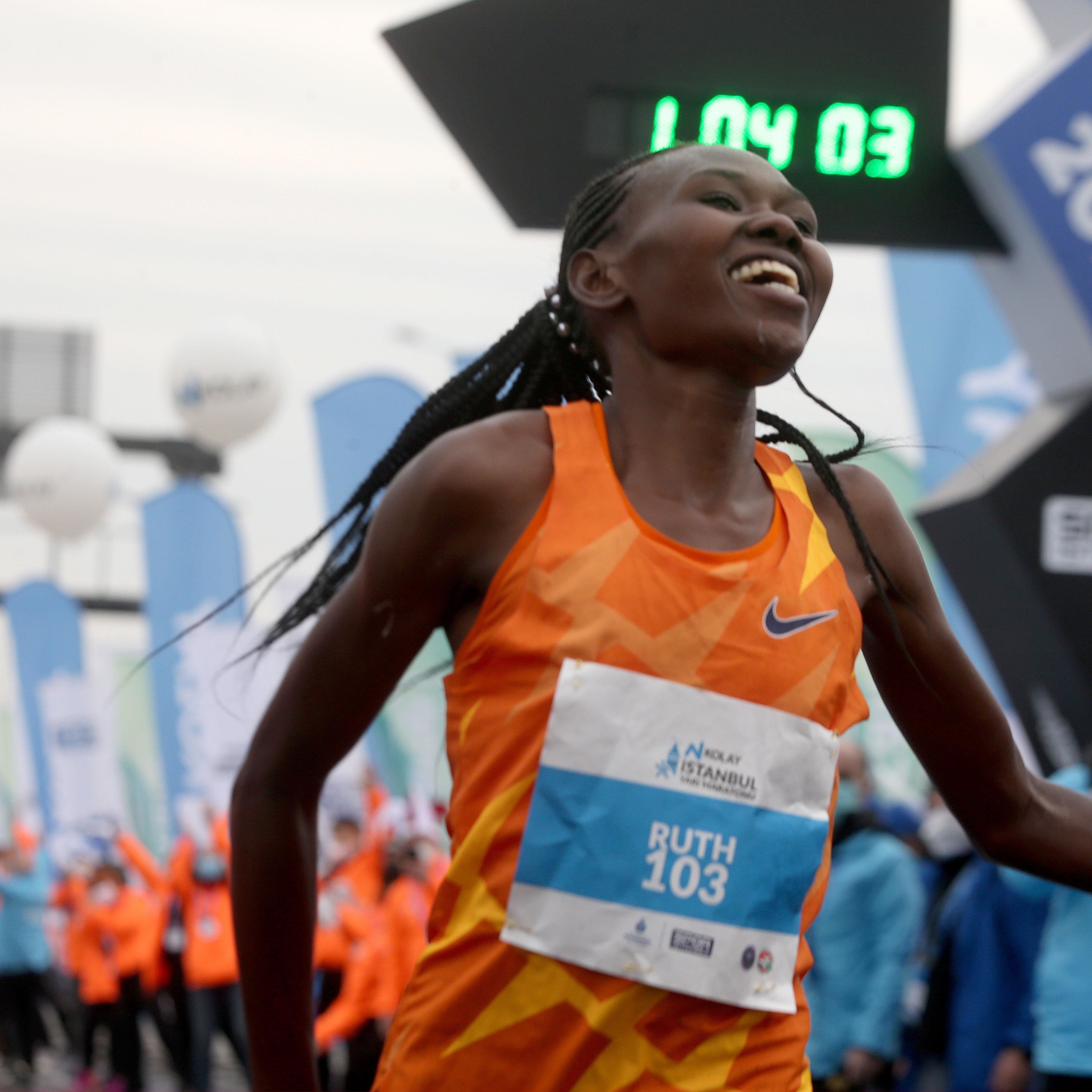
Kenya's Ruth Chepngetich shaved 29 seconds off the world half marathon record on Sunday and British triathlete Beth Potter is awaiting ratification of a world record time from a low-key 5km road race a day earlier.
Both athletes wore high-tech footwear made by different manufacturers.
"Let folk race and record new era personal bests," said Hutchings, who finished fourth in the 5,000m at the 1984 Los Angeles Olympics.
"A date needs to be identified retrospectively, then everyone would respect times in the right context. Athletes deserve that."
(04/07/2021) ⚡AMPLondon Marathon organizers will host a COVID-19 test event
London Marathon Events (LME) is set to host the Reunion 10K as the UK Government aims to gather scientific data on holding mass participation events during the COVID-19 pandemic.
The event on April 24 and 25 will be one of the pilots in the Events Research Programme, and is planned for Hatfield Park to the north of London.
It will consist of three separate 10-kilometer races, held over the weekend.
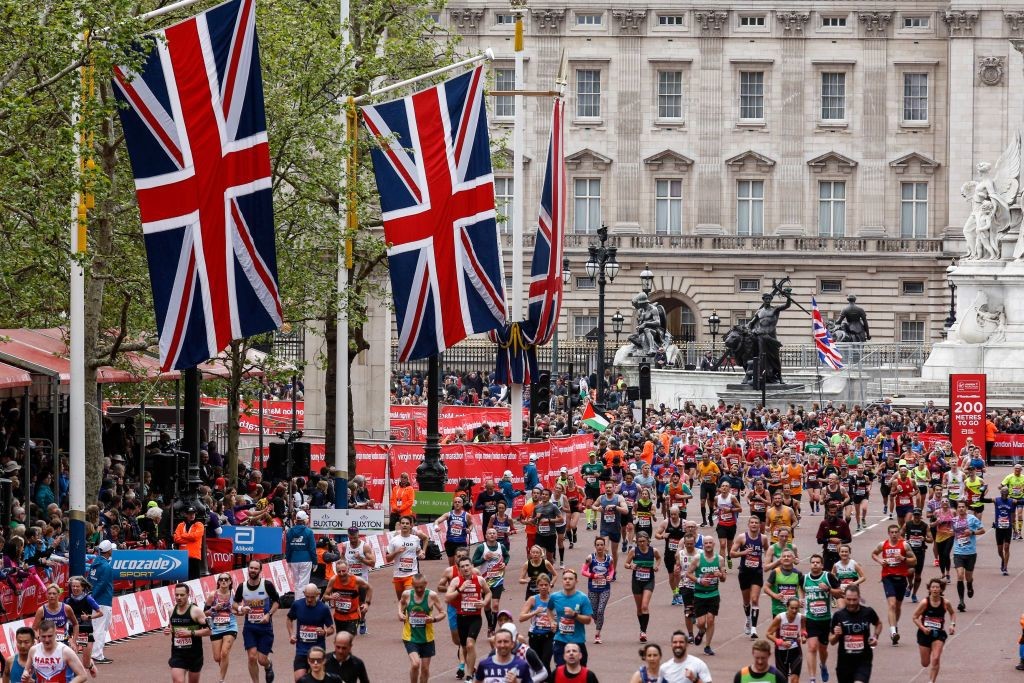
The format has been designed in cooperation with the Department for Digital, Media, Culture and Sport (DCMS), with the aim of understanding how mass participation events can go ahead as part of England's roadmap out of lockdown from June 21.
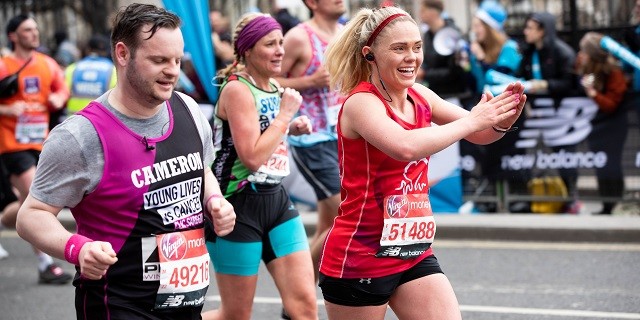
LME plans to have 3,000 participants and up to 3,000 spectators for each of the three races, which will all be configured slightly differently for data purposes.
The organization is working closely with Public Health England, Welwyn Hatfield Borough Council, Hatfield Park and other key stakeholders to host the event.
The races will collect scientific data from participants, spectators and staff which can be used to inform the DCMS as they plan a safe return for sport.
All attending the event will be required to take a COVID-19 polymerase chain reaction test before and after the event.
All will be asked if they have been vaccinated, but this will not be a requirement to attend.
Anyone testing positive before the event will not be able to attend, with participants having their entry fee refunded if they have.
"The Government's Events Research Programme is a very significant step towards the safe return of events and London Marathon Events, along with our fellow mass participation event organizers, is doing everything we can to assist the Government with this project," said Hugh Brasher, event director of LME.
"We would like to thank everyone involved for their support in putting on the Reunion 10K at Hatfield Park."
Entries will open on April 8.
It comes with the UK Government reportedly considering the introduction of COVID-19 vaccination passports, which would restrict the public from attending large events without being vaccinated.
This would not restrict people from attending pubs or restaurants or travelling on public transport, but it could stop non-vaccinated people from attending sporting events, as well as nightclubs and theatres where social distancing would be difficult.
(04/06/2021) ⚡AMPby Michael Houston
TCS London Marathon
The London Marathon was first run on March 29, 1981 and has been held in the spring of every year since 2010. It is sponsored by Virgin Money and was founded by the former Olympic champion and journalist Chris Brasher and Welsh athlete John Disley. It is organized by Hugh Brasher (son of Chris) as Race Director and Nick Bitel...
more...California International Marathon registration opens April 6
After being cancelled due to the pandemic in 2020, it appears the California International Marathon is on track to return this year. Registration opens at 9 a.m. Tuesday for the marathon, which travels from Folsom to Downtown Sacramento. This year's race is scheduled for Dec. 5.
An announcement from the Sacramento Running Association, which organizes the marathon, says "certain event details and amenities are still being determined due to changing health guidelines."
In a social media post, event organizers said the "participant cap is still somewhat uncertain," and registrations will be accepted on a first-come, first-served basis.
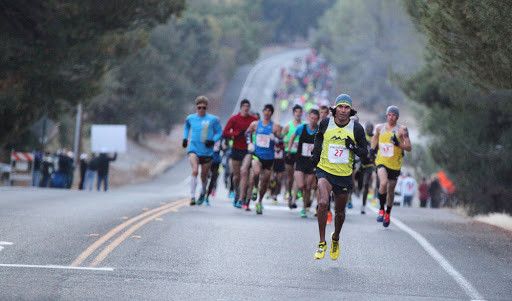
People who were registered for last year's marathon received a voucher for entry into a future California International Marathon through 2023. If you plan to use your voucher, you still need to formally register for this year's race. Additional information is available online.
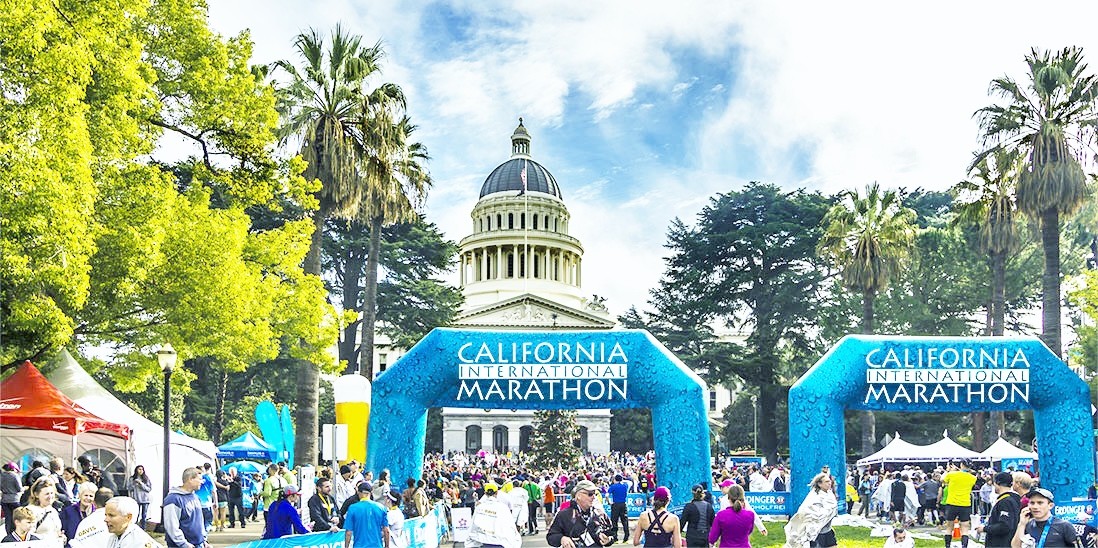
The event has attracted thousands of participants and spectators in the past.
Indoor events to resume
Marathon registration isn't the only sign of a slight return to normalcy. Most of California will be allowed to reopen indoor venues for performances, conferences and other events by April 15, state officials announced Friday. Indoor events were among the first activities to be closed as the Covid-19 pandemic touched down in California last year.
As larger parts of the population become vaccinated, California is ready to loosen its restrictions around events, state public health officials stated.
(04/06/2021) ⚡AMPby Sonya Sorich
California International Marathon
The California International Marathon (CIM) is a marathon organized by runners, for runners! CIM was founded in 1983 by the Sacramento Running Association (SRA), a 501(c)(3) non-profit organization. The SRA Board of Directors is comprised of runners with a combined total of 150+ years of service to the CIM. The same route SRA management created for the 1983 inaugural CIM...
more...2021 Little Rock Marathon Unveils its Medals
The Little Rock Marathon unveiled its 2021 finisher’s medals this weekend as it continued preparing for another sell-out event in the fall.
The 2021 Little Rock Marathon Race Weekend was originally slated for March 5-7, but was pushed back to November 19-21 to accommodate necessary changes due to COVID-19. This year’s race will again be held in downtown Little Rock and will benefit Little Rock Parks & Recreation.
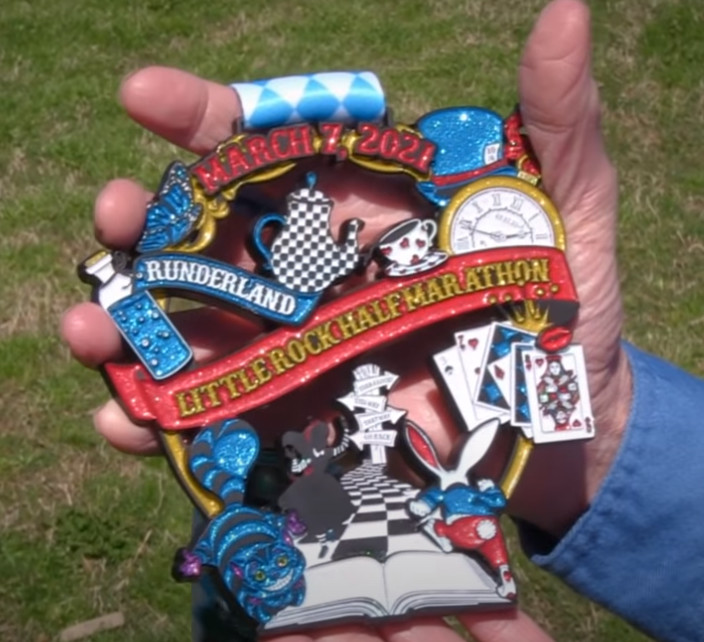
“For many years, the Little Rock Marathon medals have set a standard in the marathon industry,” said Geneva Lamm, Executive Director of the Little Rock Marathon. “Our medals are an extraordinary keepsake that celebrates each participant’s finish.”
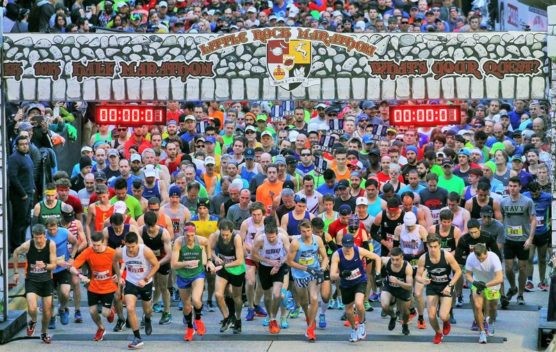
The 2021 family of finisher medals feature the race’s whimsical Runderland theme. This year’s marathon medal weighs more than 3 pounds. According to Lamm, the medal is a significant factor in the event’s growing popularity and sold-out races each year.
Other events taking place during race weekend include the Little Rock Marathon Health & Fitness Expo, the Little Rock Marathon, presented by the Arkansas Democrat-Gazette, the Little Rock Half Marathon, presented by Baptist Health, the Little Rock 10K, the Little Rock 5K, presented by Arkansas Federal Credit Union, and the Little Rockers Kids Marathon, presented by the Hatcher Agency.
The 2021 Little Rock Marathon is also sponsored in part by the Little Rock Convention & Visitors Bureau, the Heart of Arkansas, Premium Refreshment, Little Rock Marriott, Golden Eagle of Arkansas, Rock City Running, Loreal USA, KTHV Channel 11, Fence Brokers, and DataMax Office Systems.
Registration will be available online through 11:59 p.m. CST Friday, Nov. 12, 2021 or the race is sold out.
(04/06/2021) ⚡AMPLittle Rock Marathon
The mission of the Little Rock Marathon is provide a premier event open to athletes of all abilities, while promoting a healthy lifestyle through running and walking and raising money for Little Rock Parks & Recreation. Since inception in 2003, more than $1,093,000 has been donated to Little Rock Parks & Recreation. Little Rock Marathon Race Weekend is held the...
more...North Korea has withdrawn from Tokyo 2020 after the country cited coronavirus fears.
North Korea withdraws from Tokyo 2020 over COVID-19 fears.
A statement on the secretive state's official Sports in the DPRK Korea website said authorities want to "protect athletes".
The country has become the first to pull out of the rearranged Tokyo 2020 because of COVID-19.
Its decision comes just under a week after South Korean capital Seoul announced it had submitted a joint bid with the North for the 2032 Games to the International Olympic Committee (IOC).
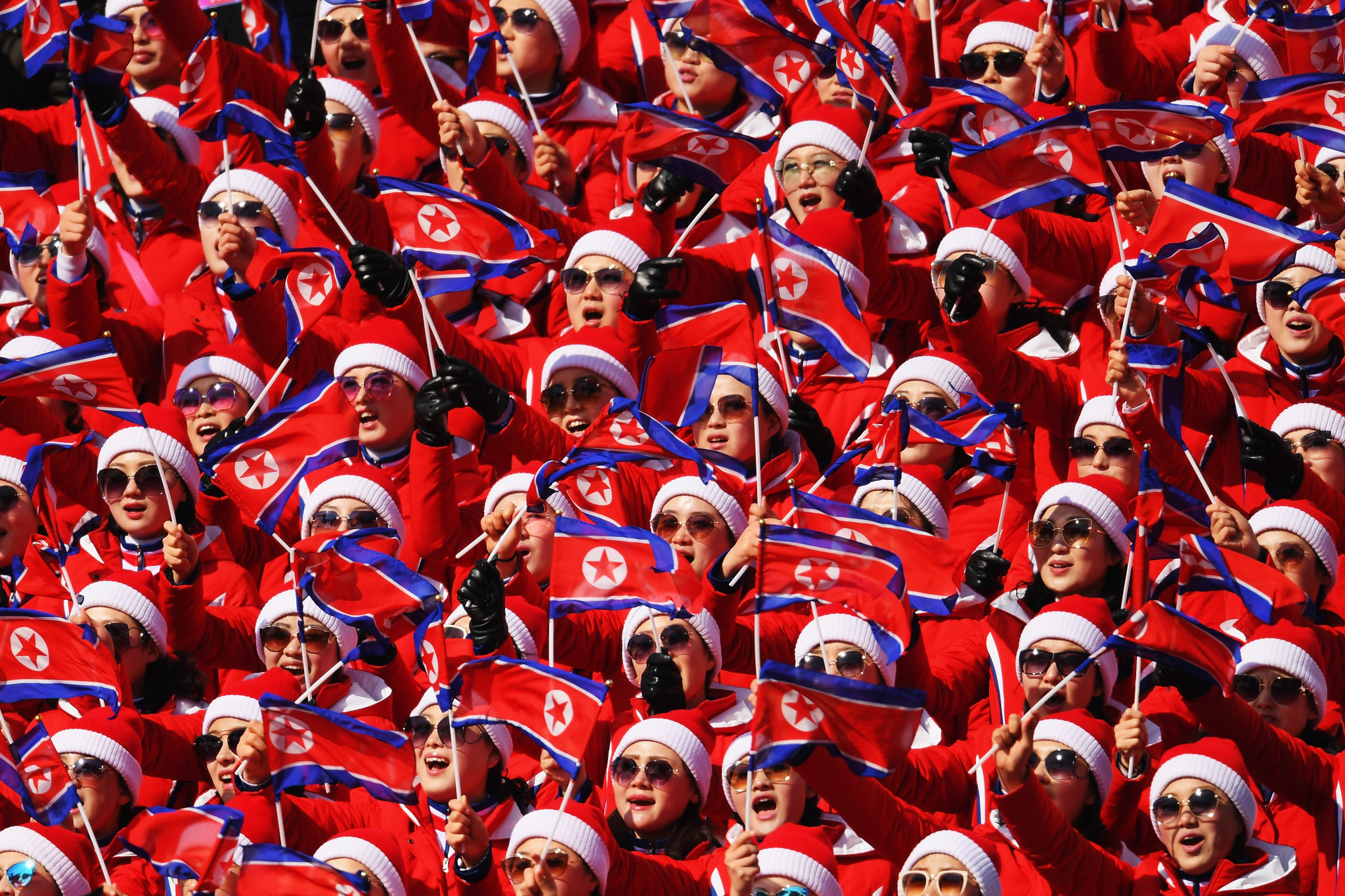
South Korean President Moon Jae-in had also said he wanted Tokyo 2020 to be an opportunity for dialogue between the bordering nations, which remain technically at war.
The Olympic Committee of the Democratic People's Republic of Korea held a General Assembly to discuss the Games in Japan.
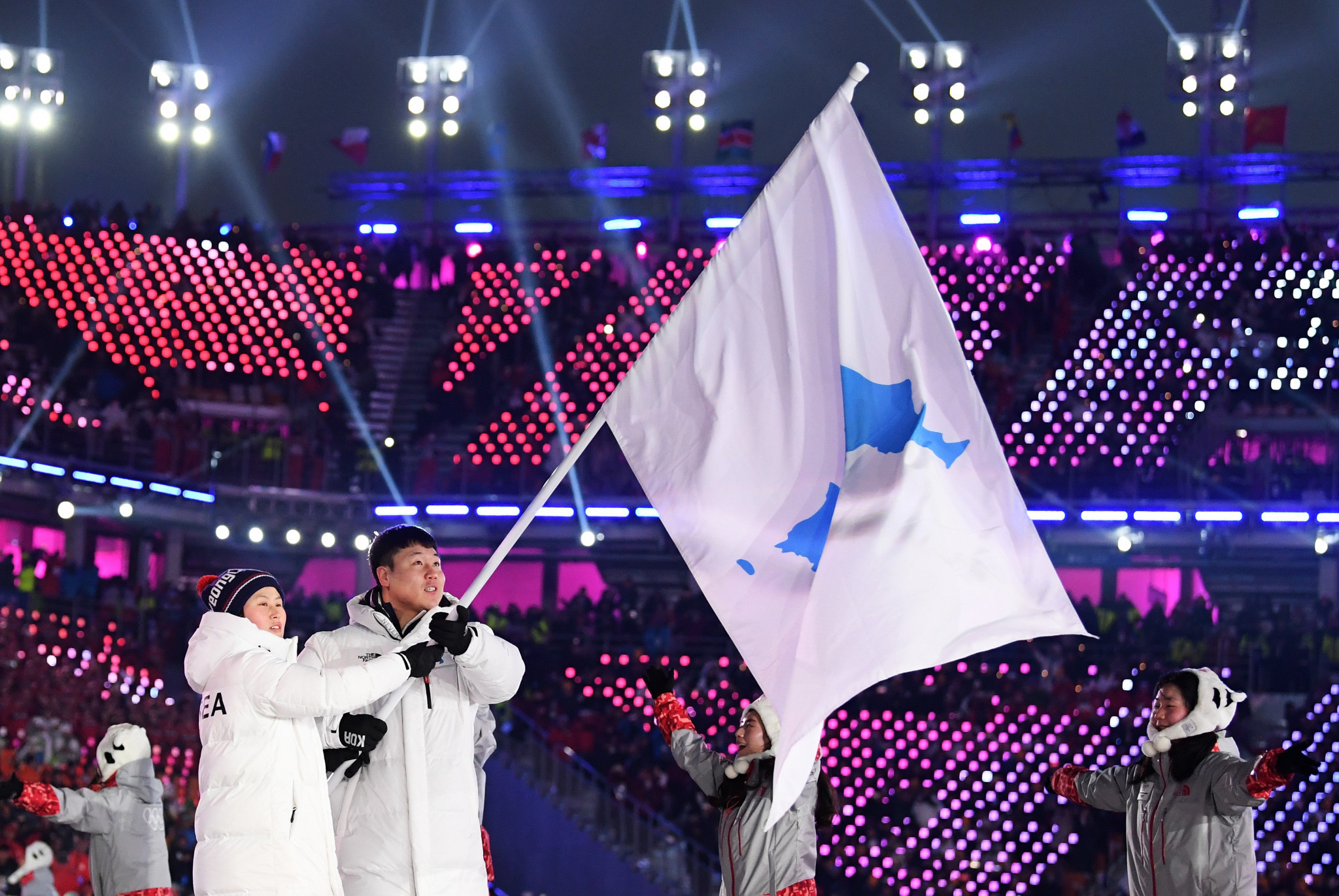
"The Democratic People's Republic of Korea has decided not to participate in the 32nd Olympic Games during the General Assembly to protect our athletes from the global health crisis situation related to the coronavirus as proposed by committee members," a statement said.
North Korea shut off its borders in January 2020 as the coronavirus pandemic first began to take hold.
The country has claimed it has no COVID-19 cases but this is believed to be unlikely.
In 1988, North Korea boycotted the Summer Olympics in the South's capital Seoul, but they were welcomed with open arms when their neighbour hosted the 2018 Winter Games in Pyeongchang.
A unified team took part in the women's ice hockey tournament and the two countries marched together at the Opening and Closing Ceremonies under a joint flag, with peace a key message.
The withdrawal from Tokyo will likely be felt particularly keenly by IOC President Thomas Bach, who has worked to improve sporting relations on the border and visited North Korean leader Kim Jong-un in Pyongyang in 2018.
He accepted the Seoul Peace Prize in October for his work and had previously discussed with Moon the possibility of the joint Olympic bid for 2032.
Pyongyang's relations with the west have been tense in recent years, particularly due to its nuclear programme and missile launches.
Tokyo 2020 host Japan's dealings with North Korea are particularly strained, with Pyongyang accused of abducting dozens of Japanese citizens in the 1970s and 1980s.
In 2017, Kim fired missiles over Japan and another launch into the sea last month again raised fears about the country's weapons expansion.
Former American President Donald Trump held high-profile talks with Kim in 2019 but the North's destruction of a joint liaison office on its side of the border in June highlighted how tensions have risen.
The Tokyo 2020 Olympics, which were postponed by a year due to COVID-19, are due to open on July 23.
North Korea won seven medals at the last Summer Games in Rio de Janeiro in 2016 - including two golds in weightlifting and gymnastics.
(04/06/2021) ⚡AMPby Dan Palmer
Tokyo 2020 Olympic Games
Fifty-six years after having organized the Olympic Games, the Japanese capital will be hosting a Summer edition for the second time, originally scheduled from July 24 to August 9, 2020, the games were postponed due to coronavirus outbreak, the postponed Tokyo Olympics will be held from July 23 to August 8 in 2021, according to the International Olympic Committee decision. ...
more...2021 B.A.A. 10K and Half Marathon will be held virtually
The 2021 B.A.A. 10K and the 2021 B.A.A. Half Marathon will be held virtually this year, the Boston Athletic Association announced Monday.
The B.A.A. 10K, which is presented by Brigham and Women’s Hospital, will have virtual race dates from June 25-27. The B.A.A. Half Marathon, presented by Dana-Farber Cancer Institute and the Jimmy Fund, will take place from September 17-19.
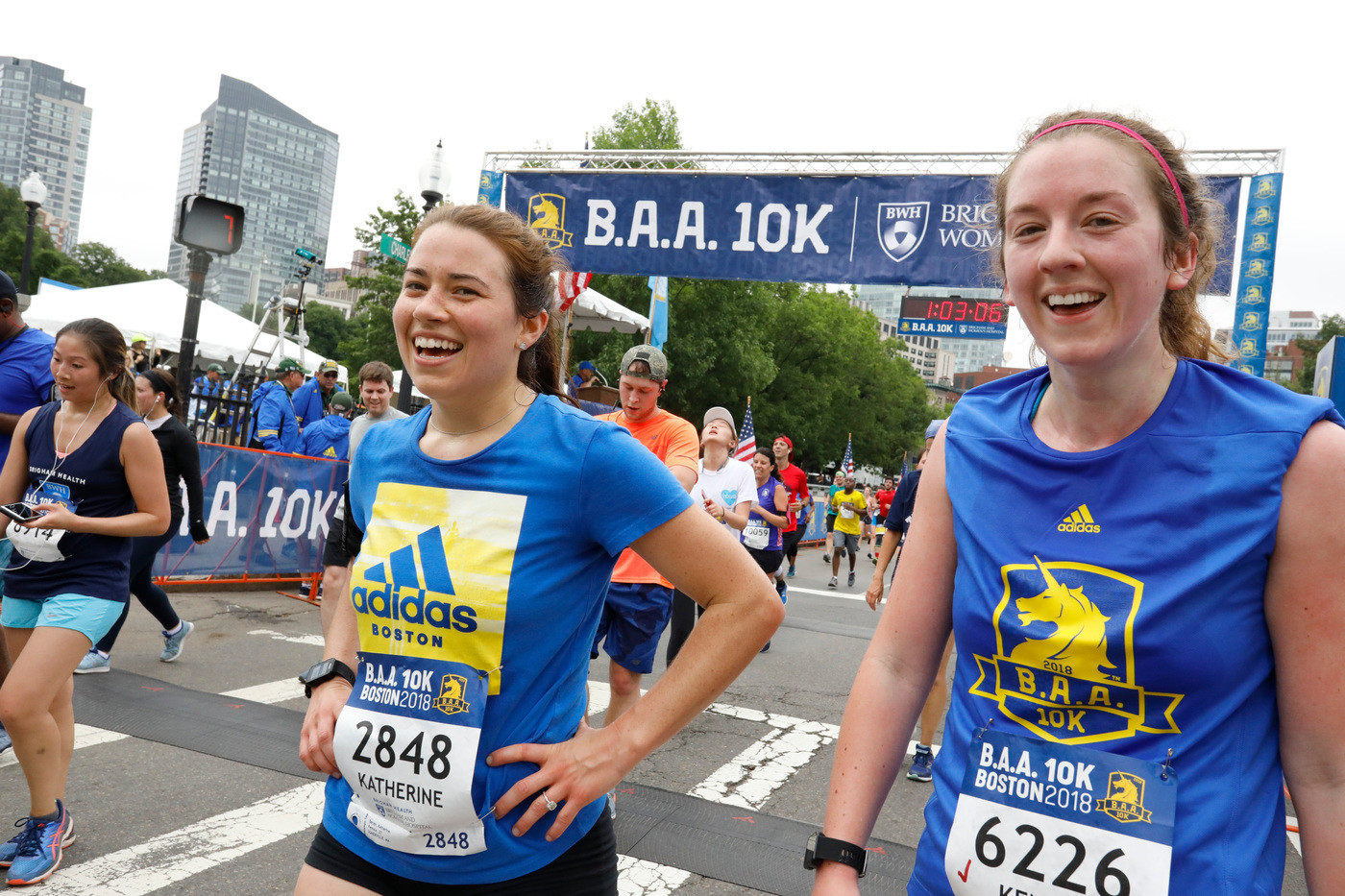
“Runners around the world can earn the signature unicorn medals and be active through the B.A.A. 10K and B.A.A. Half Marathon,” B.A.A. President and CEO Tom Grilk said in Monday’s release. “We look forward to continuing to engage new and experienced runners globally in the sport of running and helping people pursue active lifestyles.”
Runners can register for this year’s virtual 2021 B.A.A. 10K starting at 10 a.m on Tuesday, April 6, through the B.A.A.’s online platform Athletes’ Village. Runners can create a free Athletes’ Village account prior to the registration opening. All entrants will receive a virtual B.A.A. 10K toolkit, which will have signature race elements such as a printable champion’s breaktape, mile markers and and cheer cards.
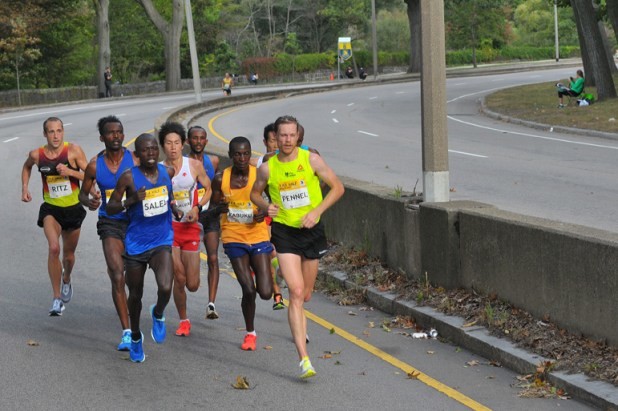
Registration dates and information for the virtual B.A.A. Half Marathon will be announced at a later date.
Both events are anticipated to return to an in-person format in 2022.
(04/05/2021) ⚡AMPB.A.A. 10K
The 6.2-mile course is a scenic tour through Boston's Back Bay. Notable neighborhoods and attractions include the legendary Bull and Finch Pub, after which the television series "Cheers" was developed, the campus of Boston University, and trendy Kenmore Square. ...
more...The importance of hydration during your runs
Why Hydration Matters
Dehydration in athletes may lead to fatigue, headaches, decreased coordination, nausea, and muscle cramping. Proper hydration is critical for preventing heat-related illnesses, such as heat stroke, which can have serious consequences.
Aside from all that discomfort, dehydration slows you down. One study showed that even a "small decrement in hydration status" on a warm day impaired runners' performance conditions affect your rate.
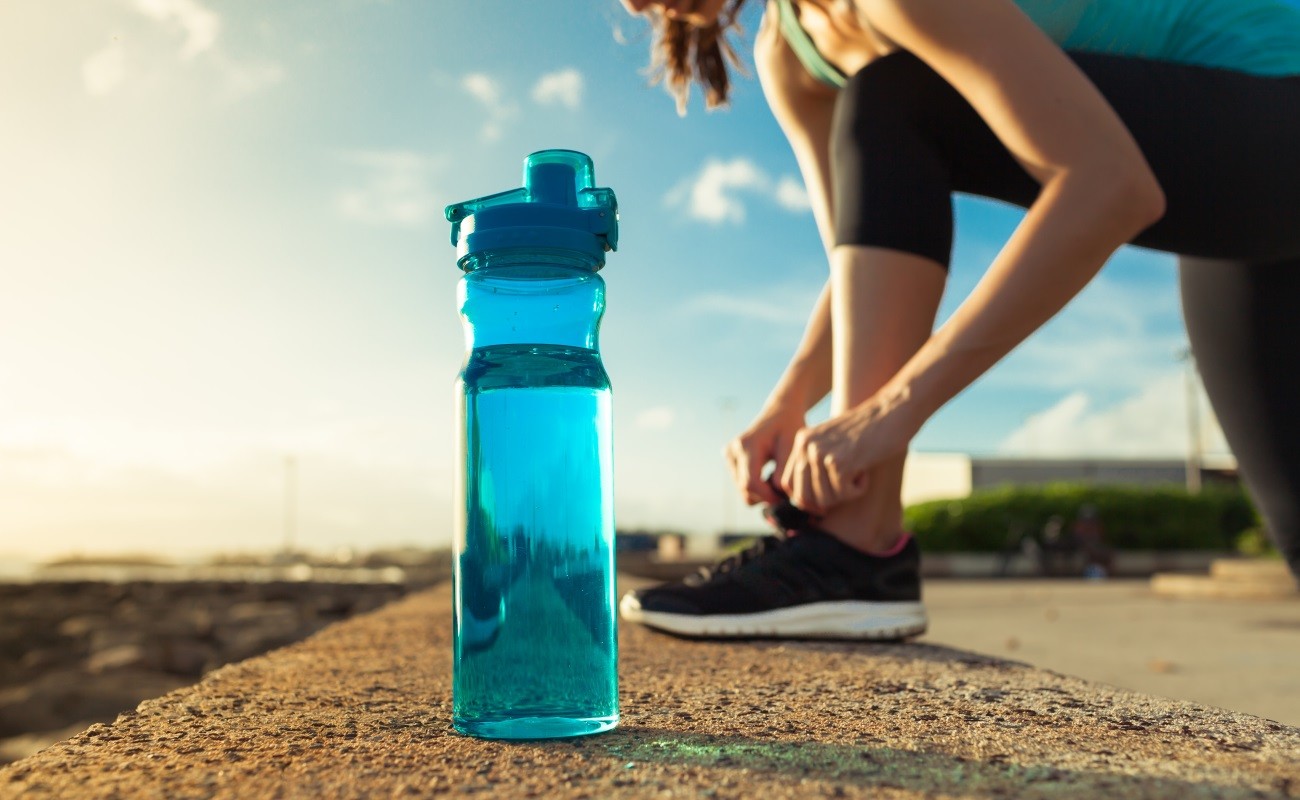
Signs of Dehydration
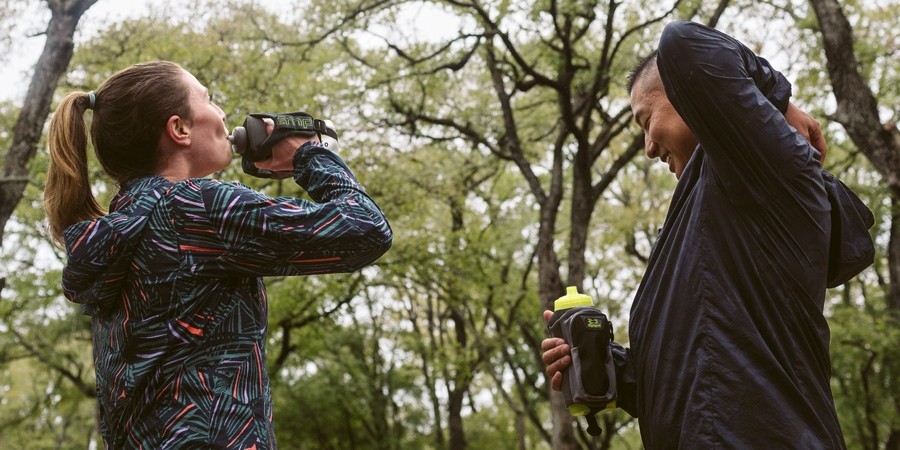
Be aware of the signs that you need more fluids. Early symptoms include:
Thirst, Dry mouth, Feeling fatigued or sluggish.
As dehydration progresses, symptoms can include:
Headaches, Muscle cramps, Nausea, Fatigue.
Pre-Run Hydration
Especially if you're doing a long run or race (more than 8 to 10 miles), it's important to make sure you're well-hydrated during the few days leading up to your long run. You know you're well-hydrated if you void large volumes of pale urine at least six times a day.
Drink plenty of water and non-alcoholic fluids. Not only does alcohol dehydrate you, but it can also prevent you from getting a good night's sleep. It's not a good idea to run with a hangover, because you'll most likely be dehydrated when you start running.
An hour before you start your long run or race, try to drink about 16 ounces of water or other non-caffeinated fluid. Stop drinking at that point, so that you can void extra fluids and prevent having to stop to go to the bathroom during your run.
Drinking on the Run
You will need fluids every 15 to 20 minutes during your run, so you need to either carry it with you or make sure it is available along the way (say, at a drinking fountain or by running a loop that takes you back to your home or car where you have extra water). Drinking small amounts frequently helps your body absorb the liquid better, and you won't have that feeling of it sloshing around in your stomach.
Set a timer on your watch or phone to prompt you to drink. Or use landmarks or mile markers as reminders. One study found that athletes who had a hydration plan and wrote it down drank more than those who didn't have a plan.
If you forget to drink and get behind on hydrating, it's hard to catch up. You may have to walk for a bit to conserve energy and cool down.
If you have to carry your own fluids with you, try handheld bottles, packs (like backpacks or vests), or fuel belts; it's a matter of personal preference. However, if you're running in a race, you shouldn't have to carry fluids because there will be water stops on the course.
Post-Run Hydration and Recovery
Don't forget to rehydrate with water or a sports drink after your run. Some people feel the effects of dehydration hours after their run because they failed to drink enough fluids after they finished. Weigh yourself after your run. You should drink 20 to 24 fluid ounces of water for every pound lost. If your urine is dark yellow after your run, you need to keep rehydrating. It should be a light lemonade color.
Common Hydration Mistakes
Staying alert to these common problems can help you stay healthier and more comfortable during your runs.
Drinking Too Little
Make a plan and stick with it. Be careful not to run out of water during a long run. You can't always count on drinking fountains (they can break) or stashing water along your route (someone might take it, or it will get too hot to use).
Drinking Too Much
The issue is not so much taking in too much liquid. It's drinking too much without replacing sodium, which can lead to hyponatremia. If you gain weight during a run, you are drinking too much. Add in a sports drink, salt shot, or salty snack to replace the sodium you're losing when you sweat.
Drinking the Wrong Fluid
As noted, drinking plain water when you need electrolytes could be trouble. It's also a problem to drink something new and different during a race. Work out your hydration plans and preferences during training, or else your performance (or stomach) might suffer.
Gulping Instead of Sipping
When you're running, your digestive system slows down because blood is diverted away from it. So taking giant gulps of water can be hard on your belly. Try small sips instead—even immediately after your run, when you might feel like chugging a whole bottle of water. Take it slow.
(04/05/2021) ⚡AMPby Christine Luff
2016 Scotland’s Olympian Beth Potter breaks 5K world record with 14:41 run in Great Britain
Scottish runner-turned-triathlete Beth Potter beat the 5K road world record on Saturday at a race in Barrowford, U.K., about an hour north of Manchester, where she ran an amazing 14:41. Organizers of the race, which is called the Podium 5K, say their course is the fastest in Great Britain, and Potter’s run certainly bolsters that claim.
Potter bettered the previous world record of 14:43 (which Kenya’s Beatrice Chepkoech set in Monaco in February) by two seconds.
According to fastrunning.com, Potter missed the start of the women’s race, but she was luckily permitted to run in the ‘B’ wave of the men’s event. While missing the start of a race is a nightmare that haunts all runners, this actually might have helped Potter, as she had other 14:40-range athletes to run with who could push her right to the finish.
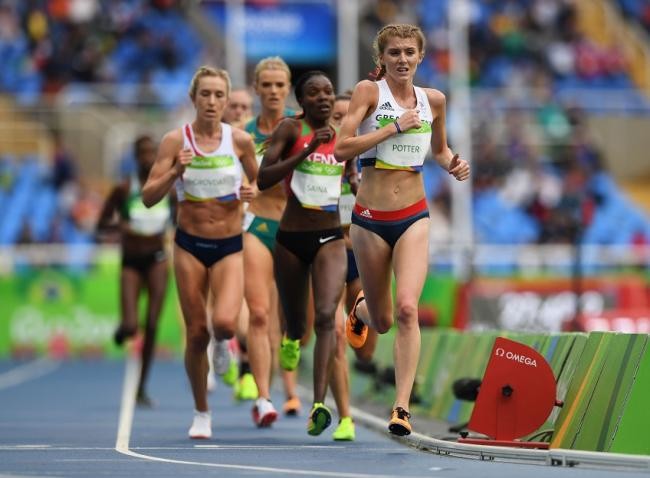
She very well could have beaten the record had she run with the women’s field, but having constant competition no doubt helped her mentally. When Potter crossed the finish line, she was visibly surprised to see the clock.
Potter’s time beat Chepkoech’s world record by two seconds and Paula Radcliffe‘s British 5K record of 14:51 by 10 seconds. She also smashed her own 5K PB of 15:24 — a time she ran at the same race in Barrowford last year.
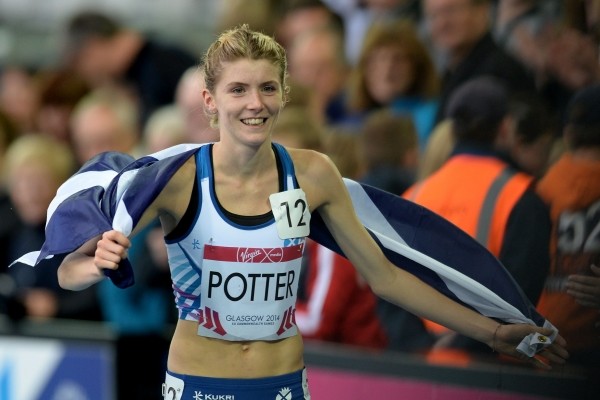
It is important to note that, while Potter bettered the world record (a result that World Athletics reported is unlikely to be ratified), one woman has run a road 5K faster. In September 2017, Kenya’s Joyciline Jepkosgei ran a 14:32 5K split en route to the 10K world record at a race in Prague. At the time, though, World Athletics (then IAAF) did not recognize the 5K as a world record event, and even though Jepkosgei’s run is the fastest in history, it’s not the official world record.
In no way does this diminish Potter’s result, and regardless of whether her run is ratified as the world record, she officially owns one of the fastest 5K runs in history.
ASICS Metaspeed
Not only did Potter’s record support the claim made by race organizers that their course is the fastest in the U.K., but it is also great for ASICS, her main sponsor, as she wore the company’s new shoe — the Metaspeed Sky — in her win.
The Metaspeed is the latest carbon-plated shoe from ASICS, and it’s the company’s response to Nike in the “super shoe” race. ASICS only just released the Metaspeed at the end of March, but Potter has already delivered the shoe’s first world record.
Turning to triathlon
Potter represented Great Britain at the 2016 Olympics and 2017 world championships in the 10,000m. She is also a former 10,000m British champion. According to Athletics Weekly, when she struggled to find sponsors in running, Potter decided to switch sports and focus her attention on triathlon instead of the track.
(04/05/2021) ⚡AMPby Ben Snider-McGrath
2021 Volkswagen Prague Marathon set for October 10
Throughout the pandemic and against all odds RunCzech has found dozens of creative ways to stage safe, small running events, along with other ways of keeping the running community engaged.
But finding an opportunity to stage its signature event—the internationally acclaimed Volkswagen Prague Marathon—has eluded them until now.
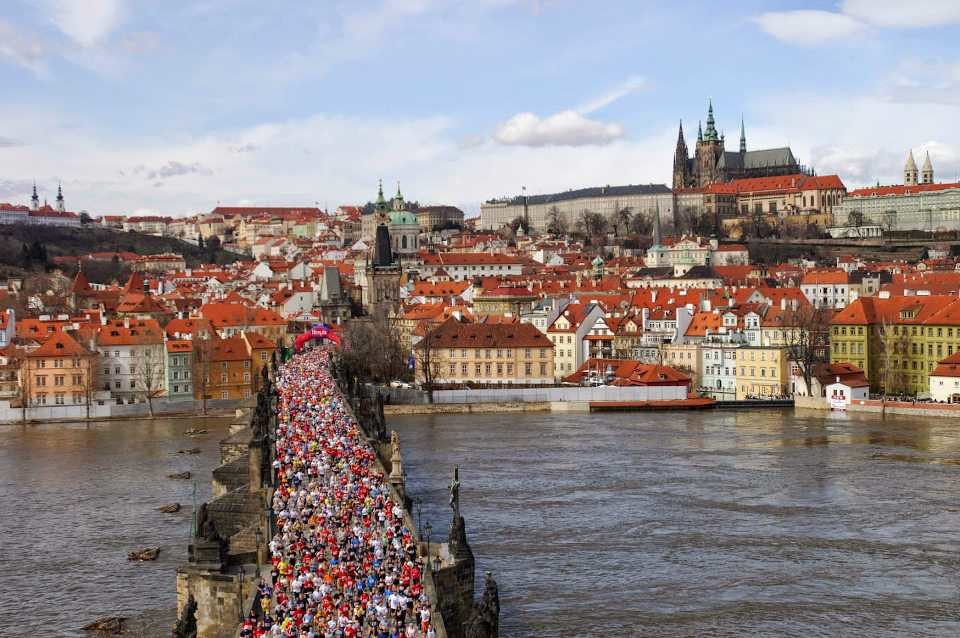
Health and public officials feel that moving the race to the autumn will make it possible for RunCzech to safely host a large-scale event, and accommodate the thousands of fans and volunteers who will come out to support the participants on October 10.
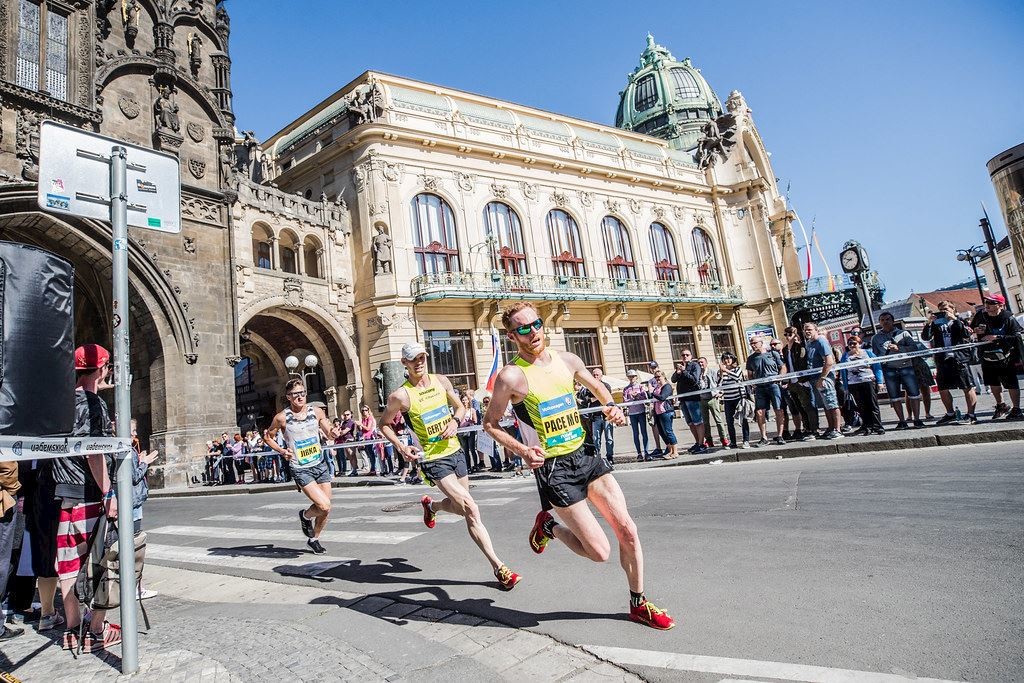
Starting numbers will be in high demand. The capacity of the event will be determined with health and government officials with the priority being runners‘ safety and health.
Runners who registered in 2020 will have the option of transferring their registration to 2022.
RunCzech will also stage a bonus event, the Volkswagen Prague Virtual Marathon from 3–31 May, limited to 10,000 participants. Priority will be given to those who entered the Volkswagen Prague Marathon 2020.
(04/05/2021) ⚡AMPPrague Marathon
The Volkswagen Prague International Marathon is considered by many, to be one of the top 10 marathons and invariably contains a number of high profile runners. Winding through the streets of one of Europe's most beautiful cities it is a spectacular race. And with a mainly flat course there is the chance for a personal best. Since its inception in...
more...The science behind the runner's high
Have you ever finished a run and felt like you could take on the world? Or returned from a jog in a better mood or with greater mental clarity than when you set out? Then you’ve likely experienced the ‘runner’s high’ and will understand why, during times of stress or needing to calm a busy mind, running seems the perfect remedy.
“It begins with this peace of mind and then a greater ease of movement, a sense of power and confidence, optimism and hope, and you will often hear runners describe feeling loving and connected to everyone and everything,” explains Kelly McGonigal, a psychologist, educator and author of The Joy of Movement. “So, what could possibly be going on in the body and the brain that would make you feel powerful, hopeful, faster, more confident and more loving?”
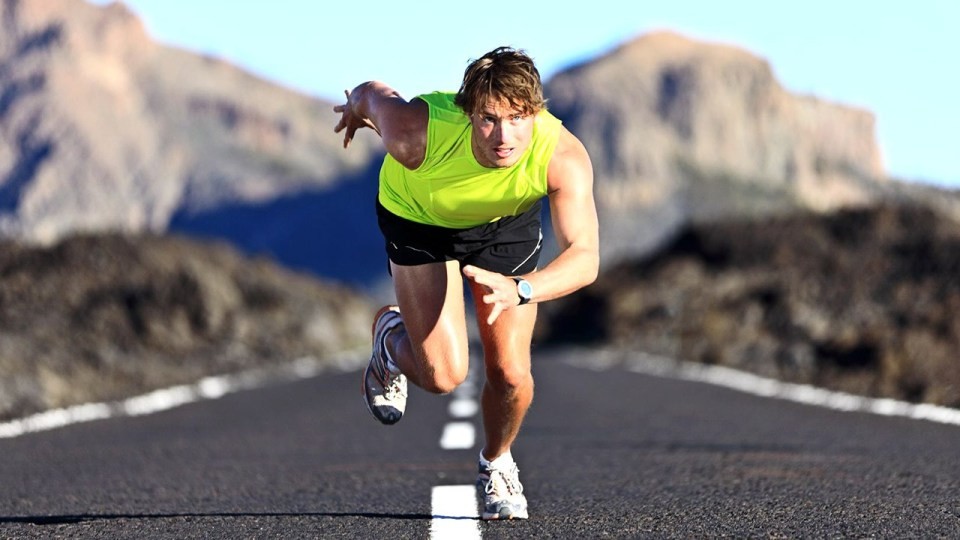
Speaking during this week's World Athletics 'Run Anywhere' Webinar in collaboration with Mass Participation World, McGonigal answered that question, plus many more.
“It turns out that it’s caused by a really reliable change in brain chemistry that kicks in once you have been in continuous motion for about 20 minutes and it’s not only the endorphin rush that so many people have heard about,” McGonigal explains, as she delves into the science behind the runner’s high.
“The runner’s high is primarily driven by endocannabinoids, which are the brain chemicals that cannabis mimics, but when you are running and endocannabinoid levels naturally increase, that is what produces this powerful sense of an inner peace, empowerment and connection to others.”
Run to become a better you
“The thing that I find so fascinating about the runner’s high is it is like the perfect neurobiological change to make you a better version of yourself,” McGonigal tells Chris Robb, CEO and founder of Mass Participation World, during the webinar. “I think that is why so many people go for a run and then they feel like they can take on the world.
“And it lasts for hours. So even though you might only feel that peak high during a run or just after the run, we know that those brain changes last and they create this upward spiral, so people often report feeling less stressed, getting more things done and having better interactions with other people, for hours after a run.”
Hunting that high
“There are a few things you can do if you want to get the high a little bit faster,” McGonigal says. “For example, listening to music early in a run can actually kick start the process – release more endorphins and dopamine and adrenalin – so that you can start to feel some of that high sooner.
“The more you run or exercise, your brain actually learns how to more reliably produce that high. Part of that is because exercise, and running in particular, has this interesting effect on your brain where it strengthens your reward system and that includes endocannabinoids and endorphins. All the brain chemicals that make you feel good and that help you be motivated – exercise actually strengthens that system so that it kicks in sooner, you can sustain it longer and you get a bigger jolt of joy, hope or pride, from anything that would naturally trigger that system, and part of that includes the runner’s high.
“It seems to take about six weeks of regular training for people to see these structural changes in the brain that make it easier not only to get the runner’s high, but to experience more joy, pleasure, hope and motivation in everyday life. This is one of the reasons that running is such a powerful antidepressant and so good for our mental health, because it changes the brain in this way.”
Moving forward together
One of the many challenges posed by the pandemic has been the restriction on in-person interactions, with virtual and solo events having replaced mass participation races. As we edge closer to the return of more traditional event forms, that could further impact our enjoyment of the activity, McGonigal adds.
“Humans have always needed to move together to survive and to thrive. A race or an event is basically a way to rehearse our fundamental human interdependence,” she says. “We know that when you move with other people, you feel like you are part of a pack and you are all headed in the same direction, even if there’s an element of competition in there – your brain interprets that as being a part of something bigger than yourself.
“There are all sorts of words that people use to describe it – there’s ‘muscular bonding’, ‘we-agency’ and ‘collective joy’ – but we know that we are wired to experience a massive endorphin rush when we move with other people. A sense of being connected and a sense of collective strength. What could be a better way to experience that than moving forward together?
“So many people experience that when they are part of a race but also what I have heard from so many people who engage in races is also that powerful ability to support other runners and to receive help from other runners, whether it is getting water at an aid station or encouraging someone who has slowed down a little bit and telling them that they can do it. There is something about a race that allows you to really lean into what it means to be a part of a collective effort where sometimes you are the one who needs that extra help and encouragement and sometimes you are the one that has something to offer.
“I wouldn’t underestimate the role that the aspect of events play in why people feel this tremendous sense of togetherness. That is what we need to do for all sorts of crises and challenges in life – we need to learn how to be open to the support that is available to us and also tap into our inner strength to keep going and look for how we might be able to reach out and help others.”
Green exercise
While all movement can lead to experiencing the ‘runner’s high’, McGonigal highlights the additional benefits of getting outside. “People who exercise outdoors report some really profound experiences – a tremendous sense of relief of anxiety, a feeling of being at peace or at one with the universe,” she explains.
“There is something going on when people run outdoors, it’s almost like people are having a switch flipped in their brains that puts them into this transcendence state. As it turns out, we now know from studies that when people are active outdoors it actually creates a kind of focus, mindfulness and mind quieting that looks a lot like what happens if you train in meditation for decades and spend tens of thousands of hours learning to focus the mind and calm the mind – people experience this spontaneously when they run in nature. That is part of what makes ‘green exercise’ so special. It can be a really spiritual experience for a lot of people.
“People report really feeling connected to life itself. When we are out in nature, we shift into a state of having to be aware of our environment and that really is part of what it means to be human – to figure out how to navigate the world and how to be a part of the natural world.
“When you’re talking about trail running or really challenging races, you are getting literal physical feedback from your body that says who you are is tough, who you are is capable, who you are is someone who can adapt and push through and persevere and figure things out and put one foot forward even when every cell in your body is screaming to stop. Once you have that embodied knowledge of your own strength, when other challenges come up in life, it kicks in. It is a physical memory that you are someone who can overcome obstacles, that you can do things that other people can’t or other people won’t, that when part of you wants to give up, you already know there is a part of you that will choose to keep going when it matters and that you can trust that part of yourself.”
Did you know?
“There is bacteria in dirt that actually acts as an antidepressant when you inhale it, like when you kick up dirt on the running trail,” McGonigal smiles. “It’s like in order for us to be at peace, we actually need to literally breathe in the natural world.
“It doesn’t have to be ideal running weather – it can be in the rain, it can be in the cold. Research shows that being in different types of weather and environments can bring out different benefits of green exercise. Even in the cold and rain, don’t be afraid of the outdoors. Often when you give in to allowing yourself to be a part of it, you can reap the benefits even if it’s not the ‘perfect’ run day that you imagined.”
(04/04/2021) ⚡AMPby World Athletics
8 reasons to give ultrarunning a try
Ultramarathons are pretty daunting, but you should run one anyway
This might be a tough sell, but you should run an ultramarathon. We know that the idea of running 50K, 100K or even more might not sound like something you want to do, but that could just be because you haven’t trained properly for it. After all, when you first started running, 5Ks, 10Ks and regular marathons probably sounded daunting, but you trained well and got through them. Not convinced? Here are a few more reasons to at least consider testing the waters of ultramarathons at some point in your running career.
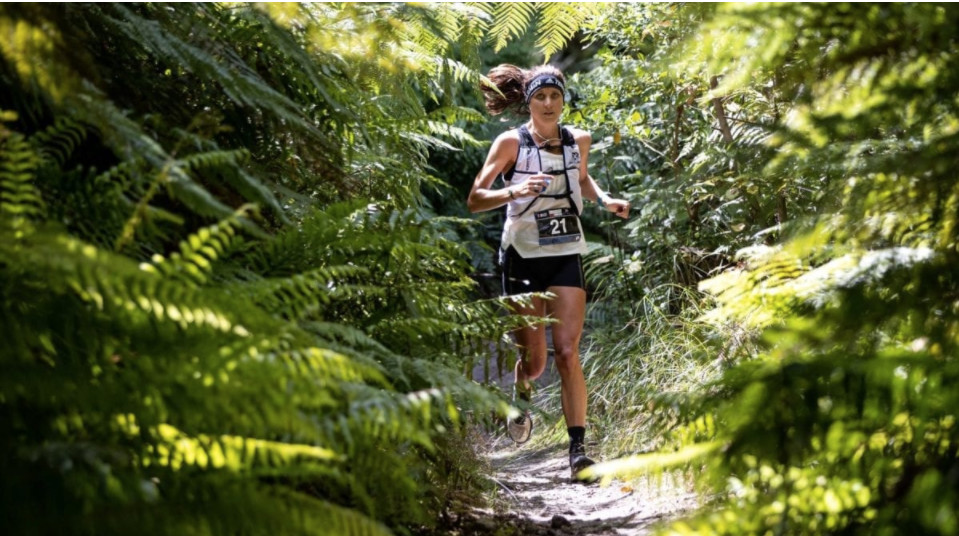
Bragging rights
We don’t recommend doing anything simply for the attention it may bring you, but there’s no denying that ultrarunning will impress people. Most non-runners will be impressed if you tell them that you’ve run a marathon before, so you’ll blow their minds when you say you ran an ultra. A lot of people don’t even know what an ultramarathon is, and when you tell them how far you ran, they’ll think you’re amazing.
Mental challenges
Any long-distance race requires mental toughness, but the farther you go, the more you need it. Venturing past 42.2K will take you from a mostly physical endeavour to a mostly mental one, and that’s when you’ll learn more about yourself. Plus, you’ll become stronger mentally thanks to ultras, and you can apply that mental toughness to every other type of race you enter in the future, which will only help you on the course.
You could become obsessed with it
Some people might view this as a reason not to take up ultrarunning, but we think it’s definitely a reason to do it. As unattractive as running 100 miles might seem right now, after your first 50K, you shouldn’t be surprised when you feel the need to enter another ultra-distance race. Even if you tell yourself something like “Never again” during the race, we’re willing to bet that you’ll be asking “When can I do that again?” after you reach the finish line
More racing opportunities
If you add ultra distances to your list of options when picking your race schedule, you’ll only be increasing the number of racing opportunities in your life. Can’t find a marathon to race on a certain weekend this summer? If you’re open to running farther than 42K, you have more of a chance to fill that slot with an ultramarathon.
The community
Everyone who has done an ultra mentions the community and how great it is. The running community in general is awesome, but as you get into more and more specific groups within the sport, that we’re-all-in-this-together kind of feeling only intensifies. Also, since an ultra is such a huge undertaking, bonding with your fellow athletes is even easier than usual, because you’re all in for the same long and arduous experience.
It’s not over until it’s over
If you’re an athlete who races to win, then an ultramarathon is a great place for you, because no gap is insurmountable. You could be an hour behind the race leader, but in a run that lasts dozens of hours or even multiple days, that’s nothing, and it’s 100 per cent possible to chase them down and take the win. In a marathon, on the other hand, even just a 10-minute gap can be impossible to overcome.
It’s not permanent
Just like any kind of race, if you enter an ultra and don’t like it, you can leave that part of your life behind and never try it again.
It could be your forte
Working off that fact, there’s also the chance that you’ll fall in love with ultrarunning and actually be quite good at it. If you don’t try, you’ll never know. If you do try and you don’t like it, you can forget about it, but if you love it, then it can become your new go-to type of racing.
(04/04/2021) ⚡AMPby Running Magazine
High school runner crawls across finish line to sub-9 two-mile
Gavin Sherry collapsed right before the finish line and crawled to an 8:57.67
Last weekend, the track world was impressed yet again by another incredible performance by high school phenom Hobbs Kessler, who closed a two-mile race with a 55-second final lap, crossing the finish line in first place in 8:39.04. Given that Kessler was 10 seconds ahead of the second-place finisher, it would have been easy to miss the action that happened behind him, but those who stuck around got to watch as Connecticut runner Gavin Sherry collapsed in the final few metres of the race and crawled to the finish line in 8:57.67.
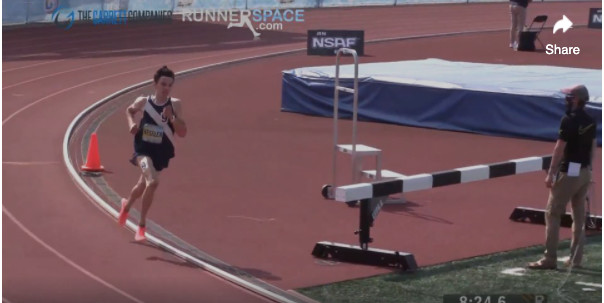
It looked as though Sherry would cross the line in third place, but his legs gave out just before the finish. While he struggled to get back on his feet, two other athletes passed him and he managed to stumble across the finish line in fifth, before collapsing immediately upon completing the race. While this is likely not the finish the high school senior was looking for, it was a demonstration of the athlete’s grit and determination. Despite his struggle, he was still able to go sub-nine minutes in the race, an impressive time for a high school athlete in and of itself.
You may not have heard of Sherry, but he has been one of the top high school runners in Connecticut for the last couple of years. He boasts an indoor two-mile PB of 8:53, which he set during his first-ever indoor track season as a sophomore last February, and last year he was named the Gatorade Connecticut Boys Cross Country Runner of the Year.
In an interview last year with a local newspaper, Sherry explained that he didn’t feel (at the time) as though he’d pushed himself to his limit, but that trying to find out where that limit is is what he enjoys so much about track.
“To me, that’s why I love the sport,” Sherry said. “It’s really just trying to explore how far you can push yourself before you break. So far I haven’t really had an experience where I’ve broken.”
It appears as though last weekend, he did finally have that experience, but he proved in that moment that he has the ability to push through it. The race may not have been a personal best for Sherry, but with the amount of determination he displayed, he will certainly be one to watch over the coming years.
(04/04/2021) ⚡AMPby Running Magazine


